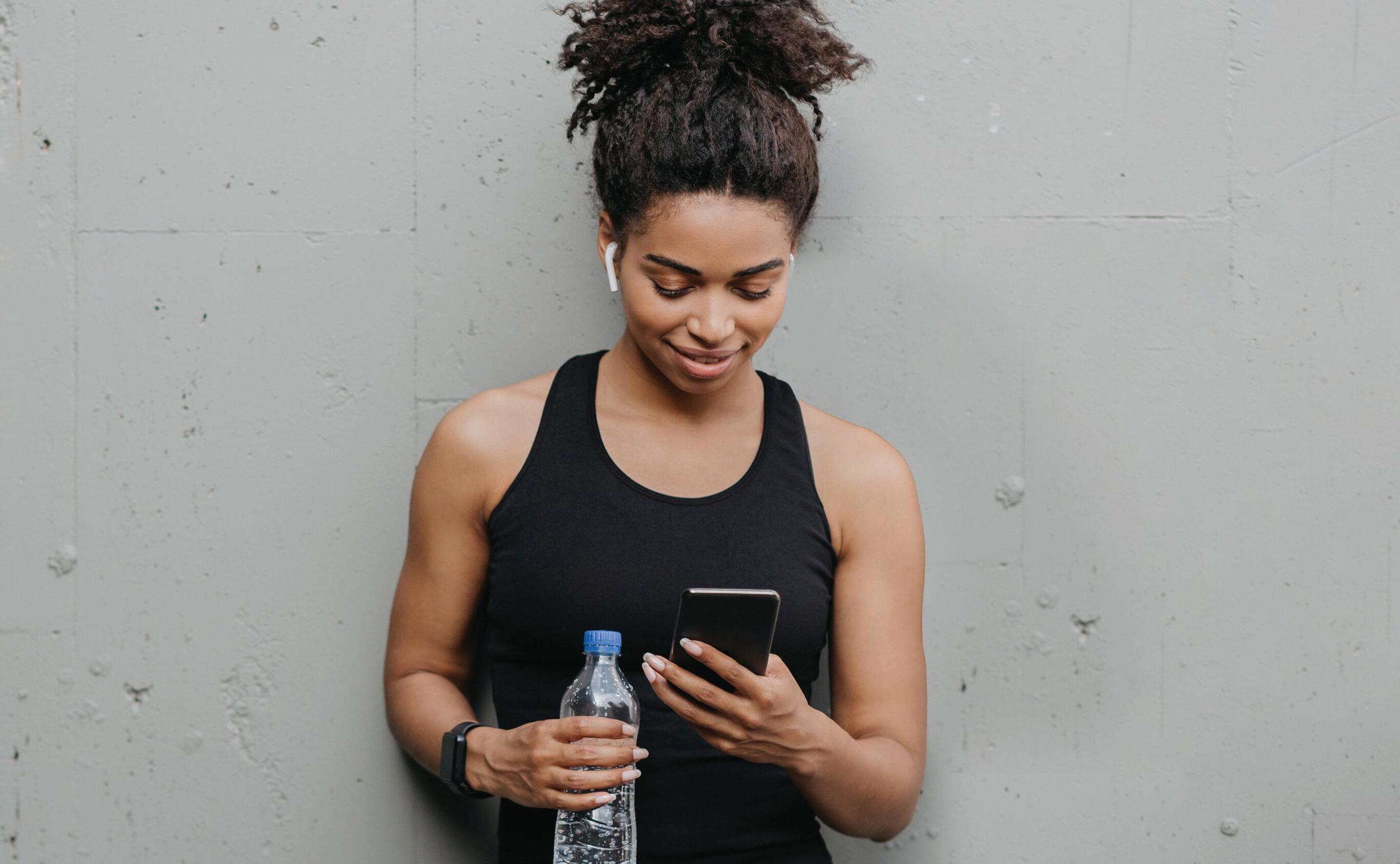7 ways to SURVIVE THE CASH CRUNCH



7 ways to SURVIVE THE CASH CRUNCH


She’s the queen of TikTok with a hit podcast, too, but this content creator is intent on keeping it real while raising her family
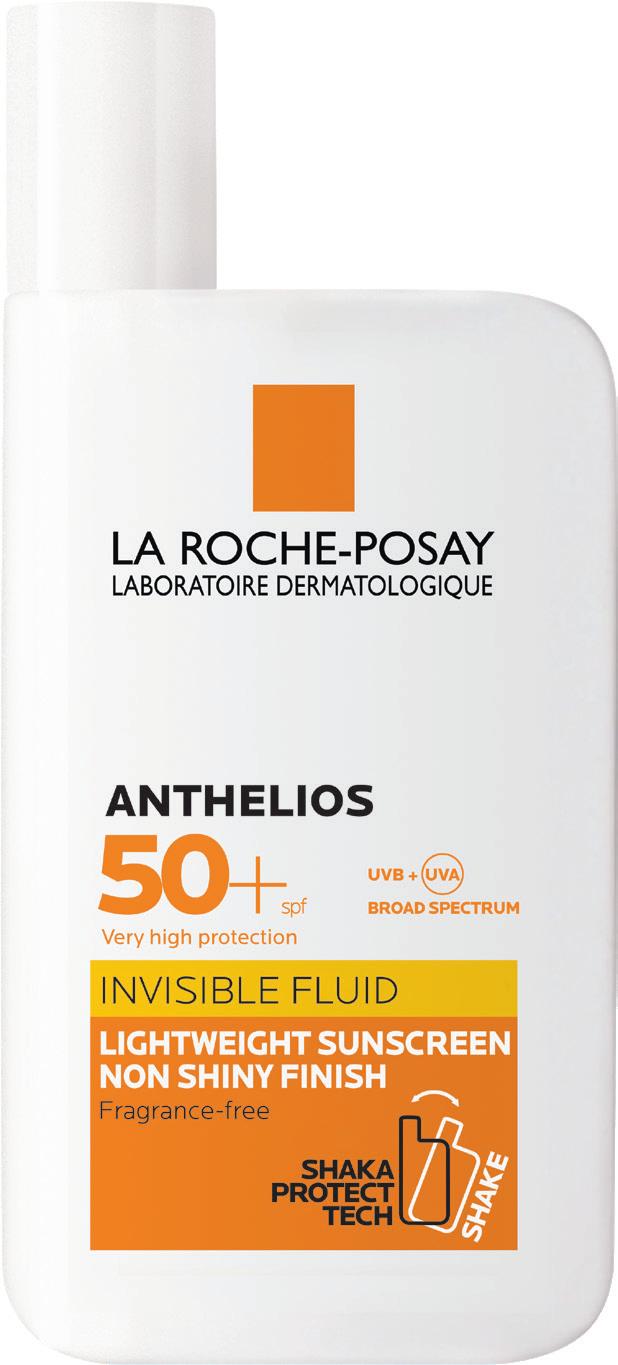






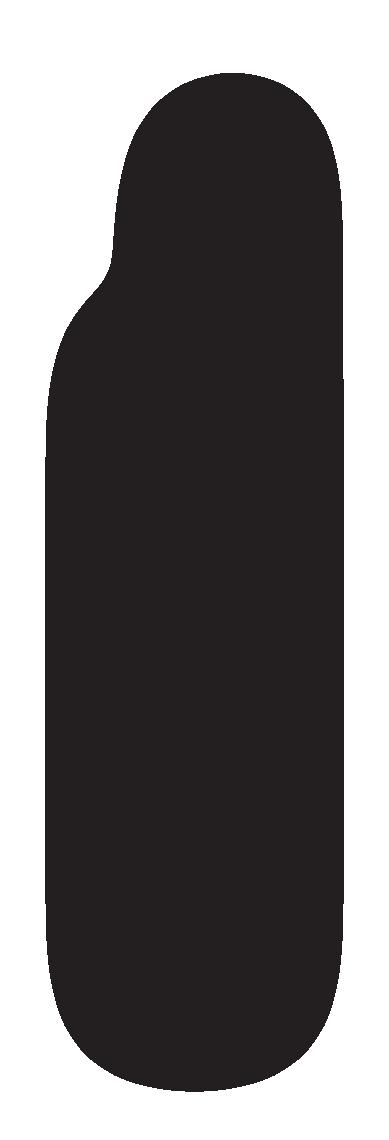









SUPERSTAY TEDDY TINT NEW & EXCLUSIVE


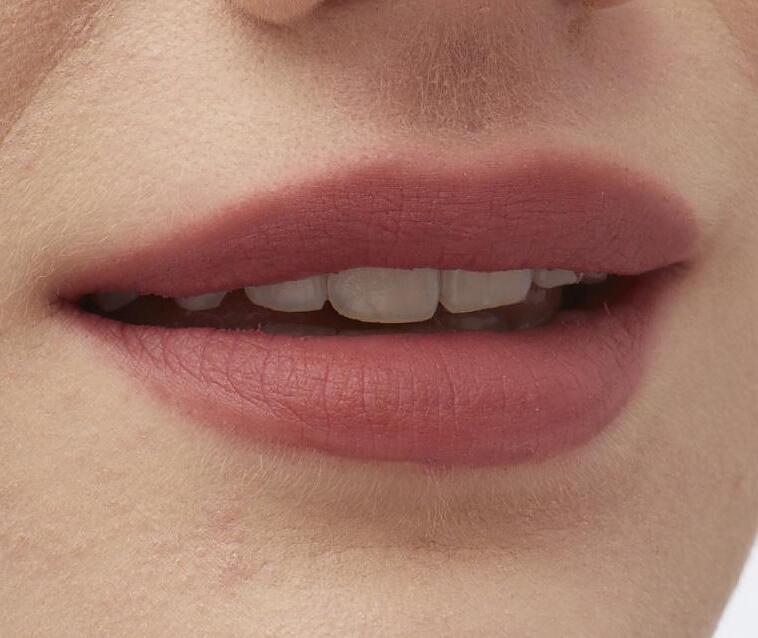
BLURRED
Dip once, apply to lips and blend for a blurred lip look.
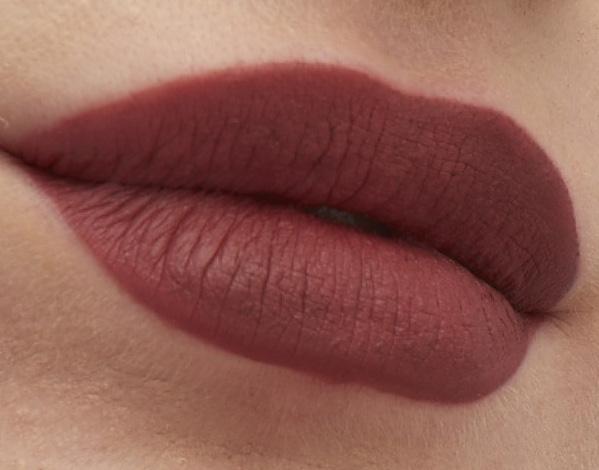
BOLD
Dip twice for a bold lip colour look.

Apply a deeper shade at the centre of your lips.


CHEEK
Wear it as a blush for a monochromatic look.
THE HOUSE OF WELLNESS is published for Chemist Warehouse by
PUBLISHER
Chemist Warehouse
SUDDENLY MANAGING DIRECTOR
Nick Smith CREATIVE CONTENT DIRECTOR
Fiona Welsh
EDITOR
Laeta Crawford
CREATIVE
Pascale Clearihan
Meisha Reynolds
SUB-EDITORS
Maureen Doyle
Joanne Trzcinski
Cathy Laird
PHOTOGRAPHY
News Corp Australia
Getty Images
Snapper Images
The Herald & Weekly Times Pty Ltd ABN 49004113937
HWT Tower, 40 City Rd Southbank, Victoria 3006
NEWS CORP GROUP SALES DIRECTOR, NATIONAL SALES
Vanessa Hanlan COLOUR SEPARATIONS
HWT Imaging
PRINTING IVE Group
CHEMIST WAREHOUSE HOUSE OF WELLNESS PRINT PRODUCTION MANAGERS
Nikita Thomas
Kayla Elgaznieks
houseofwellness.com.au thehouseofwellness@ news.com.au
The House of Wellness is published quarterly by The Herald & Weekly Times (ABN 49004113937) on behalf of Chemist Warehouse. Prices correct at time of printing. All products subject to availability. Not all products or promotions are available online. Information correct at time of going to print.
AC-006748

For someone who spends her days creating social media content, there is nothing fake about Indy Clinton.
What you see — a joyous, chaotic home life juggling her three kids aged under four — is what she lives and breathes. It is very real and, as is often the case with social media, very open to criticism. But Indy is not perturbed.
“Even if you are not online, you’re going to be judged by your mum, your mother-in-law, even other mums,” Indy says.
“You’re always being judged by your choices when you’re a mum because we’re easy targets. We’re sleep deprived. We’re emotional and we are mostly just trying to survive.”
HOUSE


PHOTOGRAPHY STEVEN CHEE
STYLING EMMA COTTERILL HAIR AND MAKE-UP I MOGEN OVIJACH
Indy wears Calvin Klein jeans and vest top, Reliquia Jewellery necklace and her own earrings ON COVER Meshki denim corset top, Ksubi jeans and denim shirt, and Swarovski diamond earrings
COVER STORY INDY CLINTON


Simply tell us in 25 words or less your favourite way to look after your skin.







Competition entries open at 12.01am on September 15, 2024, and close at 11.59pm on Sunday, October 13, 2024. Email your entry, name and contact details to thehouseofwellness@ news.com.au
Indy reveals how she has turned her reality into a thriving success, with a hit podcast among her latest projects.
After the White Island volcano explosion killed her father and sister and left Stephanie Browitt with burns to 70 per cent of her body, it would have been easy to give up. But Stephanie’s survival instinct kicked in and she reveals how she now finds fulfilment in being a body positivity advocate.
As cost-of-living pressures continue to hit, we share simple ways to help find and

plug your money leaks while making some extra cash on the side.
And with spring comes the revival of retro glam, from eye make-up to big, bouncy hair. We also discover the best ways to combine skincare products and ingredients, plus all our regular health and lifestyle features.


Trends
8 We are loving
Style
11 Tressing up
Head-turning hair trends
16 Get the look
Gorgeous retro glam
19 Better together
Power skincare moves
22 Beauty forecast
Explosion of colour
25 How-to
Shape your eyebrows
26 Blooming lovely Fabulous floral fashion
29 Men’s fashion
Shift it into neutral
31 Fragrance
Fresh finish
Features
40 Budget busters
Tips to cope in a cost-of-living crisis
43 Forward thinking
The minds shaping future health
48 My life Burns survivor
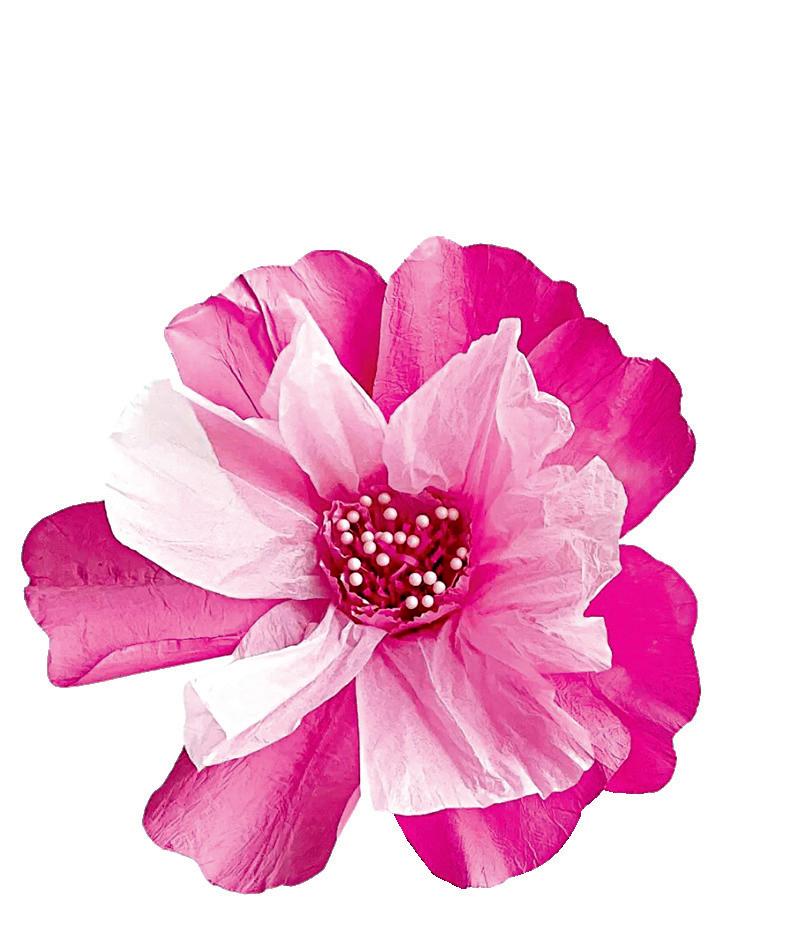

Stephanie Browitt
52 Small favours
Acts to inspire joy
55 Giving back
Feedback v criticism
57 Hoop dreams
Lauren Jackson leads from the front
61 Get to know
Hismile founders
Nik Mirkovic and Alex Tomic
Health
65 Fight the fade
Dealing with menopausal brain fog
69 Triggering event
Know your sensitivities
70 Emotional strength
Raising resilient kids
73 Clear intentions
The link between diet and acne
74 Life-changing moments
Thriving after breast cancer
77 Dr Sally Cockburn
Allergy management plans
Live well
79 Passion project
Sustainability in meals and mind
84 The sni test
How smell influences our lives
87 Lose the excuse
Rebooting your motivation
90 Escape into nature
With creature comforts and connections
Also
93 Decor
95 Spring reads
96 What’s on and quiz
98 Ask an expert
Dentist Dr Mikaela Chinotti




Welcome blue skies and sunshine with a new spring style that’s bold, fresh and energising
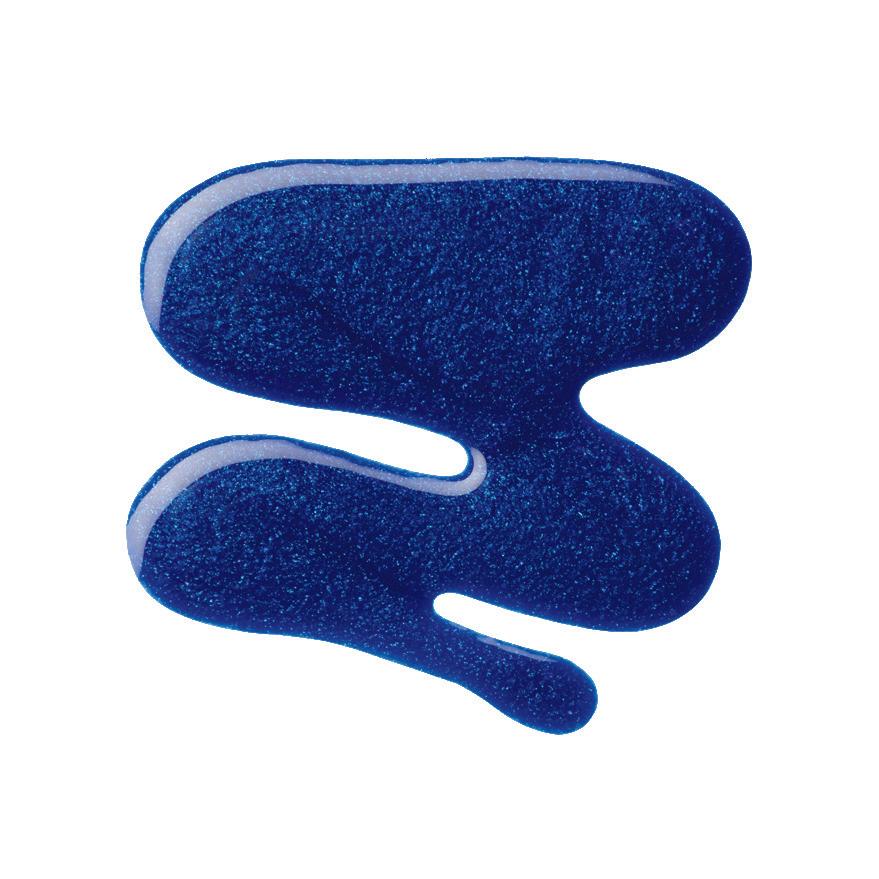
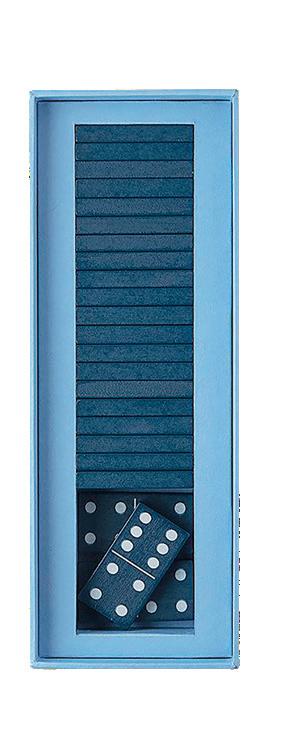





CLOCKWISE FROM TOP LEFT Maiori bubble mini dress, $420, shonajoy.com.au; NYX Suede Matte Lip Liner in Orange County, $8.99; Printworks dominos set, $59.90, designstuff.com.au; Twisted picnic mat, $109.95, kollab.com.au; Muuto Ease portable lamp, $385, livingedge.com.au; Kyoto bean bag ottoman, $725, lujo.com.au; Karl Lagerfeld Unseen book, $120, thamesandhudson.com.au

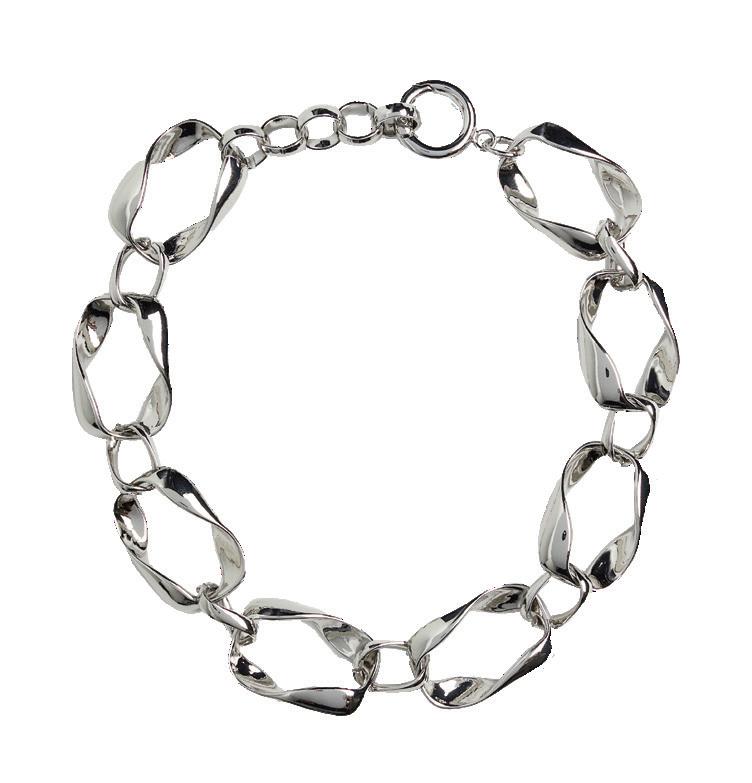

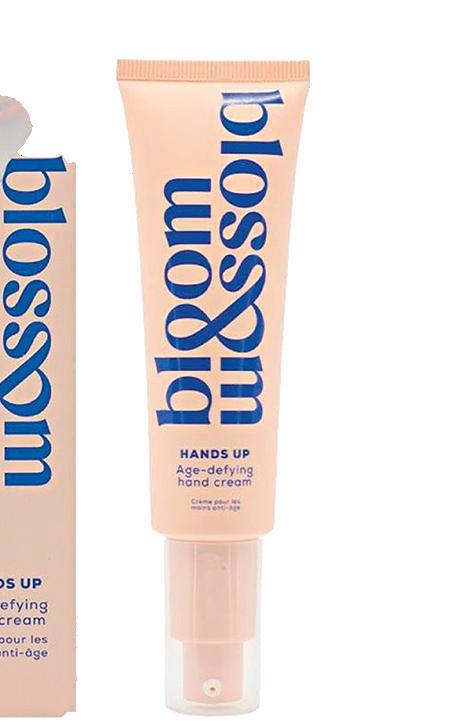




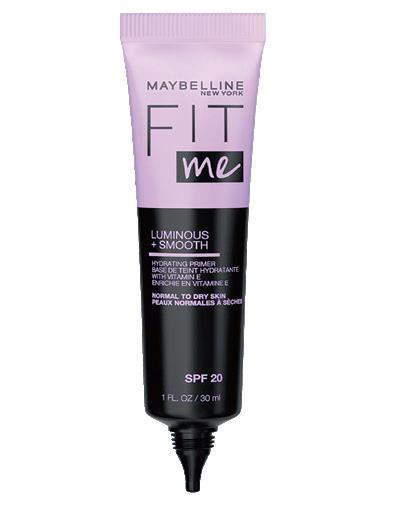



CLOCKWISE FROM TOP LEFT Essie Aruba Blue Nail Polish, $13.99; Odyssey T-shirt, $140, shonajoy.com.au; Chain necklace, $27.99, hm.com/au; Carla Coulson Fiercely Feminine art print, from $320, formanartandframing.com.au; Any Day Now sketchbook, $36.99, milligram.com; Karst woodless artist pencils (set of 12), $65, milligram.com; Maybelline Fit Me Primer, $17.99; Desigual denim jogger sneakers, $299, origenimports.com.au; Uniqlo : C bag, $59.90, uniqlo.com/au; Atlantis sunglasses, $70, lespecs.com.au; Bloom & Blossom Hands Up Age-Defying Hand Cream 50ml, $12.99
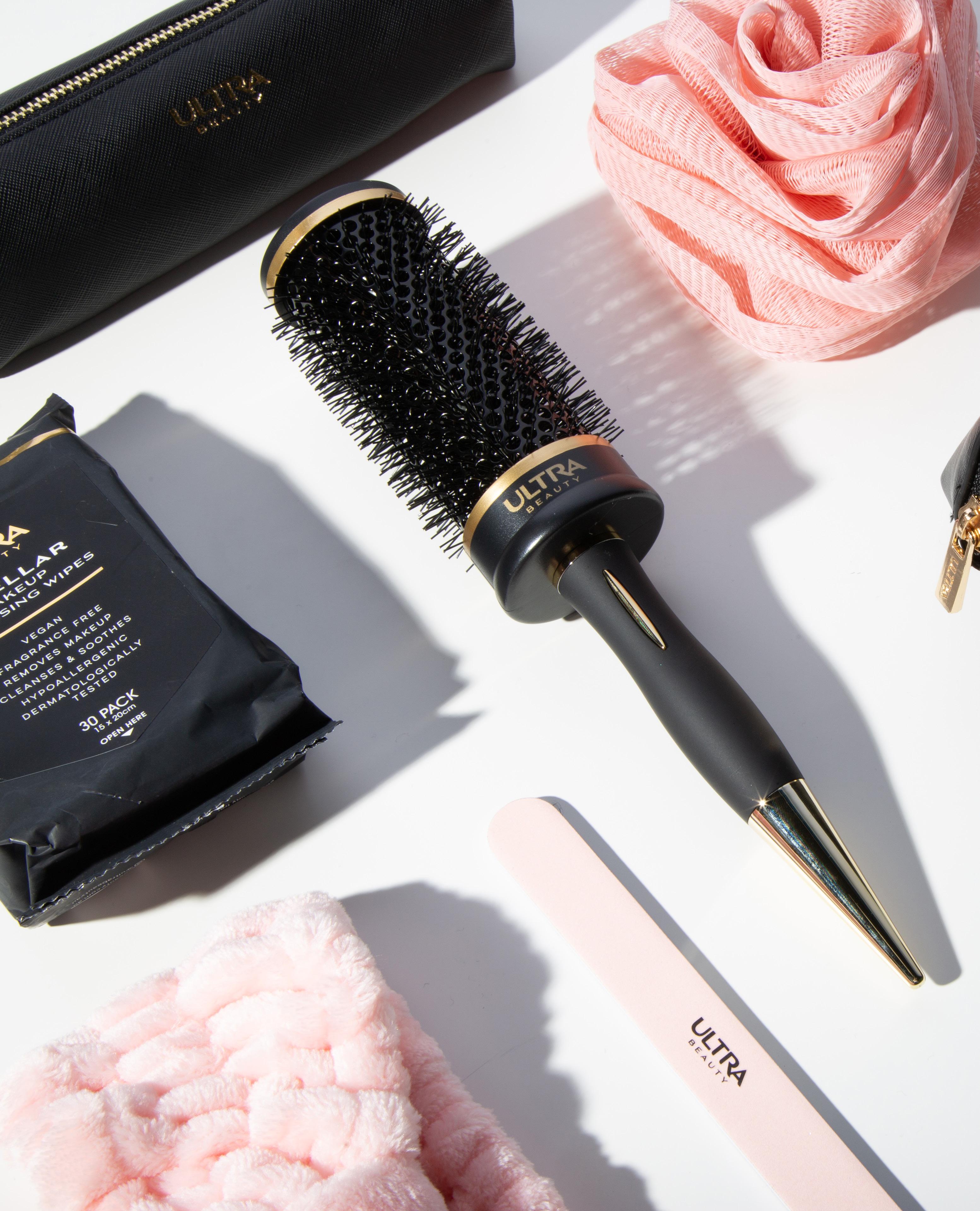


If you’re after a spring makeover, this season’s fresh looks will get you sorted
Words Charlotte Brundrett
The hair trend that defined the late 2000s is making its long awaited resurgence, and New Zealand hairstylist, Zen Salon owner and Redken educator Liana King is happy to see side bangs making a return. “It’s so nostalgic for me; how could I not be on board?
I love the versatility of a side fringe and I find them softer for many face
Bobs of all kinds are having a moment this year, with increased demand for micro crops, blunt bobs and layered chin-length styles. However, this type of cut isn’t for low-maintenance types. Hairstylist Frankie Guascoine, owner of Bondi salon Mokosh Studio, says a standout bob can be an accessory in its own right. “I love a French bob; it really brings out the jawline,” Frankie says. “It’s a timeless, chic style that adds a sophisticated edge to any look, which is why I describe it as the ultimate accessory for any outfit.”

shapes compared to a centre parting,” Liana says. Whether layered styles or long sweeping bangs, side fringes are expected to be a popular request at salons.
WE LIKE American Crew Light Hold Texture Lotion 250ml, $24.99; Lady Jayne Comb Metal Tail, $4.49


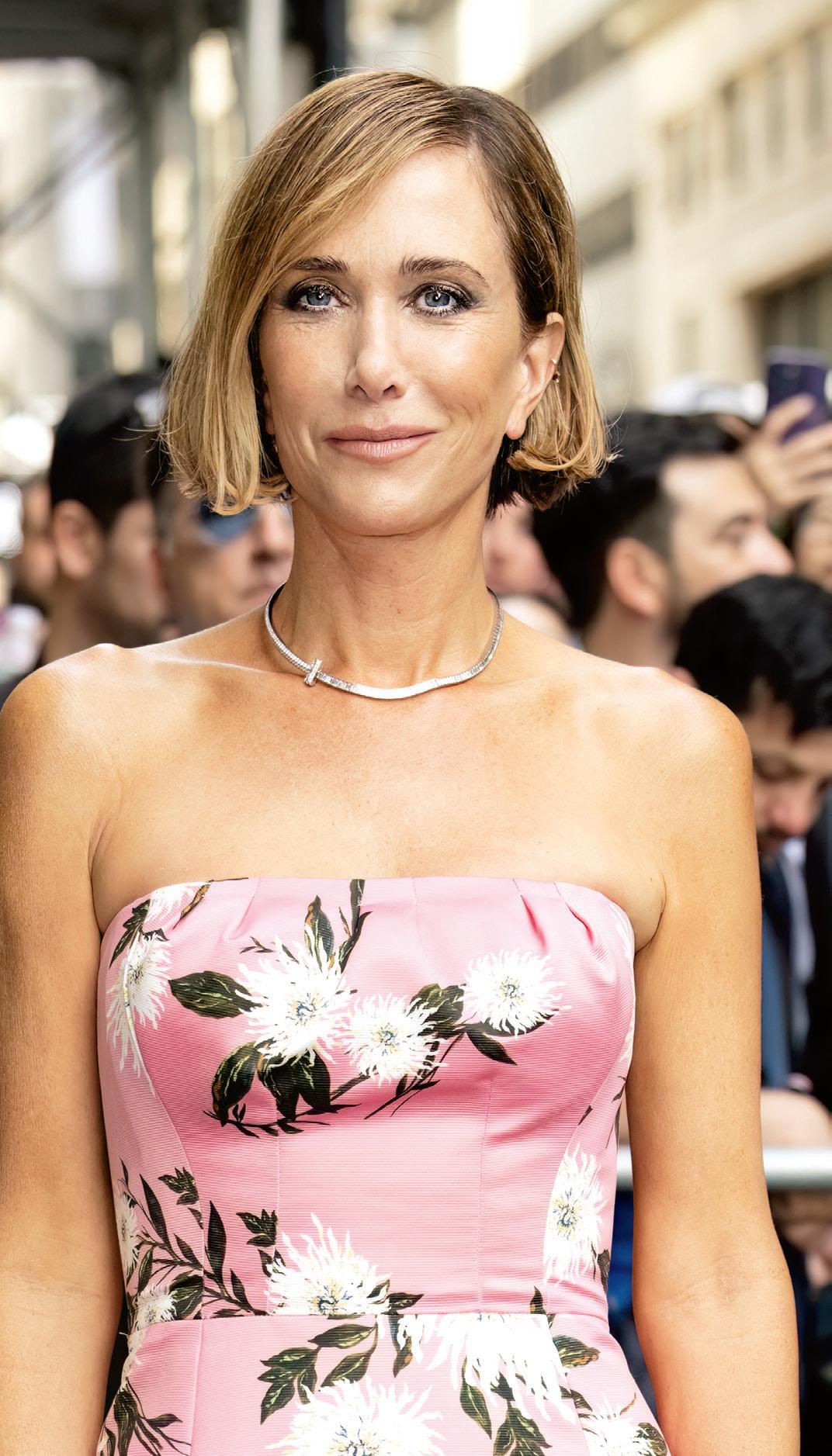

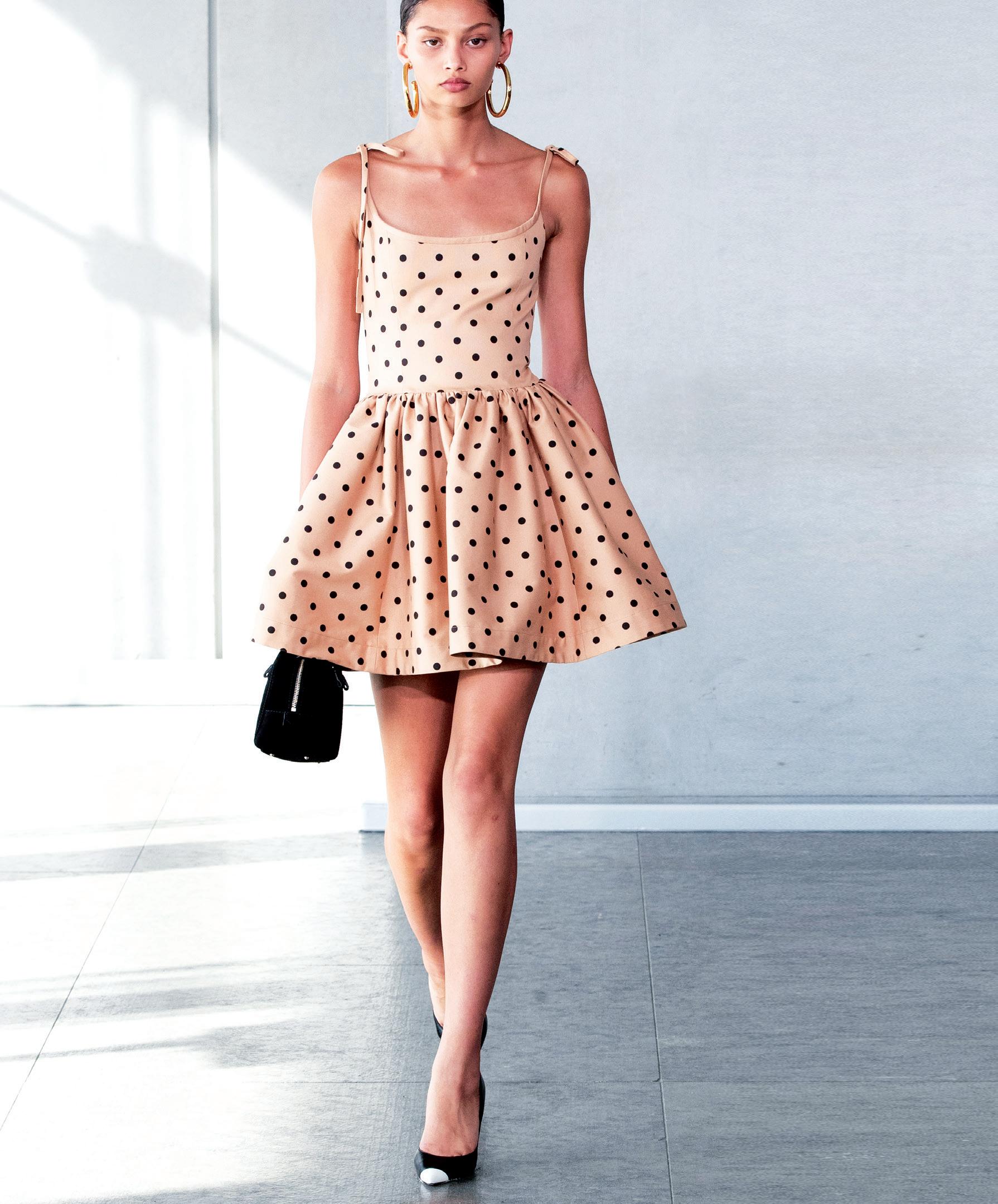
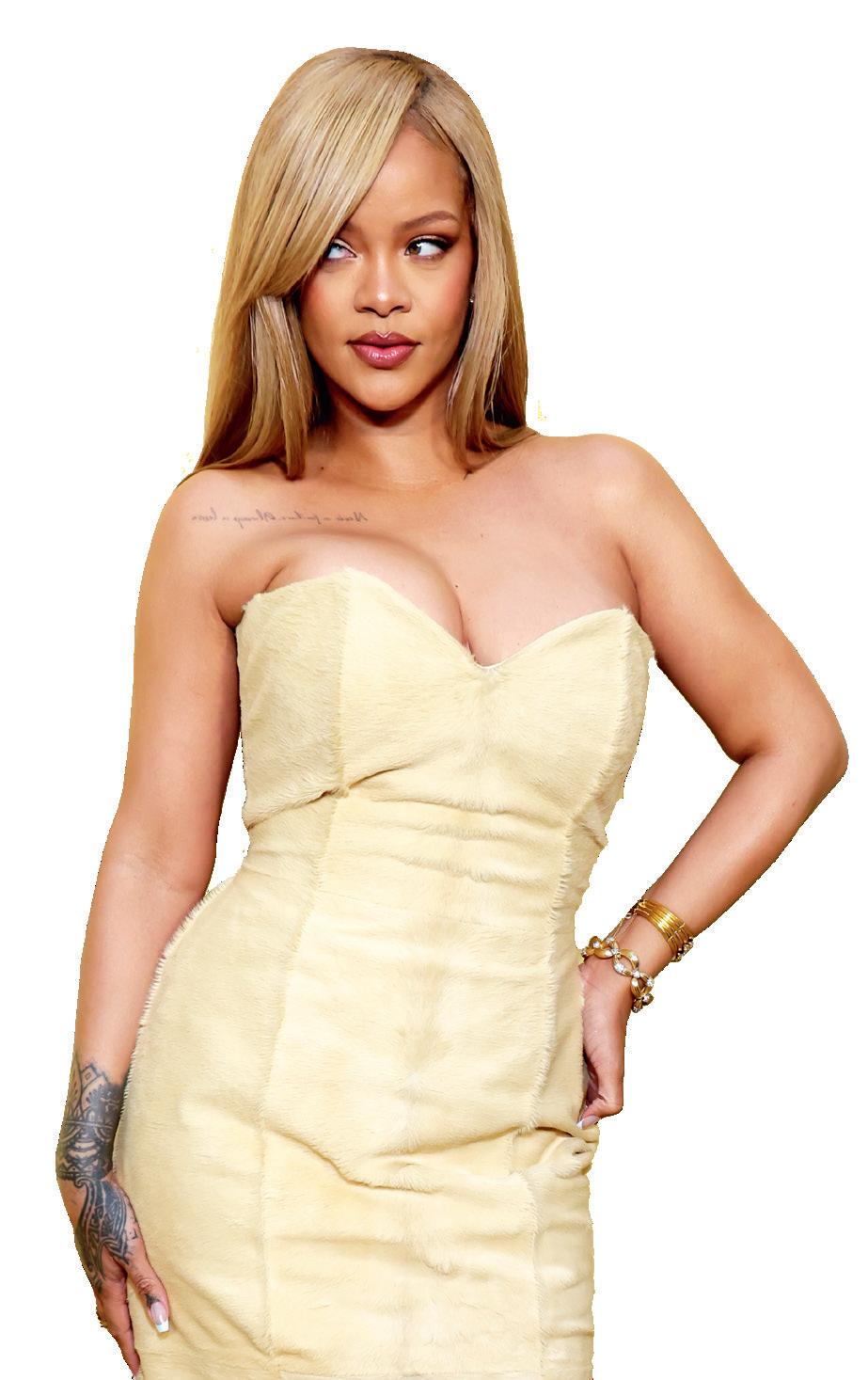





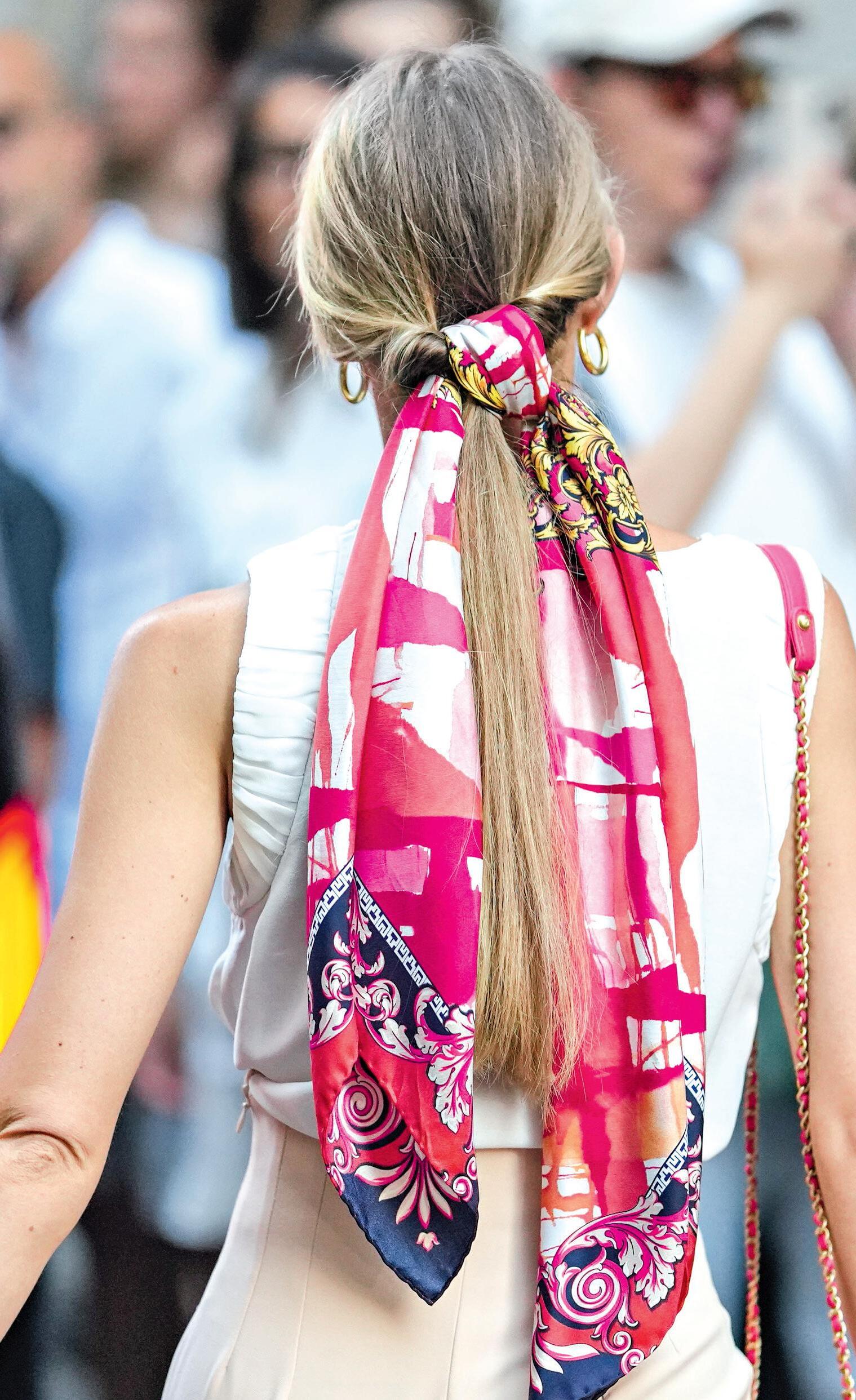
Ultra-smooth, glossy hair remains a popular style on the red carpet, instantly elevating a look with the swipe of a bristle brush. “I hate to gatekeep, so here it is: My favourite product for a clean, slick, frizz-free look is the ELEVEN Slick Styling Pomade. It’s the holy grail for a sleek, polished look,” Frankie says. WE LIKE L’Oréal Paris Elvive Gylcolic Gloss Leave In Serum 150ml, $15.99; ELEVEN Slick Hold Styling Pomade 85g, $20.99
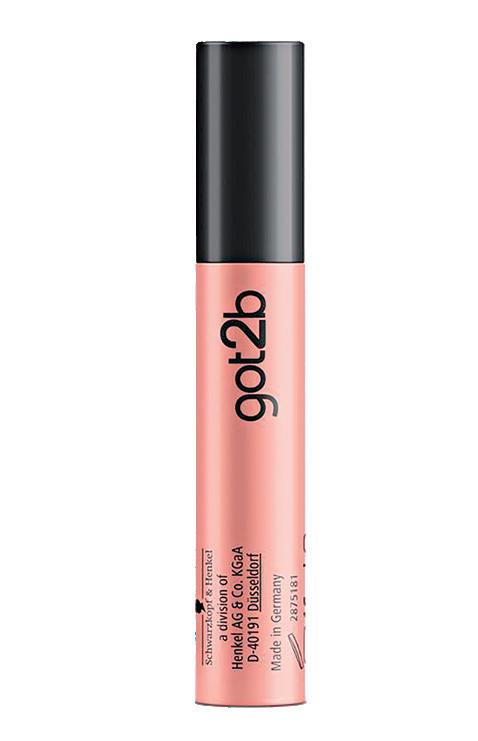
From bows and baubles to thick headbands and headscarves, extra-large hair accessories have been a regular styling accent on runways and red carpets this year, and are fast becoming as much of a statement piece as jewellery.


BeautyTok is predicting Nirvana hair to be one of the definitive styles of spring 2024, inspired by the ’90s grunge aesthetic. Liana says the style can be created a number of ways. “This effortless trend can be achieved with heatless rollers, blow dry brushes, tongs and wands,” she says. “Consider Redken’s Volume and All Soft ranges for styling. I’m also obsessed with the texturising spray.”


3 steps to wellness.
SCRUBS UP NICELY Polishing Body Cleanser. Salicylic Acid & Natural Sugar Crystals to gently buff, brighten and hydrate skin.

LOVELY JUBBLY
Bust Firming Gel. Co-enzyme Q10 & Quince-hydrogel to tone and firm your neck, decolletage and boobies!

BOOTY GAINS Bum, Hips & Stomach Firming Cream. Cupuaçu Butter & Caffeine to help skin look sculpted, contoured, and firmer.
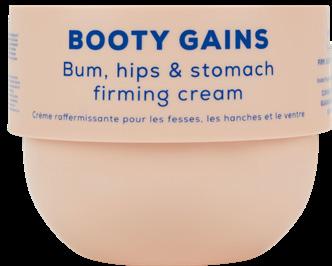
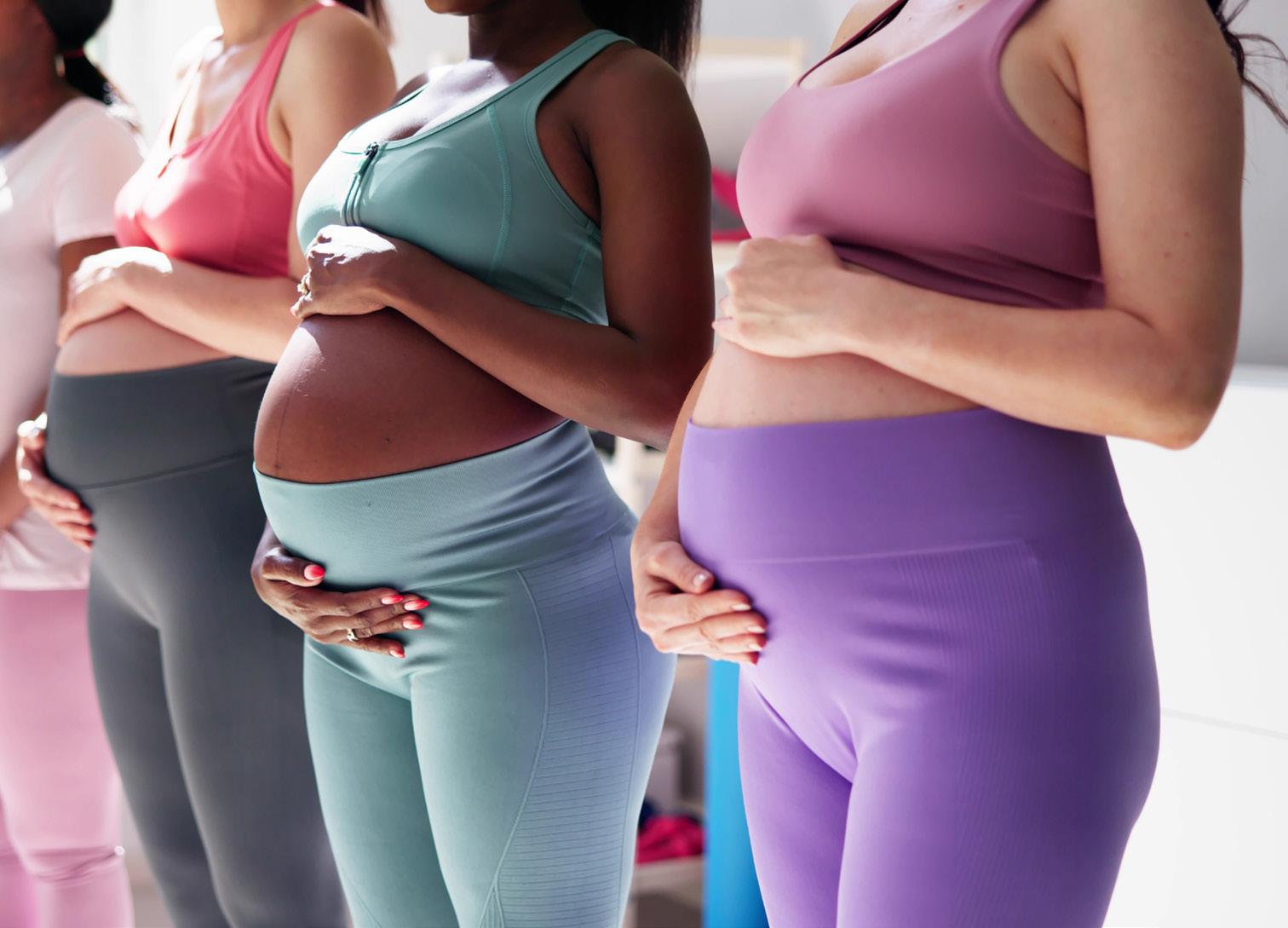

ALL NIGHT LONG
Calming Night Spray. Frankincense, Linden Blossom and Rose Water Flower creates a soothing scent for your bedtime routine.


With Argan Oil & Sweet Almond Oil. The appearance of your hips, thighs and, of course, baby bumps will all enjoy the attention of the toning ingredients.



a good night’s sleep is as easy as A to Zzz…
PYJAMARAMA
Dry Body Oil. Fast-absorbing body oil with Evening Primrose Oil quickly nourishes, leaving no residue or sticky feeling. Perfect for bed!
Horsetail Leaf Extract a superhero ingredient that visibly fights stretch marks and smooths wrinkles whilst boosting the appearance of skin elasticity.







The
Retro glam continues to dominate beauty, but rather than looks inspired by the ’90s and Y2K period, this season will transport us all the way back to the ’60s and ’70s

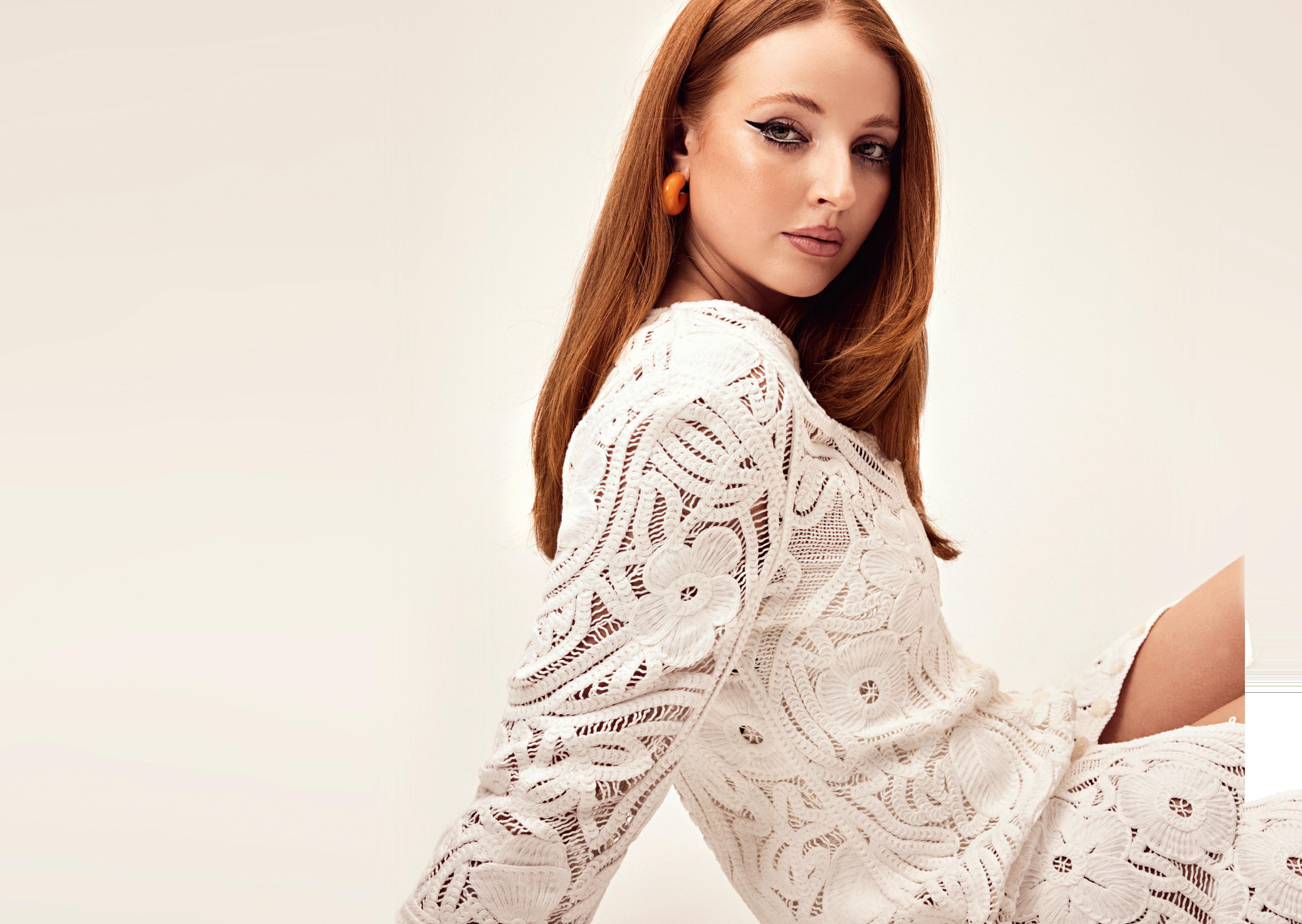
PHOTOGRAPHY
RICH MACDONALD
ART DIRECTION
PASCALE CLEARIHAN,
SHERIDAN FRAWLEY
HAIR AND MAKE-UP
JADE KISNORBO
HAIR AND MAKE-UP ASSISTANT
AIMEE RAPA
MODEL SARAH/VIVIEN’S
Sarah wears H&M dress and Bling Bar earrings
Retro
glow
The focal point of Palm Springs beauty is the eyes, so keep the rest of your make-up relatively understated and natural-looking, especially the eyebrows and lips.

Drawing inspiration from film and TV such as Palm Royale and Casino, the Palm Springs trend involves dramatic eye make-up, super bronzed, shimmery skin and big, voluminous hair
1
Prep the skin with your go-to base products, incorporating a luminising product to enhance the skin and give it a glowy sheen. Conceal and contour as necessary, but avoid being heavy-handed as you want to keep the initial base products sheer and naturallooking to avoid a cakey finish. Once your base products are set, take a powder bronzer with a big, fluffy make-up brush and buff the product into the outer perimeter of your face. If you want to dial up the bronze, go over the cheeks and bridge of the nose for a sunkissed effect, and try incorporating a shimmer bronzer to achieve a glowier, high-impact finish.
WE LIKE Nude By Nature Flawless Concealer, $20.99; L’Oréal Paris Lumi Glotion, $33.99; MCoBeauty Silky Smooth Bronzer, $20.99; Glam By Manicare Pro Setting Powder Brush, $35.99

2
Take your preferred eye base and apply to the lids to ensure optimal wear. Next, take a fluffy eye makeup brush and go in with your base eyeshadow, covering the lid region and buffing it out for a diffused effect. Since there’s a lot of variation to this look, the next steps all come down to personal preference and whether you want something like a dramatic cut crease or a simple bronzed eye look. To make the eyes look truly retro, be sure to apply multiple layers of lengthening mascara, or even falsies on both the top and bottom lash lines, for the ultimate spidery effect. Don’t hold back with the liquid eyeliner, and apply a shimmery white shadow on the tear
To help bring the look home and make it appear quintessentially Palm Springs, you need big, bouncy hair. You can achieve this look in various ways, but for true staying power, go for a voluminous blow dry. Apply a generous amount of root-lifting spray or mousse to towel-dried hair, massaging it into the roots. Next, take a round brush blow dryer or thermal cylinder brush with a traditional blow dryer and apply heat away from the roots for ultimate volume. To amp things up, set each section in a roller. Once the style is set, unravel the rollers and tidy up any stray hairs with heat tools. For a truly

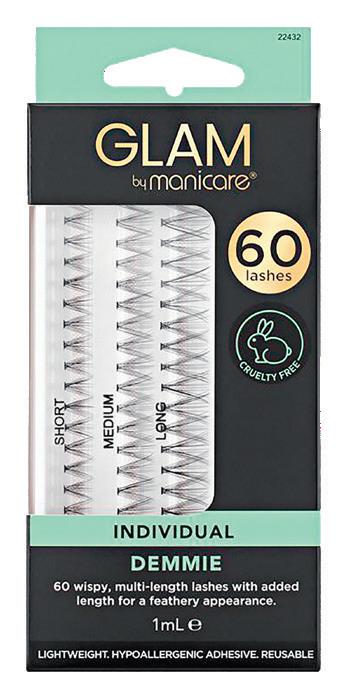




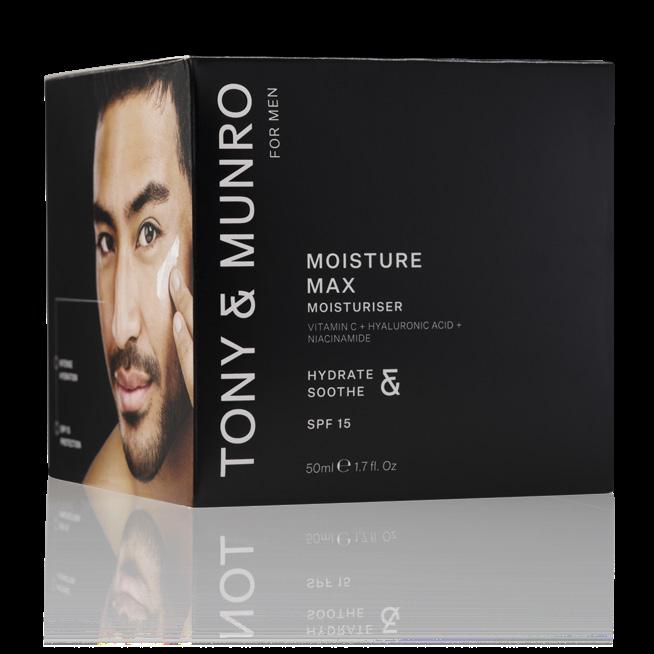

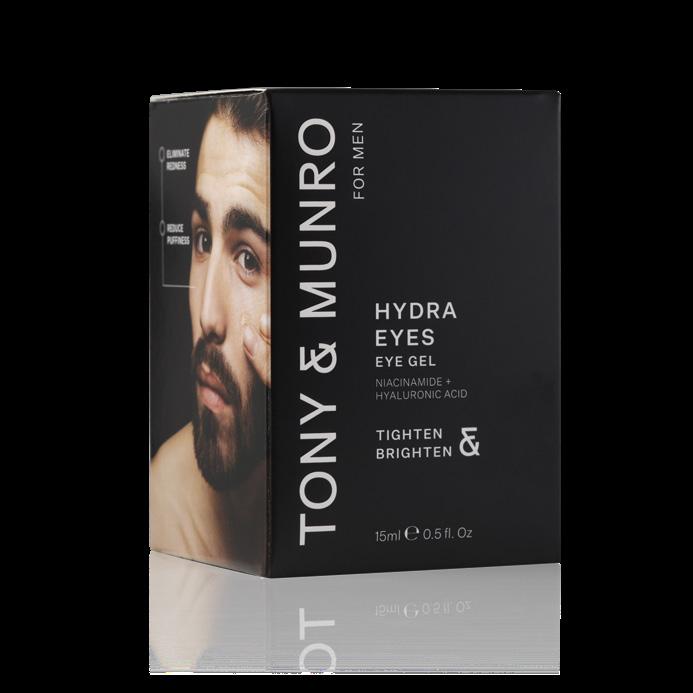

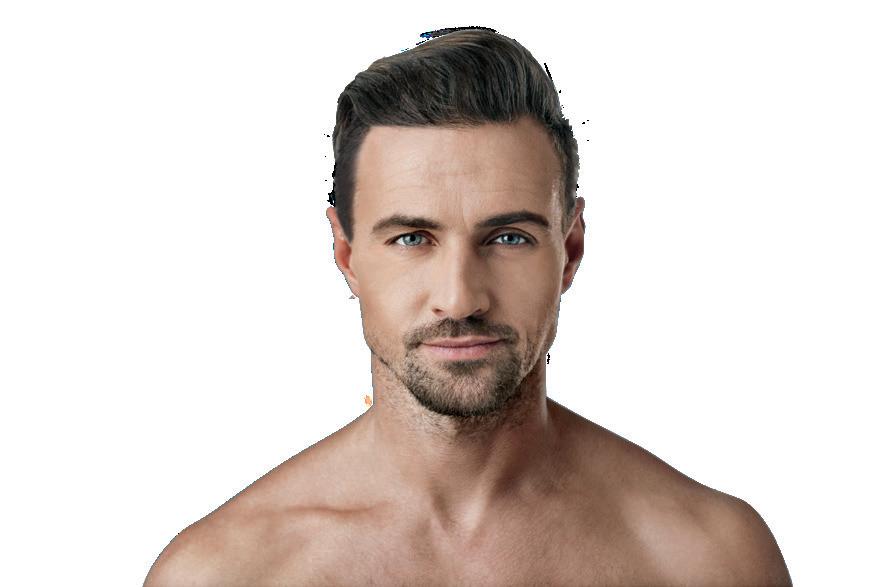

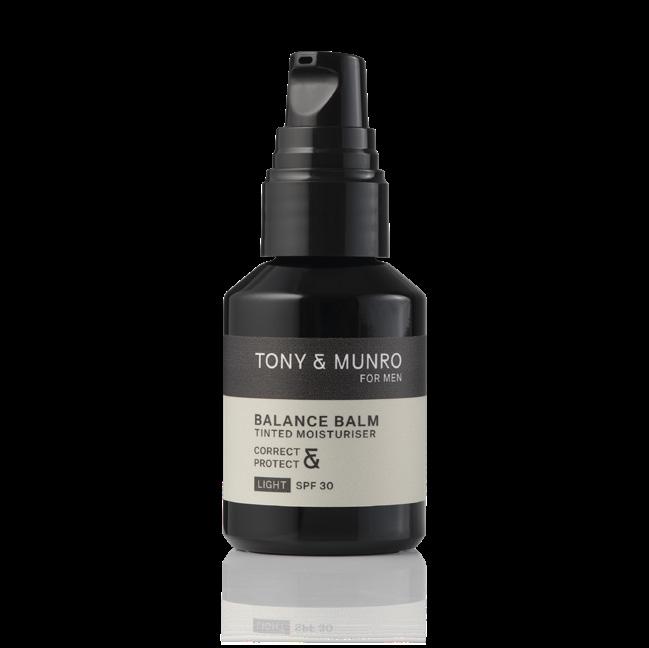













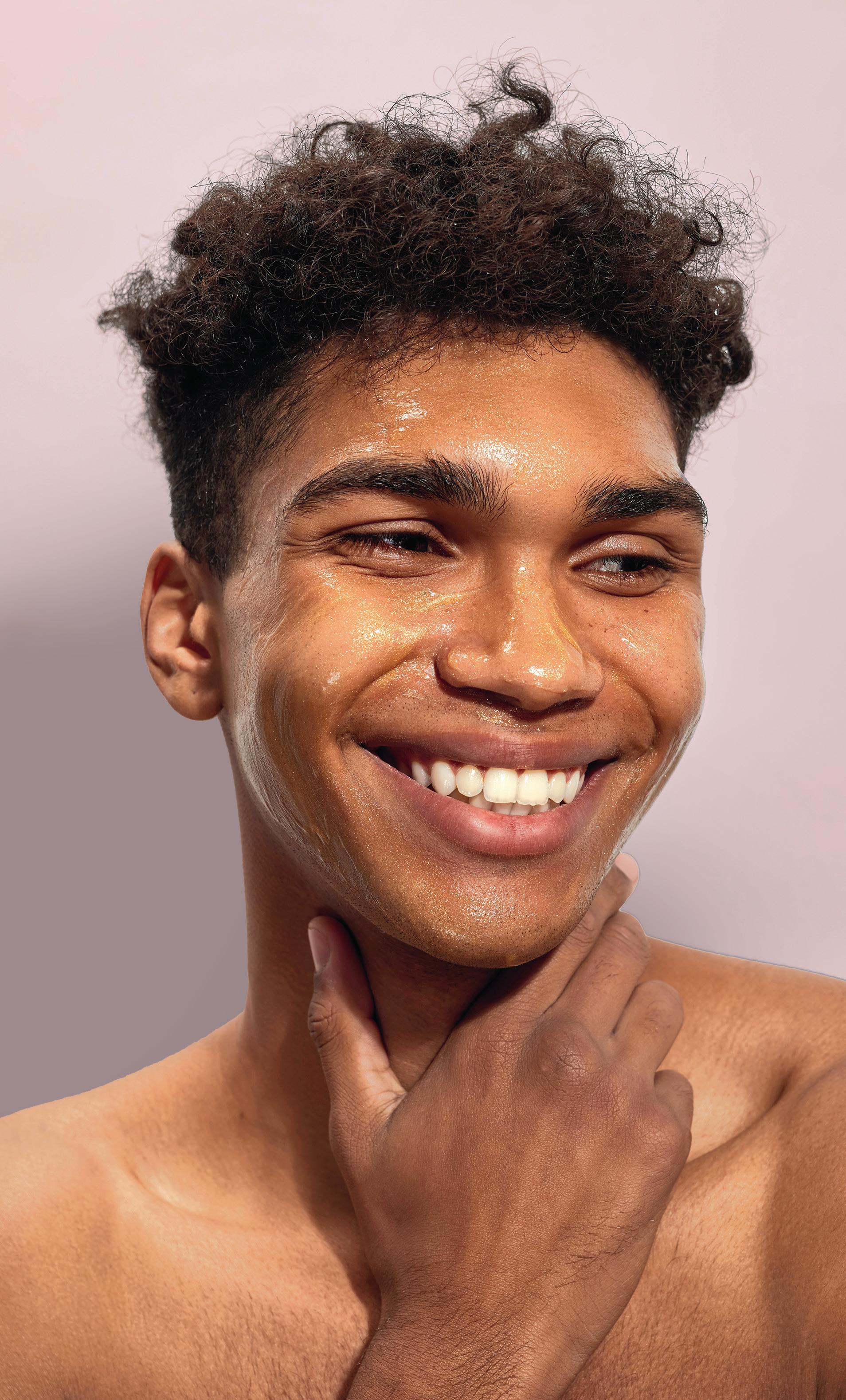
Your skincare routine shouldn’t feel like a science experiment — here’s how to combine products and ingredients for maximum benefit
Words Kathryn Madden

Retinoids, ceramides, squalane and salicylic acid. In 2024, the average beauty consumer has a skincare vocabulary bursting with terms that would have sounded like a foreign language just a few years ago. Australians are more skin literate than ever before, with many of us seeking out high-performing, science-backed ingredients to hydrate, smooth and soothe the complexion. But sometimes that zeal can go too far — especially when skincare aficionados-turnedwannabe chemists layer lotions and potions that compromise the skin barrier or, worse, trigger chemical burns. Here, we break down the perfect ingredient pairings and some mismatches to avoid.
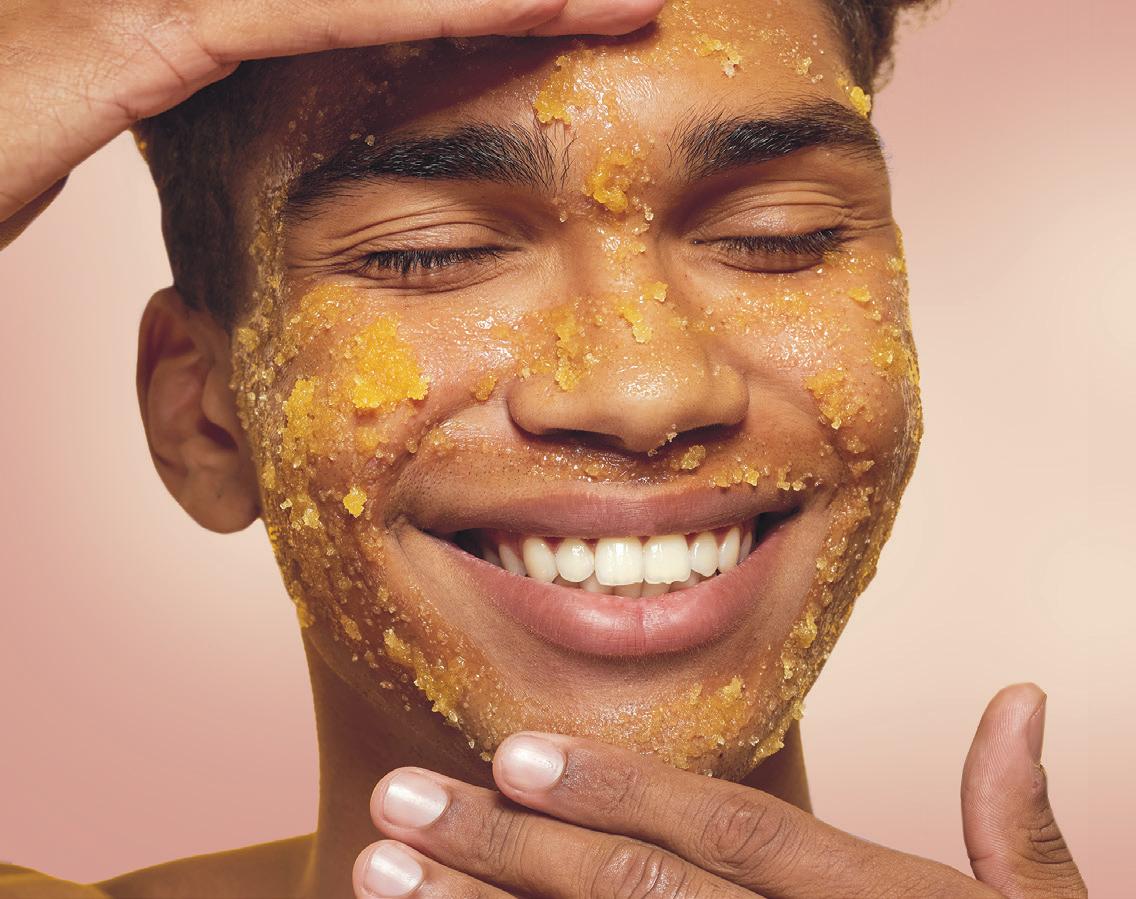
Give or take
Before delving into specifics, some guiding skincare principles simplify the science behind ingredient mixing.
Pharmaceutical scientist and skincare expert Hannah English says to think about whether a product or ingredient is giving back to the skin or taking from it.
“And if it’s taking from the skin, don’t follow that up with another product that’s also taking from it,” Hannah says.
“Retinols usually take from the skin, as do most acids and scrubs.”
Rather than pairing a skinsloughing chemical exfoliant with a potent vitamin A (which also promotes cell turnover), follow it with a juicy serum or moisturiser that gives back to the skin by delivering and sealing in hydration.
Perfect pairings
In the realm of skincare mixing and matching, hyaluronic acid, a powerful humectant, is a beauty of an ingredient.
Dermatologist Dr Shammi Theesan of ODE Dermatology says most of the time you can pair an active ingredient with a hyaluronic acid serum.
But while most actives should be applied at night (think glycolic acid and vitamin A), vitamin C is an exception and works well applied in the morning, alongside sunscreen.
Vitamin C can alleviate free radical damage and augment the sun-protecting factor in SPF. While sun protection is important to prevent UV damage, vitamin C in the morning can fight oxidation and oxidative stress.
“They’re excellent at trapping moisture and can be used on everyone,” Dr Theesan says.
Hyaluronic acid pairs beautifully with niacinamide (a gentle active that works to brighten and reduce redness), AHAs and BHAs (exfoliating hydroxy acids), ceramides (which seal in moisture), vitamin C (a radiance-boosting antioxidant) and also retinol.
“Hyaluronic acid plus retinol is a good combination,” Dr Theesan says.
“Retinol works optimally at a pH of 5.5 and the hyaluronic acid optimises the permeability of the retinol. It also moisturises and strengthens the skin barrier in case the retinol has irritated it.”
In addition, retinol is a good match for ceramides. Retinol builds collagen and stimulates epidermal turnover, but it can overwhelm your skin barrier and cause drying, redness and flaking. Enter ceramides, which work as a potent, deep moisturiser and strengthen the skin barrier.
Suncare is an essential step in any skincare routine, especially if you use active ingredients that increase the skin’s UV sensitivity.
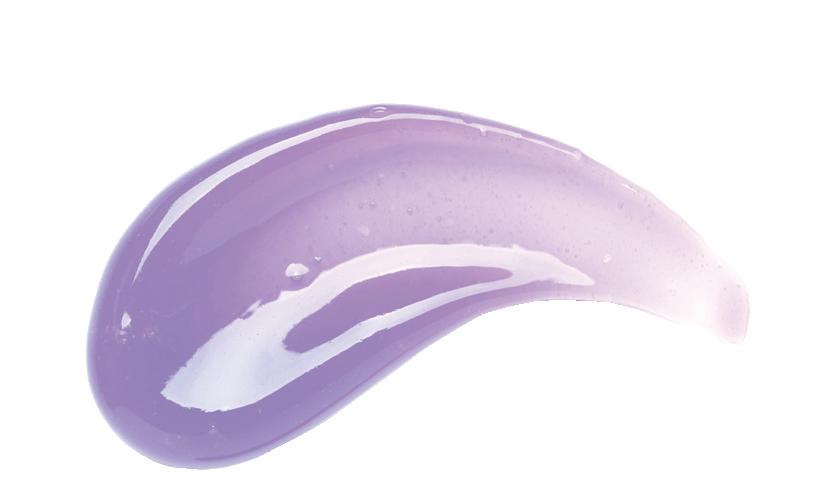

For a winning trifecta, throw in some vitamin E, another potent antioxidant. Together, the two vitamins boost each other’s efficacy and are more powerful together than the sum of their parts.
If your skin feels flaky, red, tight and sensitive, it might be because your skincare ingredients don’t play nicely together.
“When you mix an exfoliating acid with a strong retinol, they’re going to team up and probably make your skin angry,” says Hannah, noting that overexfoliation tends to compromise the integrity of the skin barrier and acid mantle (a delicate film that covers the skin’s surface).
Of course, everyone’s skin is different, and some trial and error is essential in deciding which ingredient combinations to embrace and avoid.
“As a broad brush, I would not be combining my vitamin C with AHAs and BHAs, or my vitamin C with a retinol. You’re potentially inflaming or irritating your skin barrier,” Dr Theesan says.
She also suggests introducing active ingredients slowly, using them one at a time to start with and alternating night by night to create a routine that works for you.
Hyaluronic acid and niacinamide
Hyaluronic acid and retinol
Hyaluronic acid and ceramides
Hyaluronic acid and alpha hydroxy acids/beta hydroxy acids (AHAs/BHAs)
Ceramides and retinol
Vitamin C and vitamin E and SPF

AHAs/BHAS and retinol
AHAs/BHAs and vitamin C
Vitamin C and retinol
Retinol and benzoyl peroxide



CHARLOTTE BRUNDRETT Beauty editor
Expect an explosion of colour this spring, with vibrant eye make-up and experimental looks dominating trends

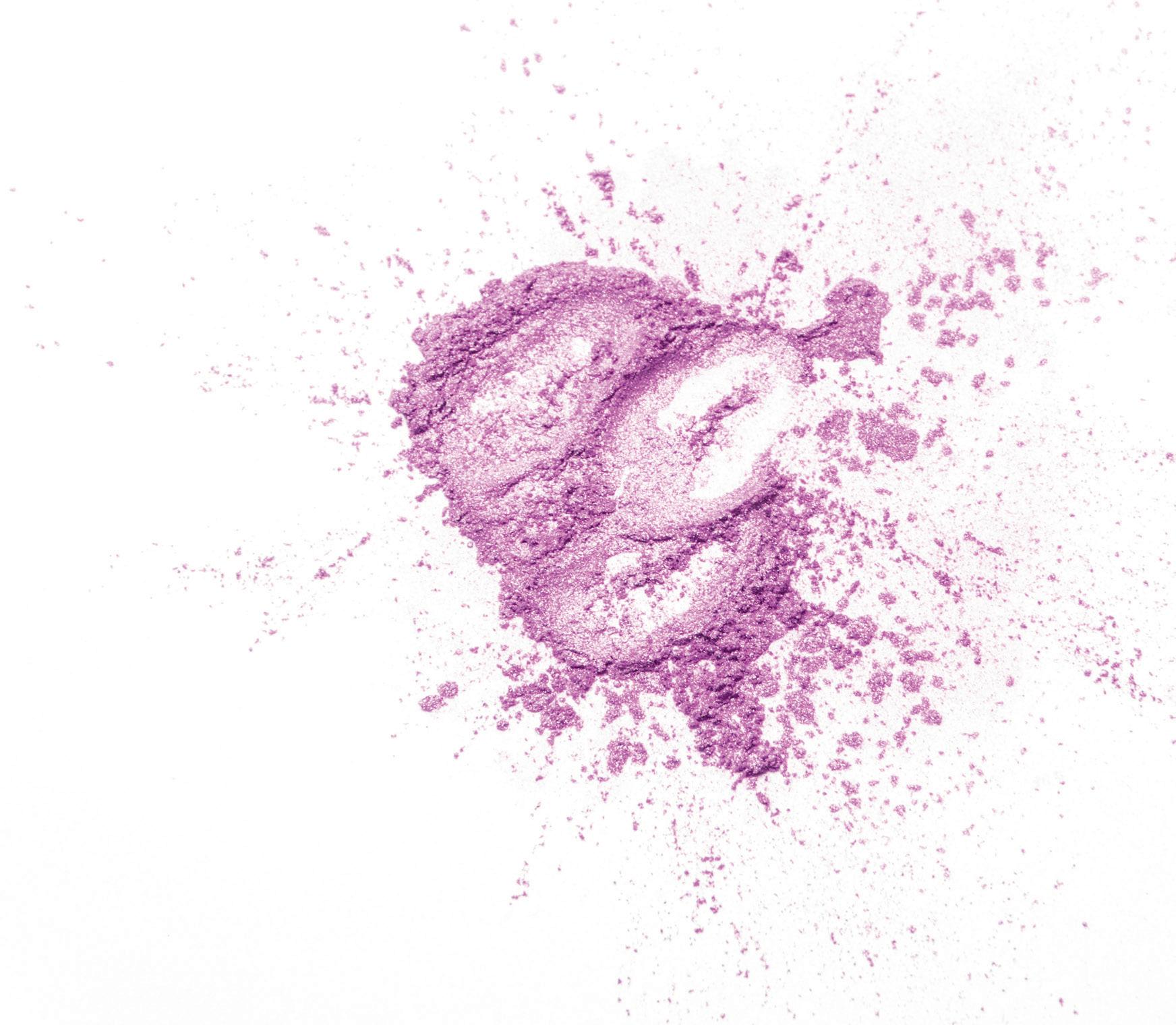

AUSTRALIAN FASHION WEEK
Dramatic statement make-up is a quintessential feature of ’80s glam, and now it is being celebrated once more. This time, however, the trend involves an edgier, more abstract interpretation to create a modern feel, as seen at Romance Was Born SS25 (left) at Australian Fashion Week. WE LIKE Maybelline Color Tattoo Eye Stix in I Am Fearless,
NYX




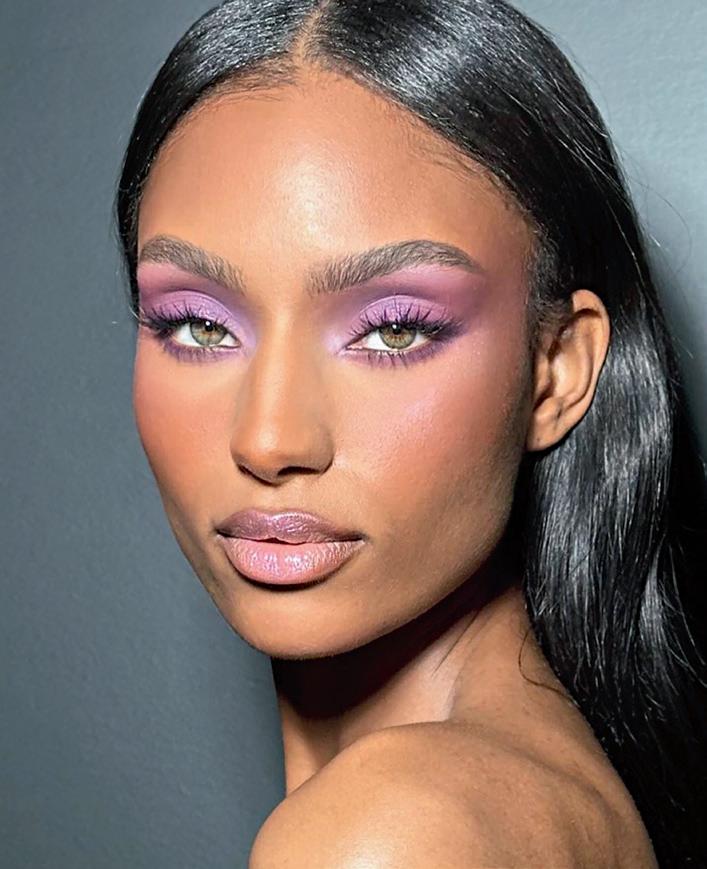

kaleidoscopic, “tiedye” eyes are tipped to replace “safe” glam make-up (I’m looking at you, neutral eyeshadow), just in time for the party season to kick off. Melbourne make-up artist Tiana Santalucia says a pop of colour can elevate your make-up game — just consider colour theory and your eye shade for high impact. “I like to add a shimmer eyeshadow

Spring and dewy skin go hand in hand, but this year’s take on the trend will adopt a softer, more diffused approach. Coined to describe a post sauna-like glow, “dew point skin” focuses on looking hydrated from within. Melbourne make-up artist Dana Vaughan is a fan of the look. “I love a glowy finish for editorials, however I gravitate towards a wet, dewy look for everyday; it just looks more natural,” Dana says.
WE LIKE La Roche-Posay Mela B3 Serum 30ml, $67.99; Glow Culture Super Boost 3-in-1 Microderm Facial, 30ml, $38.99; Revlon Colorstay Pressed Powder Light/Medium, $32.99

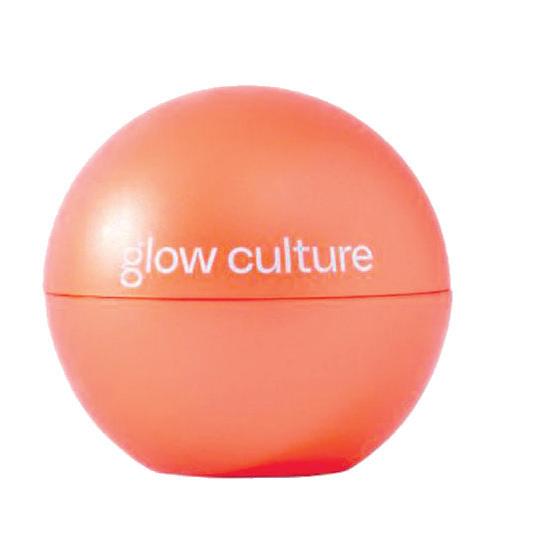








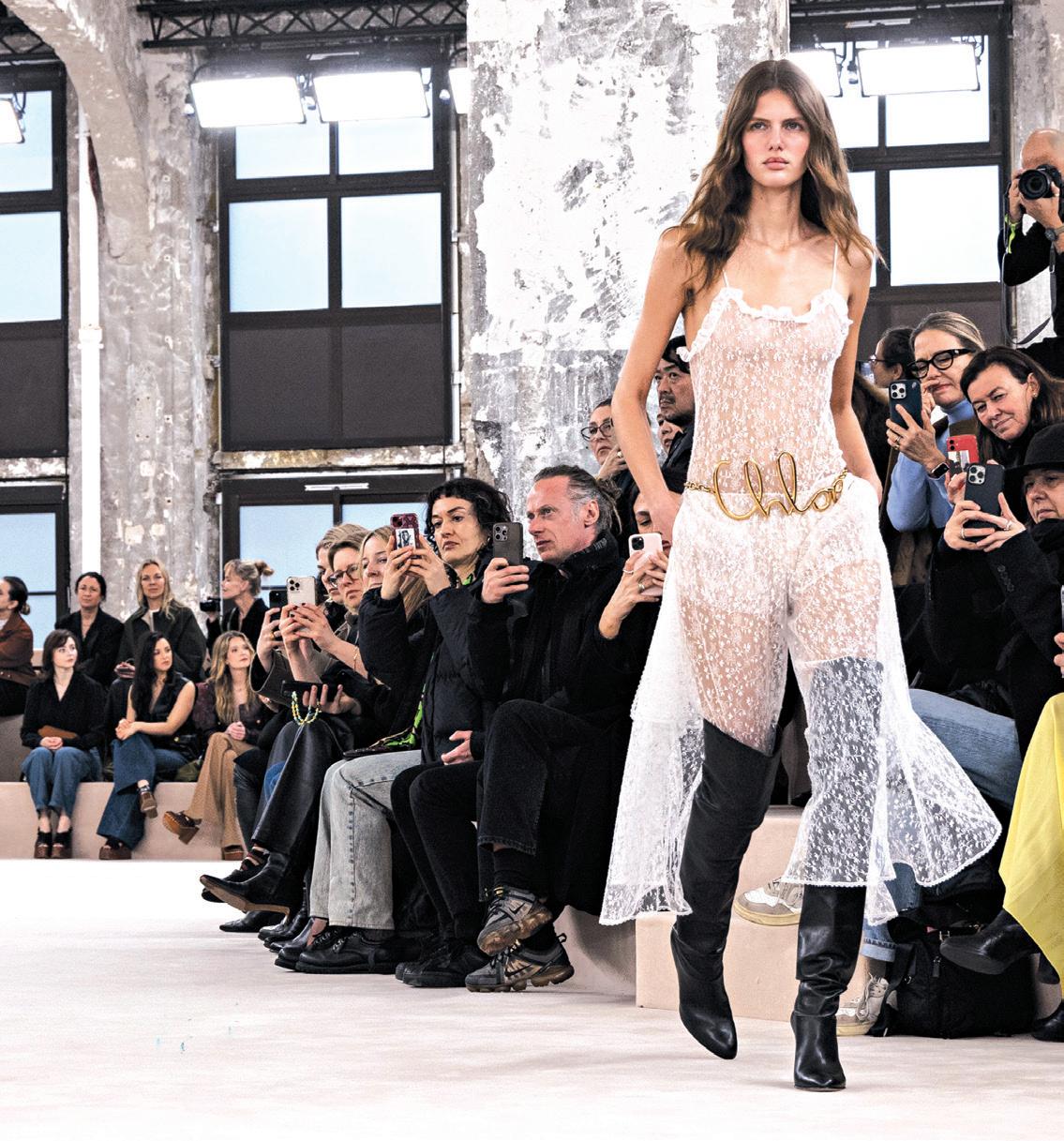
Since Beyonce’s Cowboy Carter album helped revive the Western aesthetic, the trend has taken a life of its own. From cowgirl copper hair and Texas blowouts to horse girl make-up and coastal cowgirl fashion, what’s not to love about Southern charm?
WE LIKE Maybelline Lifter Plump 001 Blush Blaze, $20.99; Sally Hansen Color Therapy Nail Polish in Bare Kiss, $14.99

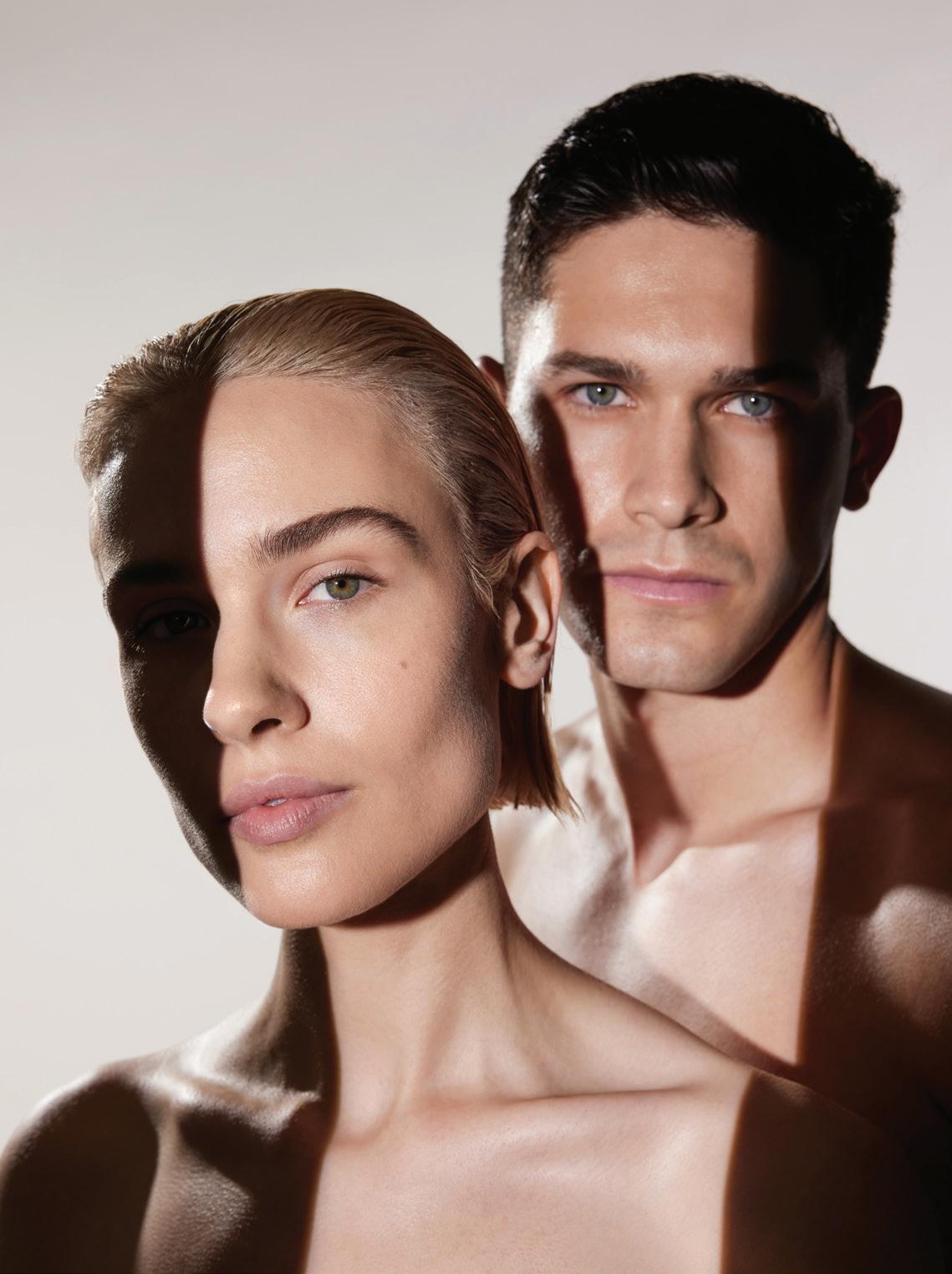

Words Ravisha Rajapaksha
From thin arches to bold and bushy stripes, eyebrows have gone through countless trends. Often dubbed as the frame to your face, our small but distinctive eye protectors can be manipulated to transform and polish our appearance, whether we’re after a natural everyday look or a fully glam face.
But how do you care for them and achieve the right style? We ask the experts.
Having a reliable eyebrow care routine is an integral first step to rocking the perfect eyebrows.
Moisturising and hydrating skin around the eyes promotes healthy hair growth and helps avoid dry flakes.
Brow Syndicate owner Sarah Ward recommends regular tweezing or waxing to keep brows looking fresh, and mapping out the areas to avoid incorrect shaping.
“If you’re not confident about shaping your brows, visiting a professional for the initial shaping can provide a good template to follow at home,” Sarah says.

Whether you should pluck or trim depends on your skin sensitivity, desired brow style and how much time you want to spend on your brows.
Sarah recommends exfoliating the eyebrow area and using sharp, high-quality tweezers to pull hair in the direction of its growth, to minimise the risk of breaking the hair, and avoiding pesky ingrowns.
Keep up the maintenance
Consistency is key when it comes to keeping your eyebrows in shape.
Methods of maintenance range from regular grooming, as suggested by Sarah, to tinting or bleaching.
Professional make-up artist Mason Whitton says tinting is perfect for those trying to combat finer and lighter hair to achieve a semi-permanent look, while bleaching can help you achieve a polished runway vibe.
“It’s an amazing way to create an edgy or ethereal look with minimal effort,” Mason notes.

As trends come and go, it can be difficult to keep up with the latest look. But here’s some good news for those who don’t want to spend too much money and effort on their brows. Mason says the look right now is all about “back to basics”.
“Naturally defined brows are coming back in style,” he says. “I see many people favouring a softer, more realistic brow look these days.”
This is polar opposite to the “more is more” approach we had for eyebrows a few years back, otherwise known as “eyebrow blindness” (making waves on TikTok).
International make-up artist Carla Dyson says it’s hilarious to see what the trends used to be, but she is thankful the soft look seems here to stay.
“My clients are currently on the fluffy brow train,” she says.
She recommends minimal and natural-looking products to keep things clean.






However, he does recommend taking care with bleach, as it can damage fragile hair and skin.

“I love to use micro pencils to sketch in hair by hair texture, then set the brows with a clear brow gel to keep them in place all day.”
Spring and fl
orals go
hand in hand for a reason, and a pop of colour gives the trend a modern touch

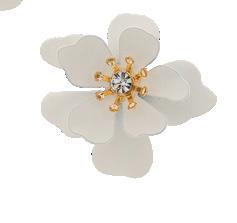
Compiled by Charlotte Brundrett



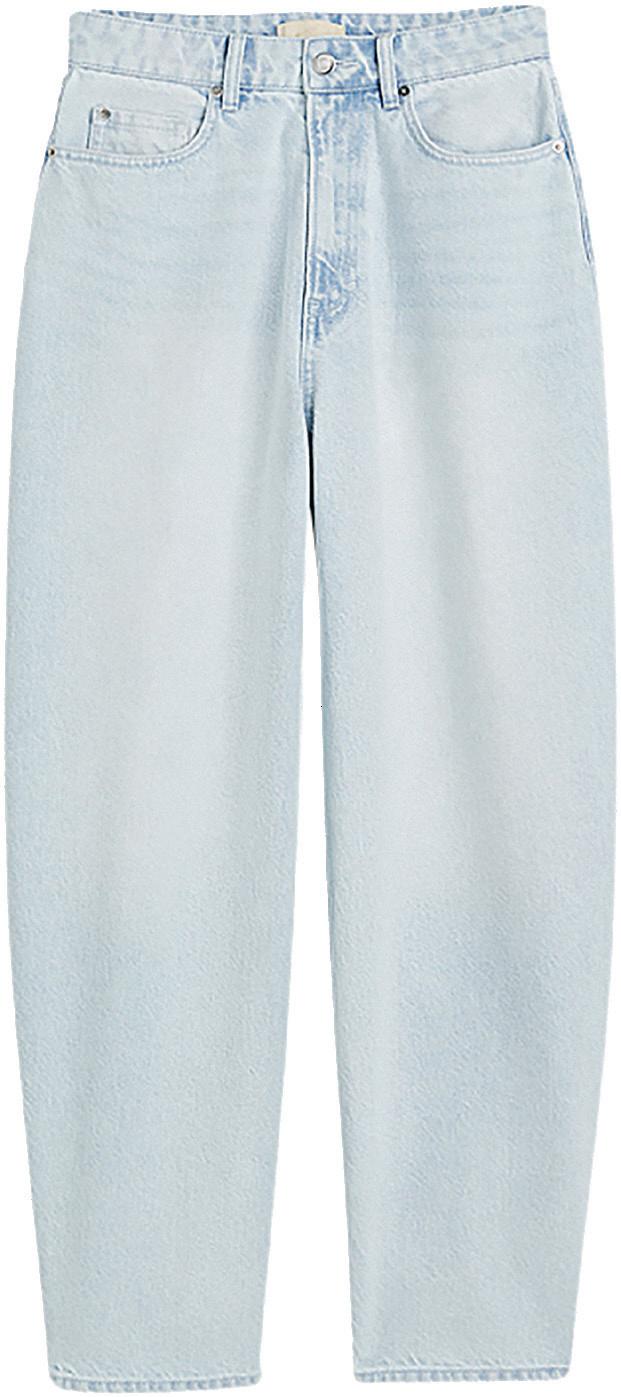





CLOCKWISE FROM TOP LEFT
Shashi Bloom earrings, $108.75, revolveclothing.com.au; Lace short sleeve shirt, $99.95, sussan.com.au; Nymph sunglasses, $100, au.lespecs.com; Oversized tie-detail cropped shirt, $115, cos.com; Olea plunge balloon sleeve maxi dress, $460, shonajoy.com.au; Micro lapis lazuli bead bracelet in gold, $129, medleyjewellery.com.au; Boxer shorts, $179, st-agni.com; Rimmel Scandaleyes Waterproof Eyeliner Blue, $13.99; Blaze Silverware leather sneakers, $189, wittner.com.au; What If...Sky? watch, $175, swatch.com; Relaxed jeans, $89.95, hm.com


If you tend to shy away from bold prints, consider pairing a printed clothing item with more understated accessories and layering pieces, ideally within the same colour family. This helps to balance out the loudness of the print design with the rest of your outfit.






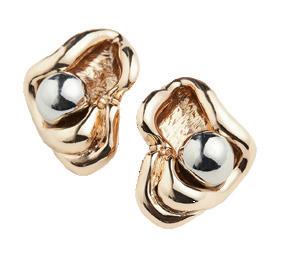

CLOCKWISE FROM TOP LEFT Wesley printed mini skater dress, $169.99, forevernew.com.au; Primrose ruched midi dress, $390, sirthelabel.com; Ribbed fan pendant necklace, $149, medleyjewellery.com.au; Tofu silk drape top, $379, st-agni.com; Organic shaped earrings, $19.95, hm.com; Straight twill trousers, $540, matteau-store.com; Nalar heels, $74.95, novoshoes.com.au; Gucci Bloom 100ml EDP, $169.99
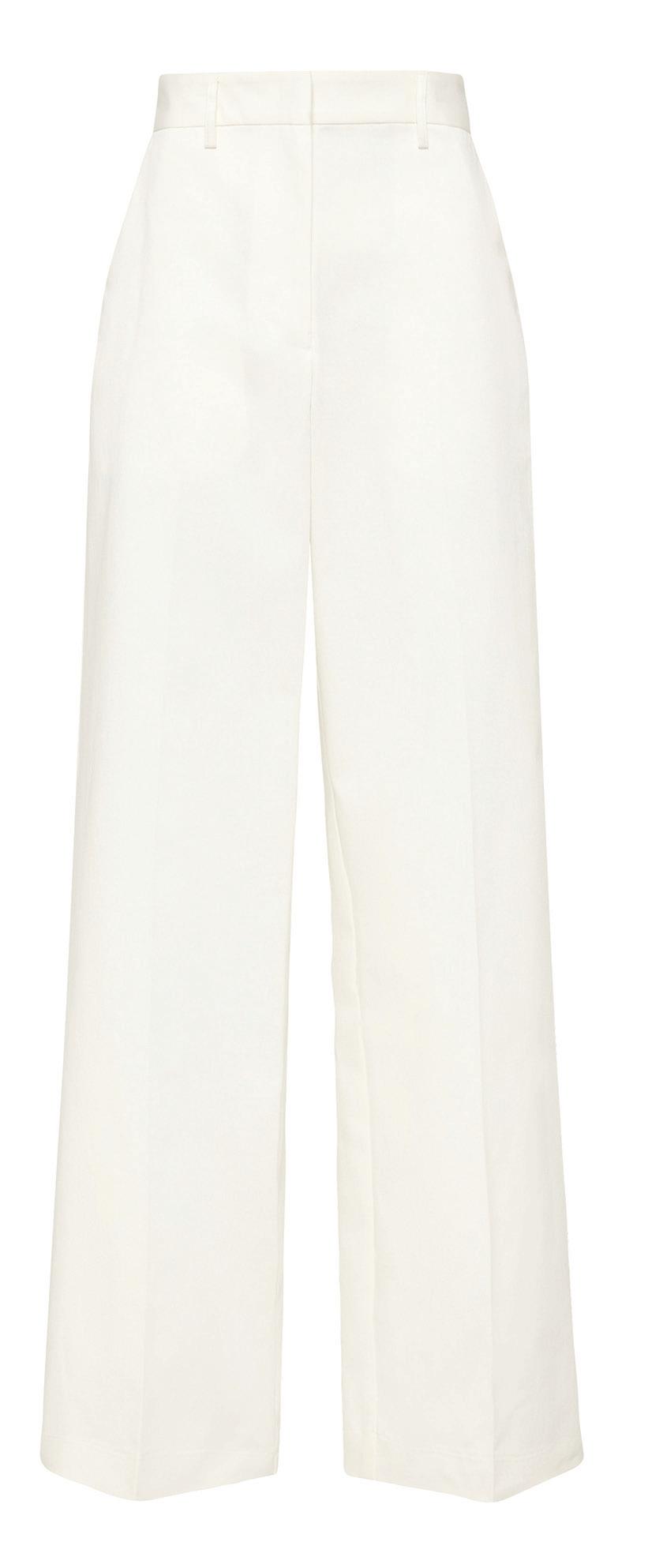
91% agree skin looks fresher, healthier & hydrated*
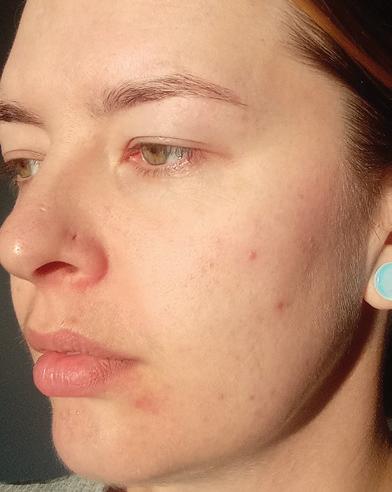

Before After




Rich, warm neutrals are having a renaissance this season
Compiled by Charlotte Brundrett






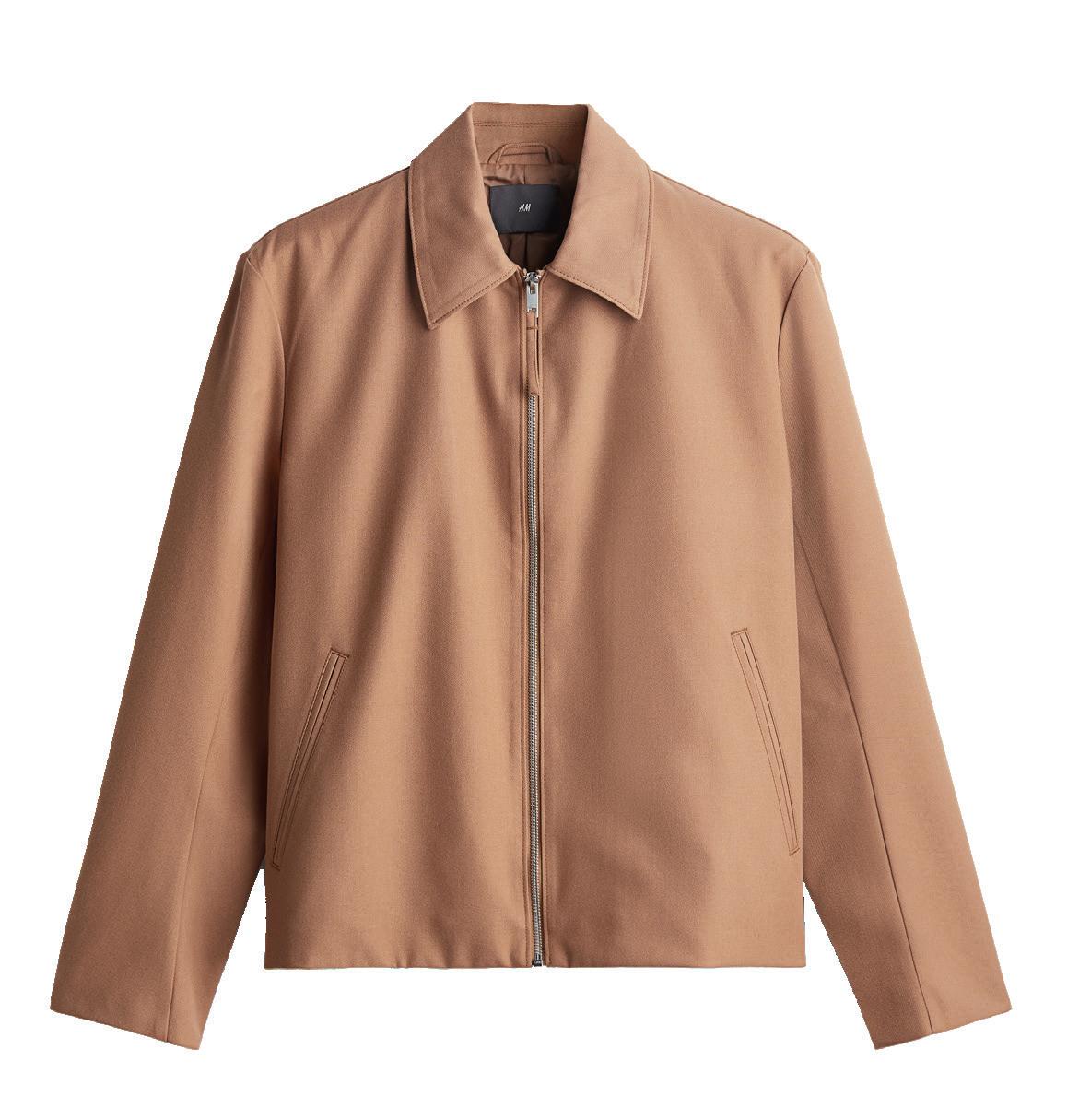



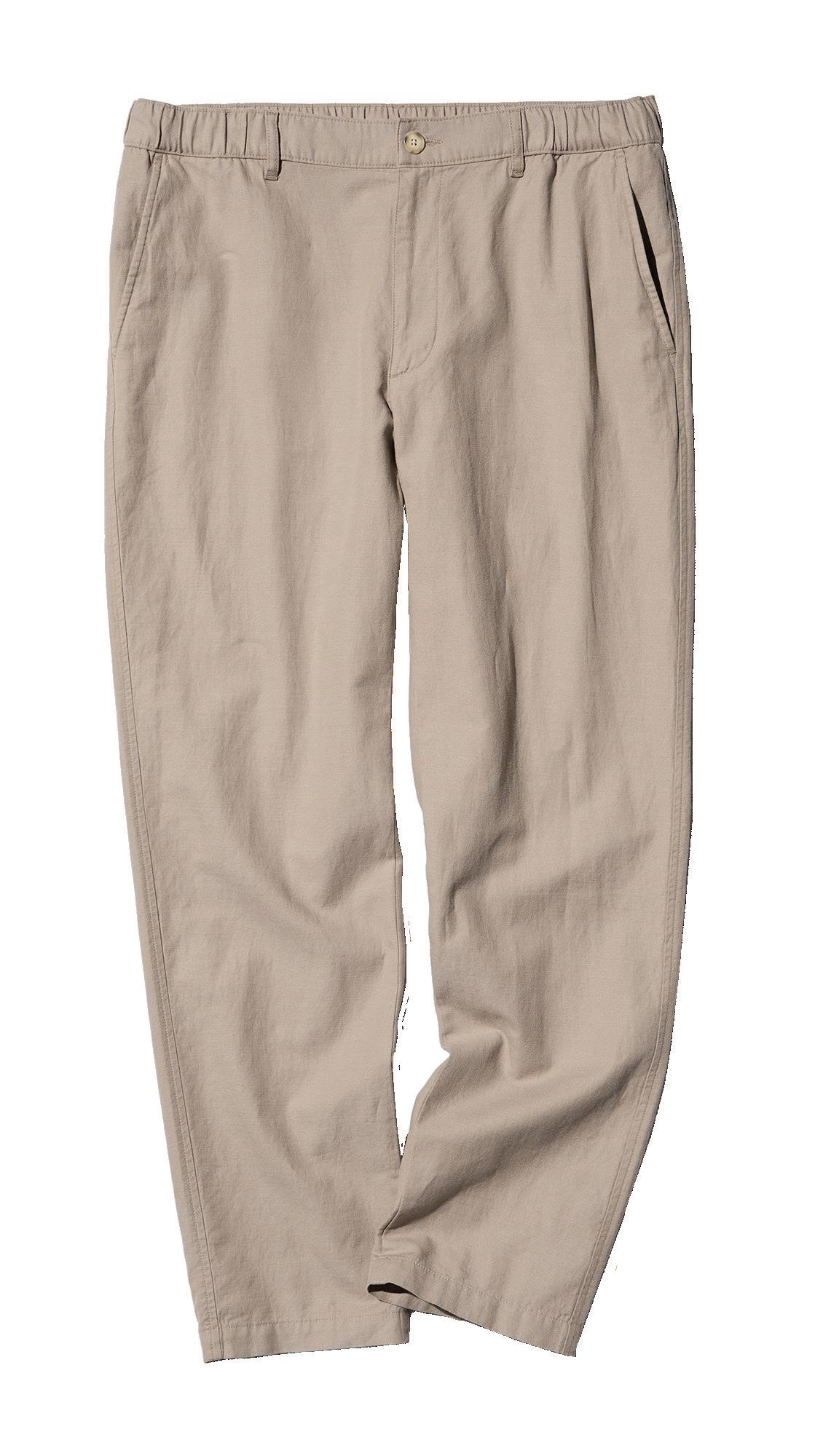

CLOCKWISE FROM TOP CENTRE
Regular fit twill overshirt, $34.99, hm.com; Bound Agatha knit polo, $189.06, revolveclothing.com.au; Miansai sterling silver bracelet, $153.42, mrporter.com/en-au; Linen blend relaxed pants, $59.90, uniqlo.com/au/en; Dunk Low Retro Premium sneakers, $180, nike.com/au; Natio Men’s Daily Face Wash 150g, $10.39; Duvin Design Leisure Walk shorts, $110, revolveclothing.com.au; Birkenstock Kyoto slides, $201, hbx.com; JW Anderson x Uniqlo tote bag, $59.90, uniqlo.com/au; Mission on Earth Bioceramic MoonSwatch watch, $435, swatch.com/en-au; Men’s sunglasses, $19.99, hm.com










For a fi nishing touch that lingers, choose a perfume that refl ects your spirit, style and the blossoming season



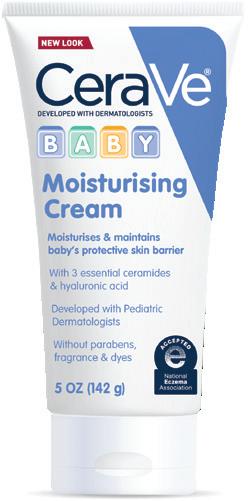

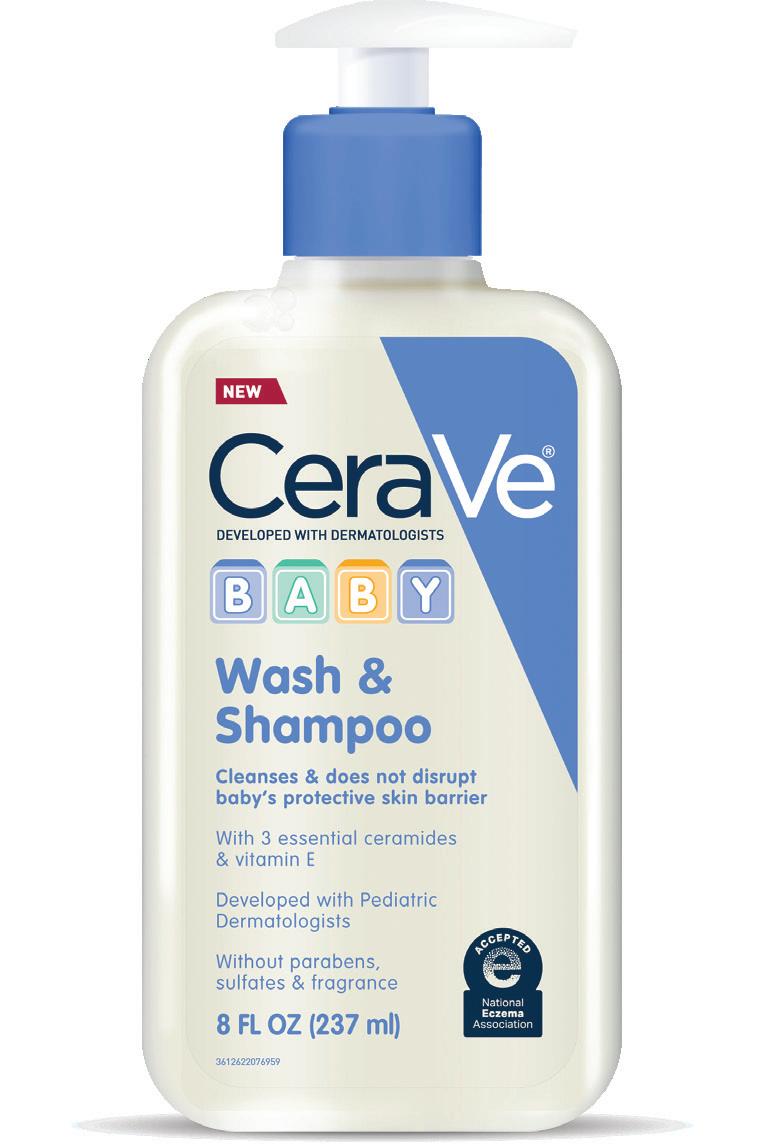



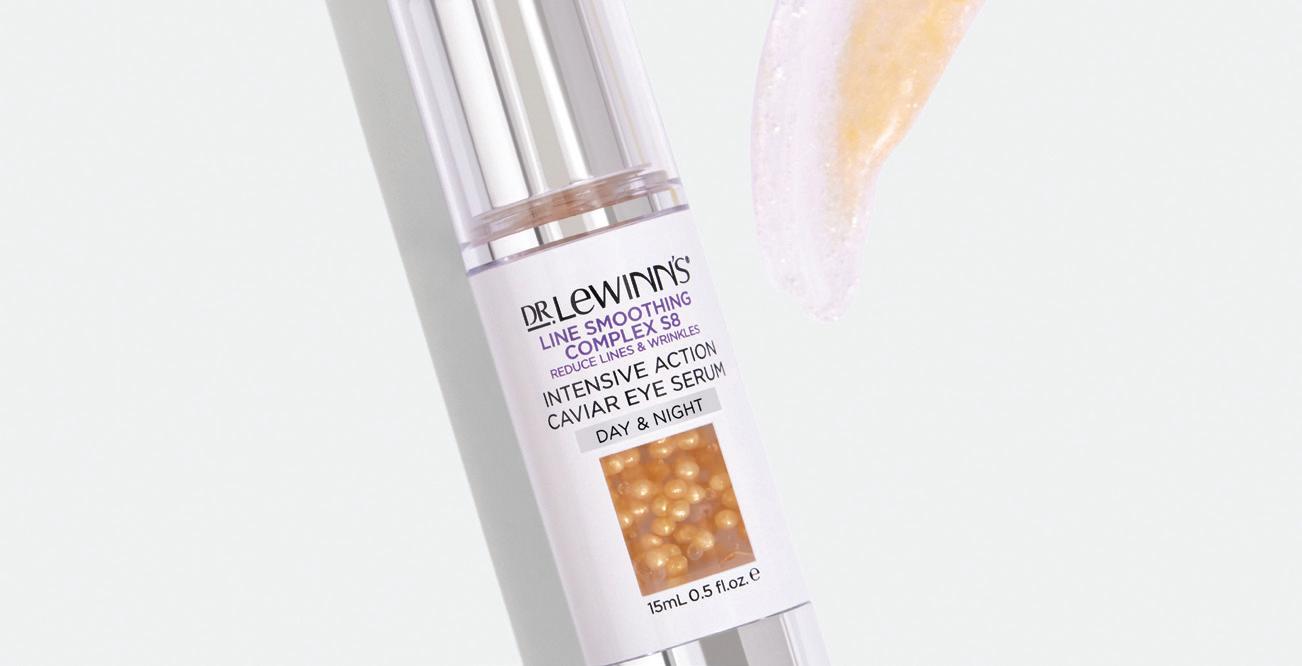



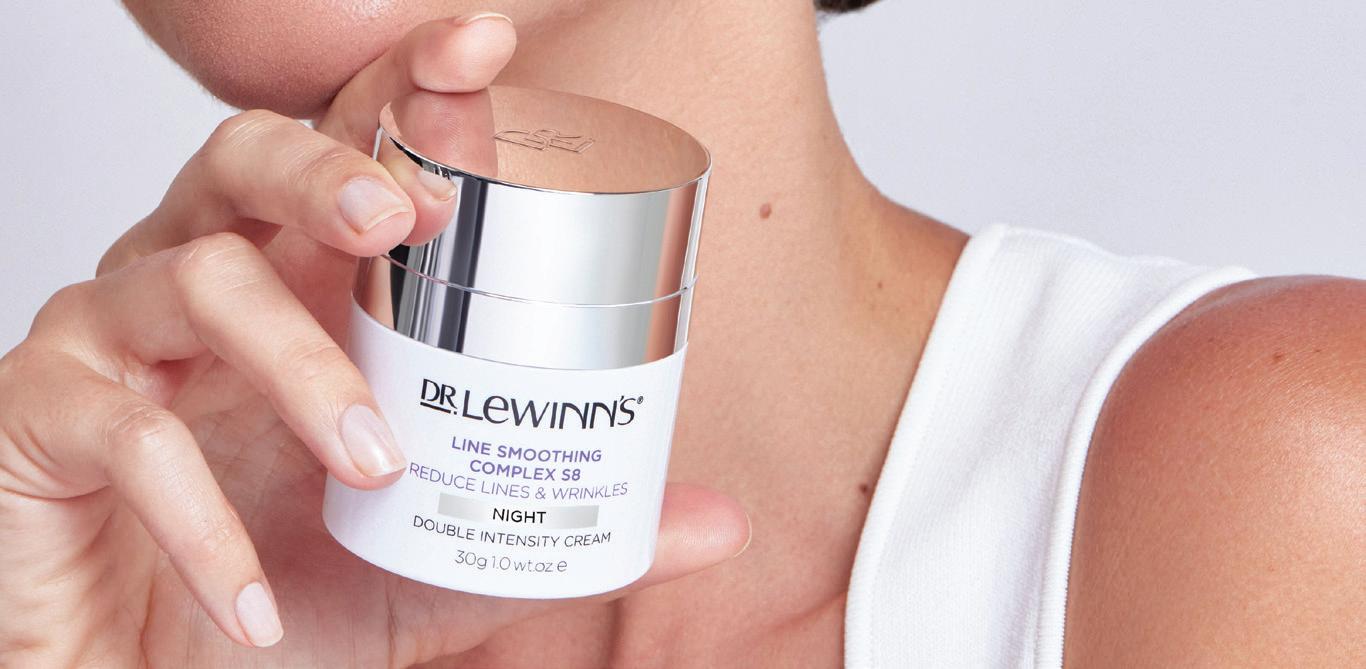

Juggling three kids under four and a busy career isn’t easy and, refreshingly, the TikTok creator of the year doesn’t pretend it is
Words Siobhan Duck

Forget internet trolls. Indy Clinton says the judgment mothers face every day from society — and themselves — is far more challenging to navigate. In a space largely populated by highly curated (and unattainable) images of
parental perfection, Indy, 27, has amassed a huge online fan base with her unvarnished photos, videos and Sleep Deprived podcast about life with husband Ben Azar and their three children, Navy, 3, Bambi, 1, and nine-month-old Soul.
While acknowledging that sharing such a candid glimpse of home life can leave anyone more open to online criticism, Indy shrugs and says it’s nothing she can’t handle after 14 years on social media.
“The thing about mums is that you’re always going to get judged, no matter what you do. So just do what you want,” says the 2023 Australian TikTok creator of the year.
“Even if you are not online, you’re going to be judged by your mum, your mother-inlaw, even other mums. You’re always being judged by your choices when you’re a mum because we’re easy targets. We’re sleep deprived. We’re emotional and we are mostly just trying to survive.”
Before welcoming her first child nearly four years ago, Indy admits even she was prone to making snap judgments.
“One thing I never understood before I became a mum was when mothers would say they didn’t have time to shower. I was like, ‘That’s bulls***. You are just playing the victim. Why can’t you shower when your kid is asleep or your
partner gets home?’ Now I completely get it.”
Having weathered all the daily chaos that parenting small children brings — the tantrums, mountains of laundry, toys strewn all over the house and sleepless nights — Indy has a new appreciation for her own mother.
“And for any mum on the street,” she says. “If I see someone wearing odd socks or looking like they just rolled out of bed I will give them a look like, ‘I get you babe! I understand you!’ — because we are so selfless.
“We put every single person, including the dog, before us. We expect mums to always have their s*** together and have make-up on every day and their hair blow dried.
“I really thought I was going to be that mum and now I’m just lucky to have undies on and my hair brushed most days.”
It was soon after Navy was born that Indy, frustrated that her own mothering experience wasn’t living up to other people’s social media, began offering a more realistic snapshot.
“All I would see were these picture-perfect photos of kids
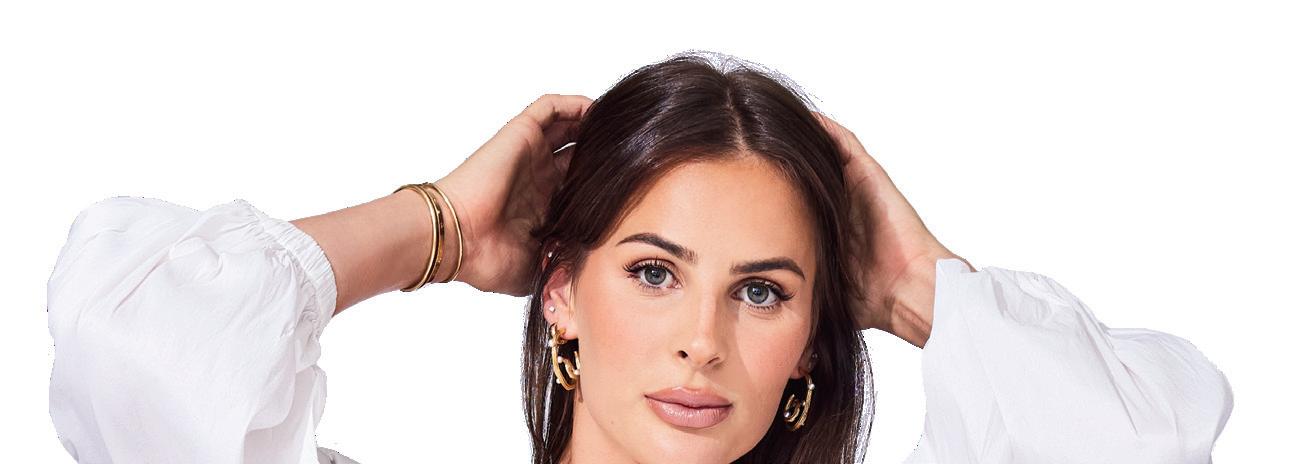

“SO I JUST STARTED SHOWING MY REALITY. AND IT MADE ME FEEL LESS ALONE WHEN SO MANY OTHER MUMS JUMPED ON THE BANDWAGON.”
Indy wears Aje white flower top and jeans, Reliquia Jewellery earrings, and her own bracelets throughout INSET Meshki cardigan, Zulu & Zephyr vest top, Uniqlo knit leggings and Brie Leon gold hoop earrings. The Sofacompany Lucy armchair in cool grey weave is from Life Interiors
in their collared shirts with no food on them and, once I had Navy, I was like, ‘How are people doing this?’” she says with a laugh. “I thought, ‘Am I being punked right now?
How are people keeping these children clean? Photoshop?’
“So I just started showing my reality. And it made me feel less alone when so many other mums jumped on the bandwagon and said, ‘Oh my god, this makes me feel so much better because my kids are the same’.”
Indy struck a chord with her no-frills videos about the drudgeries of motherhood showcasing “how I go to the park, pick up after my child, watch him create a mess, and cry about it at night”.
on it for a job and then on it for pleasure”.
She tries not to sit up all night doomscrolling or checking emails. And she makes time for daily exercise to look after her mental and physical wellbeing.
“I know there is so much pressure put on women — not only those in the public eye but just women in general — to bounce back after they have kids,” she says.
“But I wanted to get back into exercise and fitness and lose my baby weight because that’s what made me happy and made me feel good. I’ve always been into healthy eating and working out.”
Having grown up surfing on Sydney’s Northern Beaches, Indy has always loved being
to the online world. But she is also realistic and hopes to “create an honest relationship with them where they come to you with problems”.
“I think having strict parents, where they completely cut you off from social media, is only going to have a negative effect because they’re going to be the outliers left out,” she says.
“It’s inevitable every child’s going to want to get online and see the world through apps like Snapchat, Instagram, TikTok, whatever it is.
“You need to have an honest, open relationship with your child and educate them about the pedophiles and the freaks that they may come into contact with and what to do if they’re in trouble.”
“I KNOW THERE IS SO MUCH PRESSURE PUT ON WOMEN … TO BOUNCE BACK AFTER THEY HAVE KIDS.”
Her Instagram account blew up and she won even more fans when she made the move to TikTok and set herself apart from the crowd on that platform, too.
Unlike all the TikTok dancers and cooking demonstration videos, none of what Indy shares online is rehearsed. And her content evolves alongside her growing family.
“Right now, they (her family) love doing it, but I’ve never ever forced them into doing something they don’t want to do,” she says.
“Navy loves it. And I’m teaching Navy about making money and how you can buy things that you like if you work hard, make money and you put it in a bank account. So, he’s all for working.”
Indy has also had to set boundaries for herself, realising social media can become all-consuming “when you are
outdoors and active. “I try to get out for a regular walk, but a walk isn’t really exercise — it’s more clarity for my mind,” she says.
“I have started doing infrared pilates, which I love. And I have a home gym that I use — though when I say home gym, it’s really a bunch of rusty weights in the backyard that are covered with cobwebs and spiders.”
She’s eager to give her children the same freedoms she enjoyed when she was growing up — “to catch the bus to school and ride their bikes with their friends” — rather than wrap them in cotton wool.
And while her parents’ rules on social media didn’t work on her growing up (she secretly opened a Facebook account at 13), she plans to give her kids just a flip phone without internet when they reach high school to delay their exposure




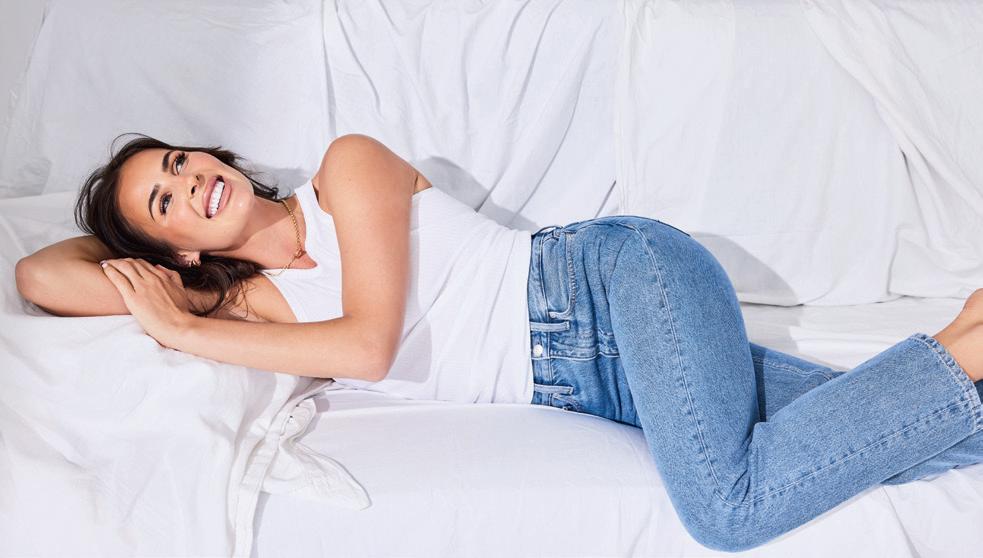
Indy Clinton gets deep and personal in her podcast After spending years chronicling online the joyous, messy business of mothering three young children, Indy Clinton is now also connecting with fans through an even more personal format.
Indy, who has amassed more than 2.5 million social-media followers, now hosts the aptly named Sleep Deprived podcast to expand on her experiences and better share her thoughts and feelings. Now in its second season, Sleep Deprived, sponsored by Chemist Warehouse, is among the top podcasts in Australia and New Zealand, edging closer to a million downloads.
“I think podcasting is a really interesting outlet for your followers to get to know you on a deeper level because you can have your best friends, your family and parenting experts come and talk to you,” she explains.
“On TikTok I don’t really talk as openly about my perspectives — it’s more about describing my night and the lack of sleep.”

So far, Indy has welcomed on to the show Married at First Sight star Martha Kalifatidis, as well as her parents, best friends and three of her four siblings.
Her dream guests include actors Chris Hemsworth (whose approach to parenting and healthy living she admires) and Margot Robbie (who would be well placed to talk about the pressures women in the public eye face).

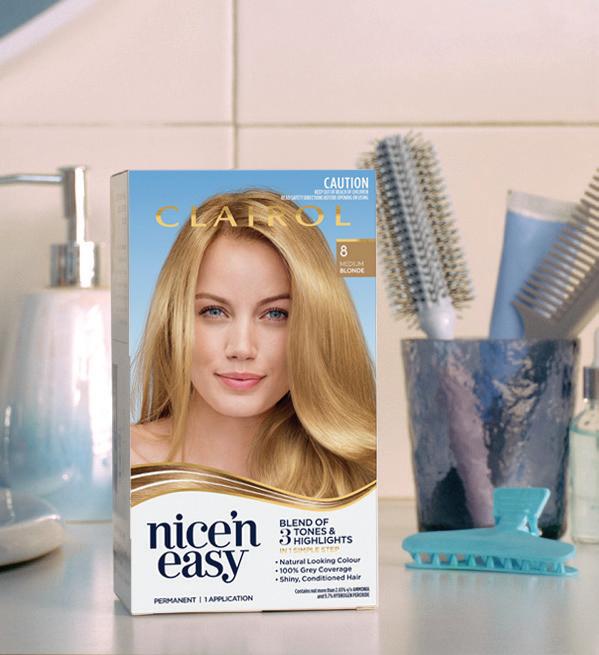

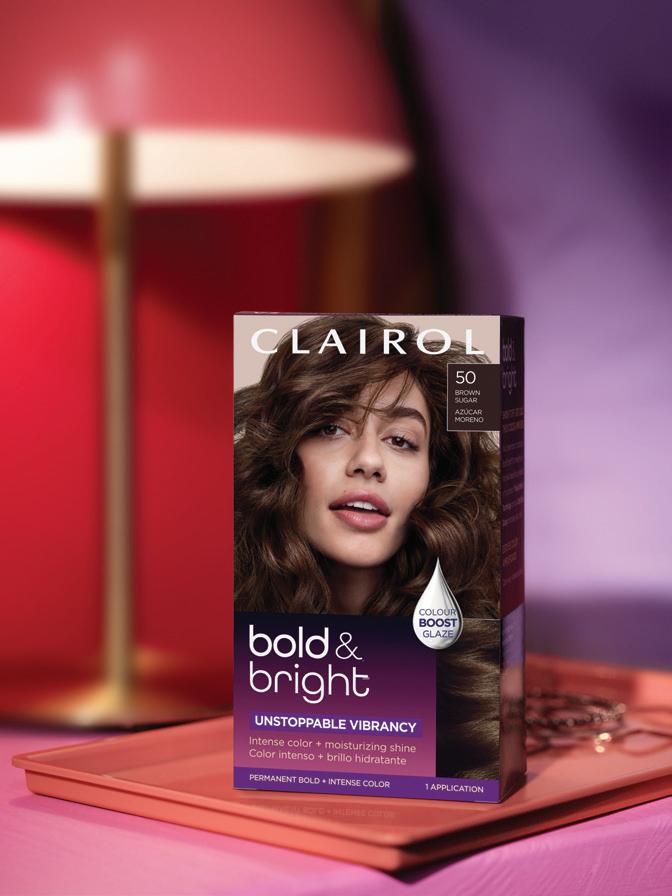
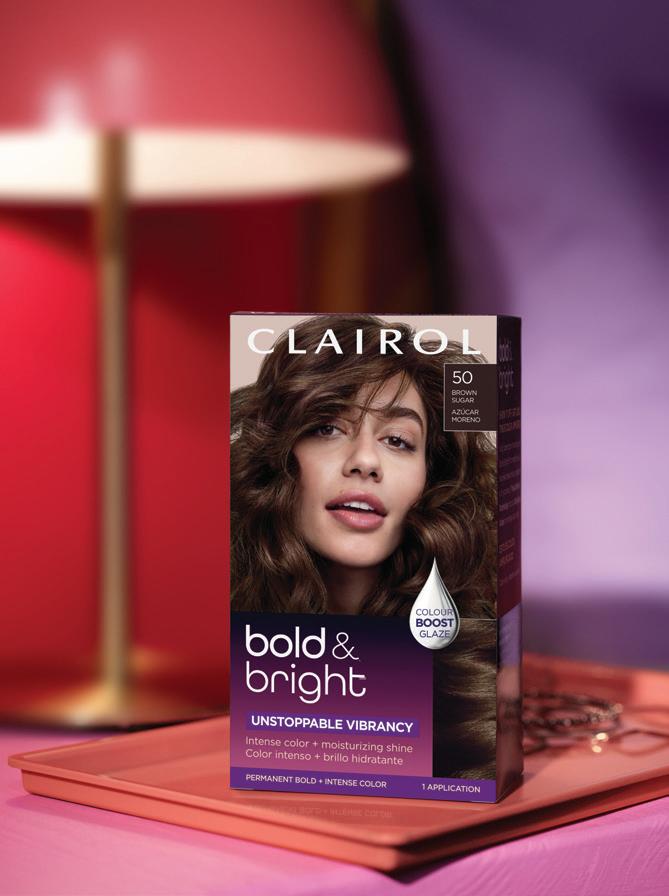

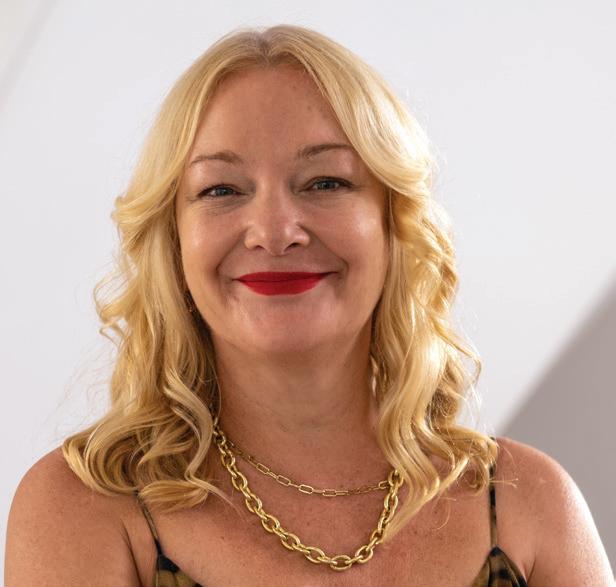





Inspired by the city that is its home, The Merchant of Venice create luxurious and precious fragrances that are reinterpreted from ancient Venetian recipes, formulas and traditions.
Blue Tea is composed around poetic accords of sweet tea and florals. Opening notes of blue tea and nutmeg are layered with magnolia and sweet rose that dry down to powdery musk and vetiver.

In a cost-of-living crisis, finances matter more than ever before. Here’s how to save and source more cash if you’re feeling the crunch
Words Karen Fittall
Find and plug your money leaks
Sarah Megginson, a money expert at financial comparison site Finder, describes money leaks as things you’re paying for unnecessarily. “For example, the late fees you get when you forget to pay a bill on time,” she says. “That’s a really big one, and the fix is automating your bills. I’m a big fan of having a designated bills account where you deposit the amount of money you need to cover your bills each month and organise for your bills to be direct debited from there.”
Paying for streaming services you don’t use, or doubling up on subscriptions in the same household, is another common money leak, says Sarah, who suggests sitting down once a month to identify and plug new leaks.
Research by Finder shows a basket of 21 items costs $45 more in 2024 than it did two years ago. No surprises then that 42 per cent of us say grocery bills are one of our major financial stressors right now.
To cut costs, it’s worth spreading your weekly shop across different

supermarkets depending on which has the best deals. Consumer group CHOICE says that can cut up to 20 per cent from your grocery bill, saving you about $1660 a year.
Sarah also recommends joining membership programs that deliver genuine savings. “For example, Woolworths has a membership program that’s $7 a month but for that you get 10 per cent off your groceries once a month. I’ve got a family of five, so if I use that on my biggest shop, which is usually a $300 shop, I get a $30 discount that has cost $7.”
Loraine Martin has been buying her wardrobe exclusively from op shops for eight years and has saved thousands of dollars as a result.
“My latest find was a pair of Paige denim jeans, which would have been $300 retail — I got them for $5,” shares Loraine, who now runs workshops about how to shop for pre-loved clothes successfully.

“There are treasures to be found everywhere; you just have to be prepared to look.”
Loraine has two tips for making it work. “You need a strategy to avoid becoming overwhelmed. You either have to be laser focused about what you’re looking for — for example, it may be jeans — or you have to set aside enough time so that you can look through every section in the shop to find a gem.”
And while the savings can be significant, it’s not the only perk. “You’re keeping it circular, which saves on textile waste, and you also know you’re spending your money in a place where it makes a difference.”
4Look for better deals on your ‘big spends’
Research by CHOICE shows you can save about $285 a year by finding an energy provider with cheaper rates. Similarly, switching health insurance providers can save up to $1730 a year.
“Insurance is always negotiable so when I get a renewal notice I call the provider and ask if that’s the best they can do for me,” Sarah says. “Many insurers will offer a discount to new customers, so it’s worth asking whether they’re willing to give you that, too, to retain you as a customer. And if they’re not, I’m really happy to go elsewhere — I’ve got loyalty to my bank balance but I don’t have loyalty to any brand.”
5Eat more plantbased meals
It’s a research-backed way to save money. While a recent international study
found that in countries such as Australia, vegan diets can reduce food costs by as much as a third, even replacing some meat-based dishes for plantbased ones will make a big difference. For example, according to a 2023 University of South Australia study, following a Mediterranean diet, which is predominantly but not solely plant based, saves a family of four $28 a week compared to the typical Western diet. Over 12 months, that’s $1456 saved.
6
Open a highinterest savings account
“Interest rates have gone up, which has been really hard for mortgages but it is also fantastic for savings,” Sarah says. “You can easily get a 5 per cent return at the moment. Opening a new savings account can also be a great chance to look at your savings or start saving, if you don’t already, by setting a goal. It might be as simple as putting $50 a month into an account to get the habit started.”
Whether it’s monetising a passion or a hobby, taking a second job or joining the gig economy, a recent survey shows almost one in two of us have or are planning to start a side hustle. Common examples include pet sitting, tutoring, driving for delivery platforms and buying and selling goods online. “Side hustles can certainly bring in extra money, particularly if you’re doing it short term to hit a financial goal or if it involves doing something you genuinely enjoy,” Sarah says.
OVER SIX FIGURES A
As a regional manager for an aged care provider, Belinda Birt has a busy day job, but she also has a thriving side hustle called Your Secret Closet.
Launched in 2016, it’s a designer dress hire service with an online store and a physical store in the Melbourne suburb of Hampton.
“I was attending a lot of formal events for my partner’s work and I didn’t want to wear the same dress on repeat. But with the cost of a new one ranging from $500 to $1500, that wasn’t a practical option long term,” she says.
“I knew a lot of people who were in the same boat and that’s when I saw a gap in the market.”

Eight years later and having successfully navigated pandemicrelated closures, Your Secret Closet now hires out up to 200 dresses a week, employs staff and turns over six figures a year.
Belinda shares some advice for people with side hustles still in the idea stage.
“You have to really love it because making a side hustle financially worthwhile will be time consuming,” she says.
“Get to know your competitors so you can find your niche or point of difference and once you start, stick with it. I think most ideas need at least 12 months to develop and grow.”
Research released by the Australian Securities and Investments Commission’s (ASIC) Moneysmart in June shows 47 per cent of adults with debt have struggled to make repayments in the past year. Despite that, three in 10 Australians say they wouldn’t seek a hardship assistance arrangement from their bank or lender, often because they aren’t aware that assistance programs exist. “Australians facing financial hardship should reach out to their bank or lender and just ask for help,” ASIC commissioner Alan Kirkland says. “Seeking financial hardship assistance is a right and lenders are required to respond to every request for hardship assistance.”
Visit moneysmart.gov.au/justask to learn more


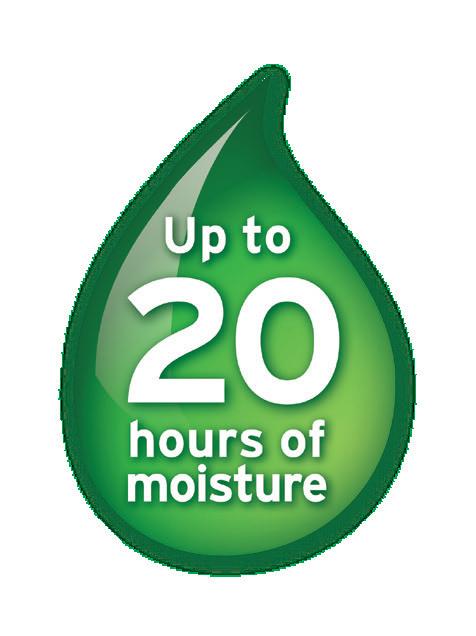




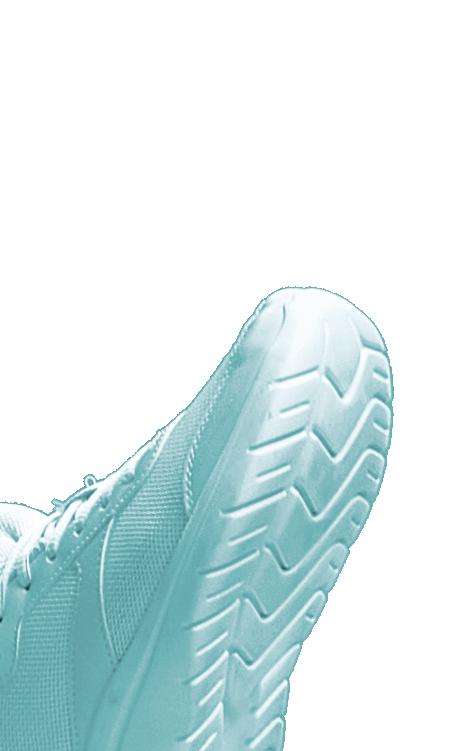
These
pioneering minds
are helping to change how disease is prevented and treated for a better, brighter future
Words Alex Davies
Whether it’s the 1928 discovery of penicillin or the first human heart transplant in 1967, historic health milestones are made possible by incredible innovators putting in the hard yards.
Eighty-eight per cent of Australians clearly see the role of science in improving our lives, according to the 3M State of Science Index.
And 92 per cent of us believe those working in STEM — science, technology, engineering and mathematics — can help us solve the problems of tomorrow. Excitingly, much game-changing work is happening on our shores. We speak to three passionate researchers on a mission to give us happier, healthier lives, plus reveal some exciting STEM research that is under way.
NOUSHIN NASIRI
Head of the NanoTech Laboratory at Macquarie University’s School of Engineering
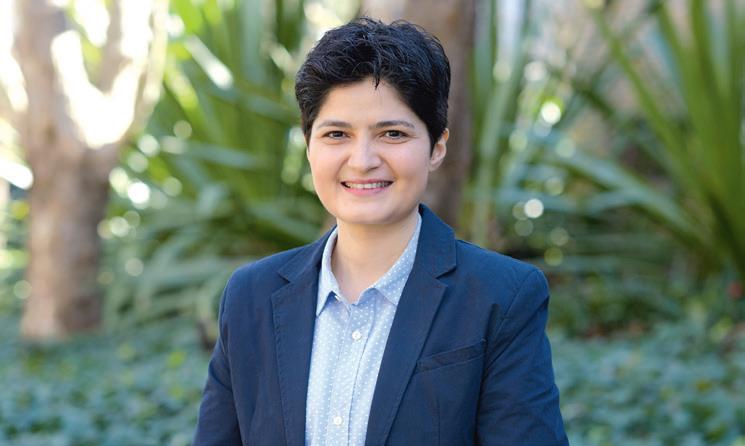
“Discovery, challenge and curiosity were always celebrated by my parents when I was growing up.
My dad is a lifelong learner, which had a huge influence on me. If our car needed fixing, for example, he’d bring me and my brother to the mechanic so we could hear how they figured out the issue. Problem solving was such a reward and a joy that he wanted to share.
I work on smart technologies to help people manage and be informed about their health. One ongoing project is a wearable device called SunWatch, which measures UV levels and gives personalised sun safety advice for your skin type.
I’m also collaborating with surgeons at Macquarie University Hospital to create an extremely sensitive pressure sensor that will benefit the placement of prosthetic shoulders. If we can do that, I think it has future potential to be used in a range of surgeries.
To be creative and do something outside of the box, you have to first come out of the box. That can mean sitting in seminars and talking to colleagues from other subjects who might help us to see a project through a new lens. Nine times out of 10, creativity strikes when I’m in an unrelated place.
I tell young girls it’s almost their duty to become engineers, as we need more women around the table and designing inclusive products that will benefit everyone. Try to reframe challenges as opportunities for future celebration — and always stay curious.”
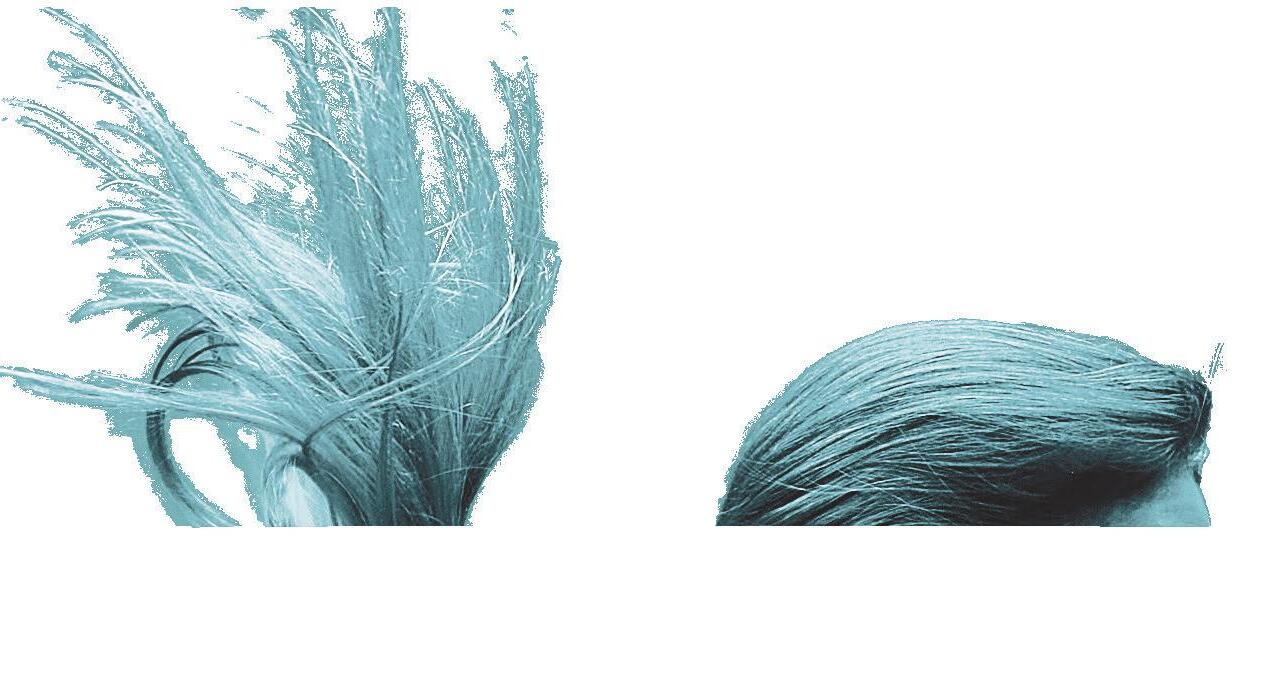

Imagine a T-shirt keeping you cool as you exercise. The secret to making this a reality might lie in a substance called nanodiamonds. According to a study by RMIT, incorporating these tiny particles in fabric cools the wearer by drawing out body heat and releasing it from the fabric. Researchers believe nanodiamonds could star in future sportswear, fire-fighting apparel and more.



“Around 1300 women in Australia are diagnosed with ovarian cancer each year, but the way we treat it hasn’t really changed in two decades. There’s currently no screening test for early detection or therapies available that will achieve long-term remission.
My work is focused on late-stage disease and improving treatments, with a goal to make ovarian cancer more manageable and survivable. It’s for patients to have time.
The late campaigner Leane Flynn was a friend and powerhouse in ovarian cancer advocacy. She was invested in
DR MAREE BILANDZIC
Research group head at the Hudson Institute of Medical Research, focusing on ovarian cancer
changing outcomes for other women so they wouldn’t have to suffer as she had.
What drives me are these connections within the ovarian cancer community; there’s such a strong belief that we can make a difference.
I’ve recently started a small biotech company based on 10 years of research. We’ve created a novel treatment that’s in the early phases of preclinical testing, which is so exciting and among the proudest moments of my career. I’m also hugely proud of the new generations of scientists I’ve had the privilege of training.
Artificial intelligence could spark a happier future for the 100,000plus Aussies living with inflammatory bowel diseases (IBD). A University of Newcastle team is using the clever tech to crunch reams of data about the gut microbiome to help it identify data patterns that could lead to new therapies.
A world-first trial to slow the effects of motor neurone disease (MND), a rapidly progressing neurological disorder, has begun. Neurologists at Southern Adelaide Local Health Network are exploring whether a new pill could stop symptoms from worsening and even improve oncelost capabilities including speech and movement.
Symptoms of this disease can include bloating, abdominal pain and fatigue, which makes it difficult because women are so used to putting up with uncomfortable changes within our bodies.
Advocate for your health, trust your instincts and if you feel dismissed by a health care provider, find another who will listen.
Curious about a STEM career? Look for something that sparks your passion. It’s motivating to know what you’re doing can change society for the better.”
Tucking into a healthy plant-based diet could reduce your risk of obstructive sleep apnoea, suggests new Flinders University research. This sleep disorder — often characterised by loud snoring and stop-start breathing — can elevate your likelihood of high blood pressure and other issues. Scientists believe the beneficial link could be thanks to the inflammationlowering properties of a plant-forward approach. Pass the vegies!

DR EMMA FOSTER
Consultant neurologist
at The Alfred hospital, and Monash University research fellow
“At school, my report cards would say, ‘Emma asks lots of questions’! I’ve always loved the building blocks of knowledge and have a deep appreciation for the awe-inspiring complexity of science.
Neurology itself is a diverse specialty; I enjoy looking after a range of people and conditions, from epilepsy to migraine.
I’m also leading a study to uncover the true prevalence and burden of migraine in Australia. With that information, you can incentivise research funding, optimise health care pathways and raise awareness. It’s vital to increase society’s empathy and understanding of this debilitating chronic illness as much more than ‘just a headache’.
I remember a patient on a new migraine medication telling me she’d been able to go camping with her family for the first time. Seeing somebody’s life change like that is amazing. I want people to know they’re not alone; there’s a real push to make sure migraine is better recognised and treated.

As a clinician, it can be useful for someone to mark migraines in a calendar using a traffic light system. Red means your day was a write-off; orange that you could do some things; and green indicates you could push on. Include any pain relief you take, plus if you have a period — hormone fluctuations are often critical for predicting attacks. All of this can help me to spot patterns over time. STEM offers so many rewarding careers, so think about what you enjoy.”
SKINCARE BRAND US^ IN THE
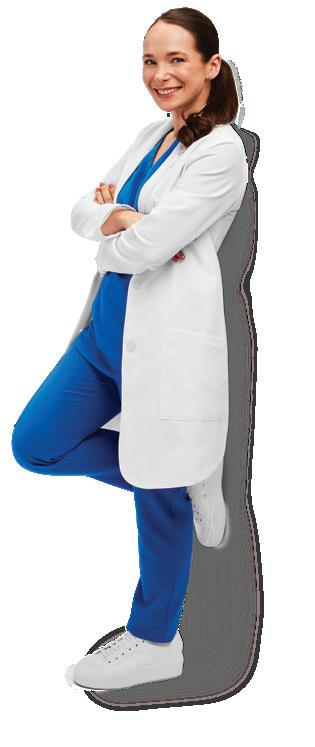
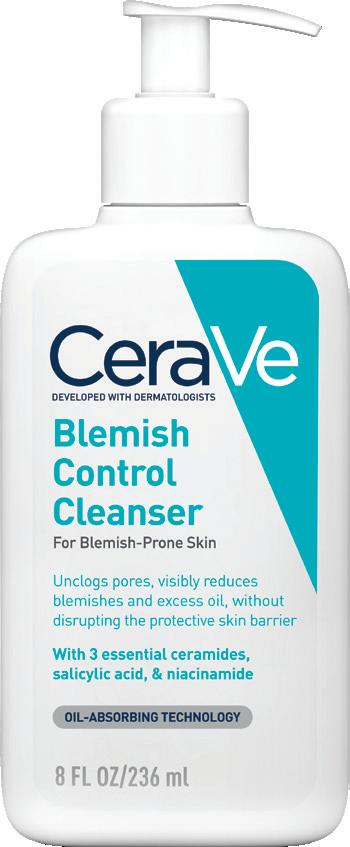

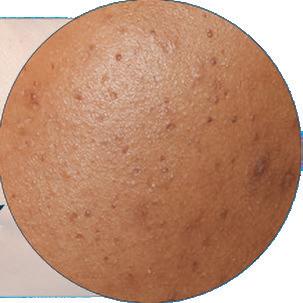








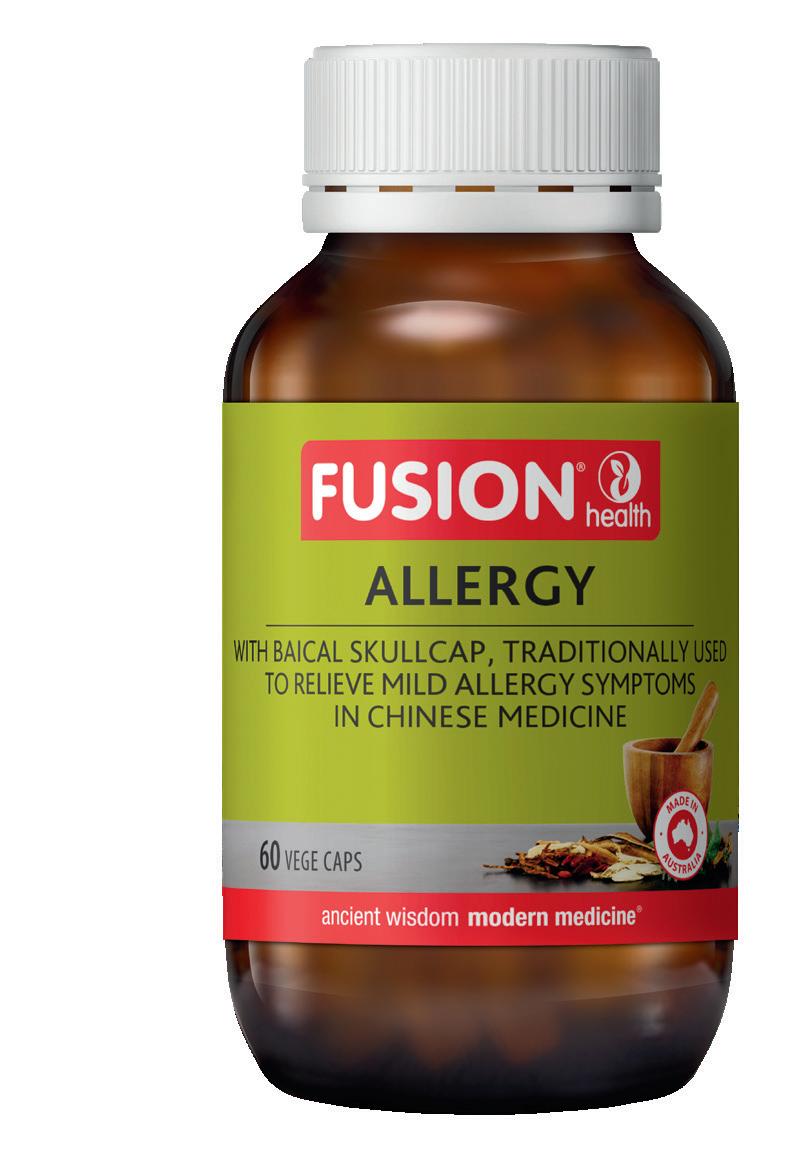
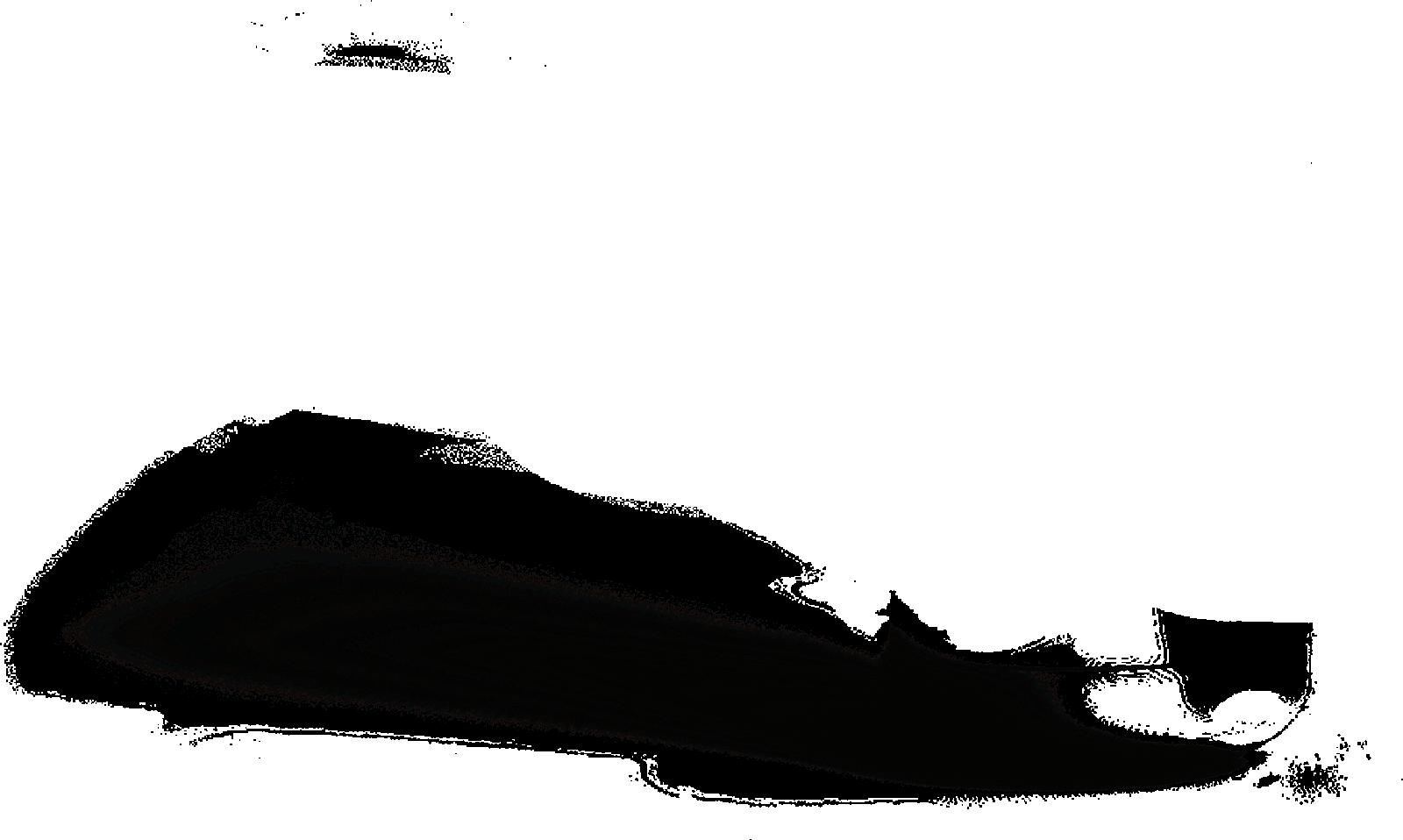




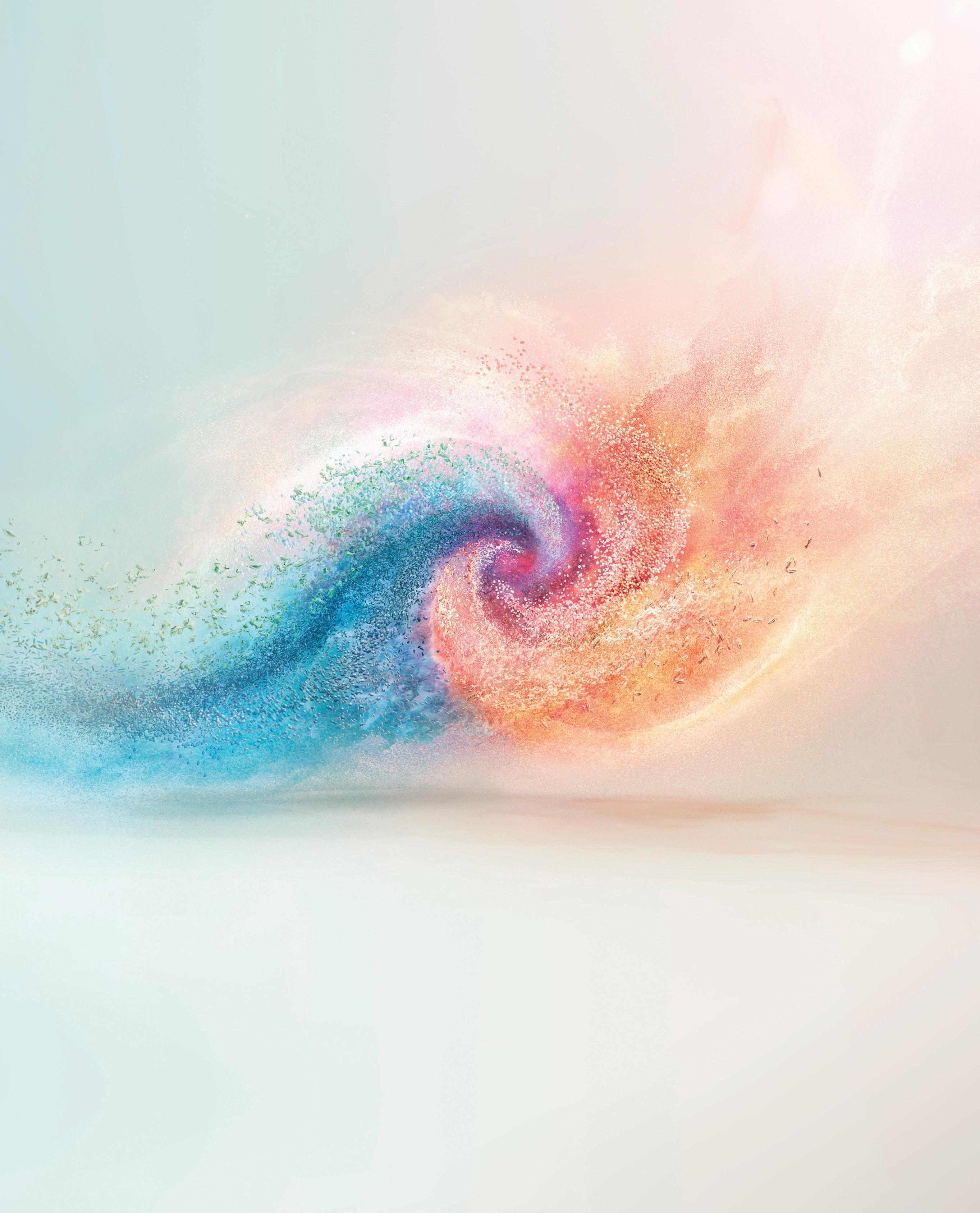
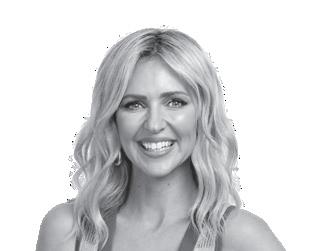
JACQUI FELGATE
The House of Wellness TV co-host talks to Stephanie Browitt about surviving tragedy and how humour can help on hard days
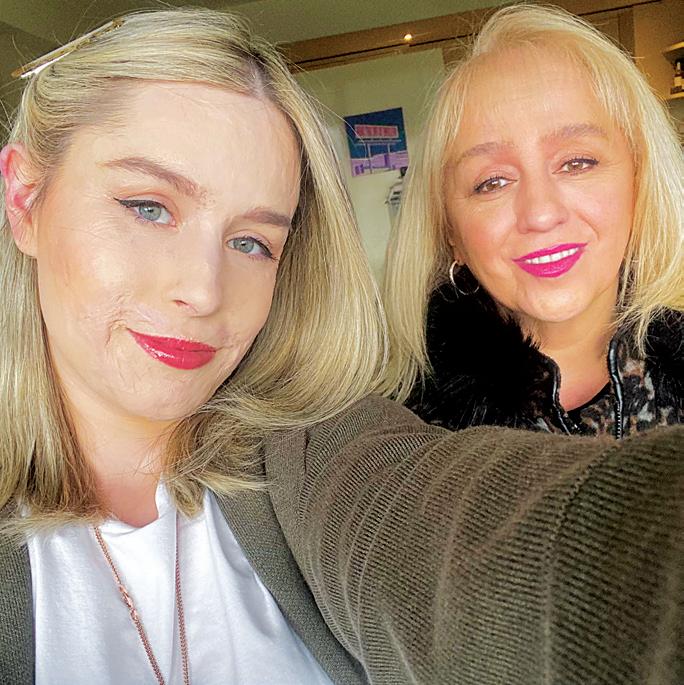

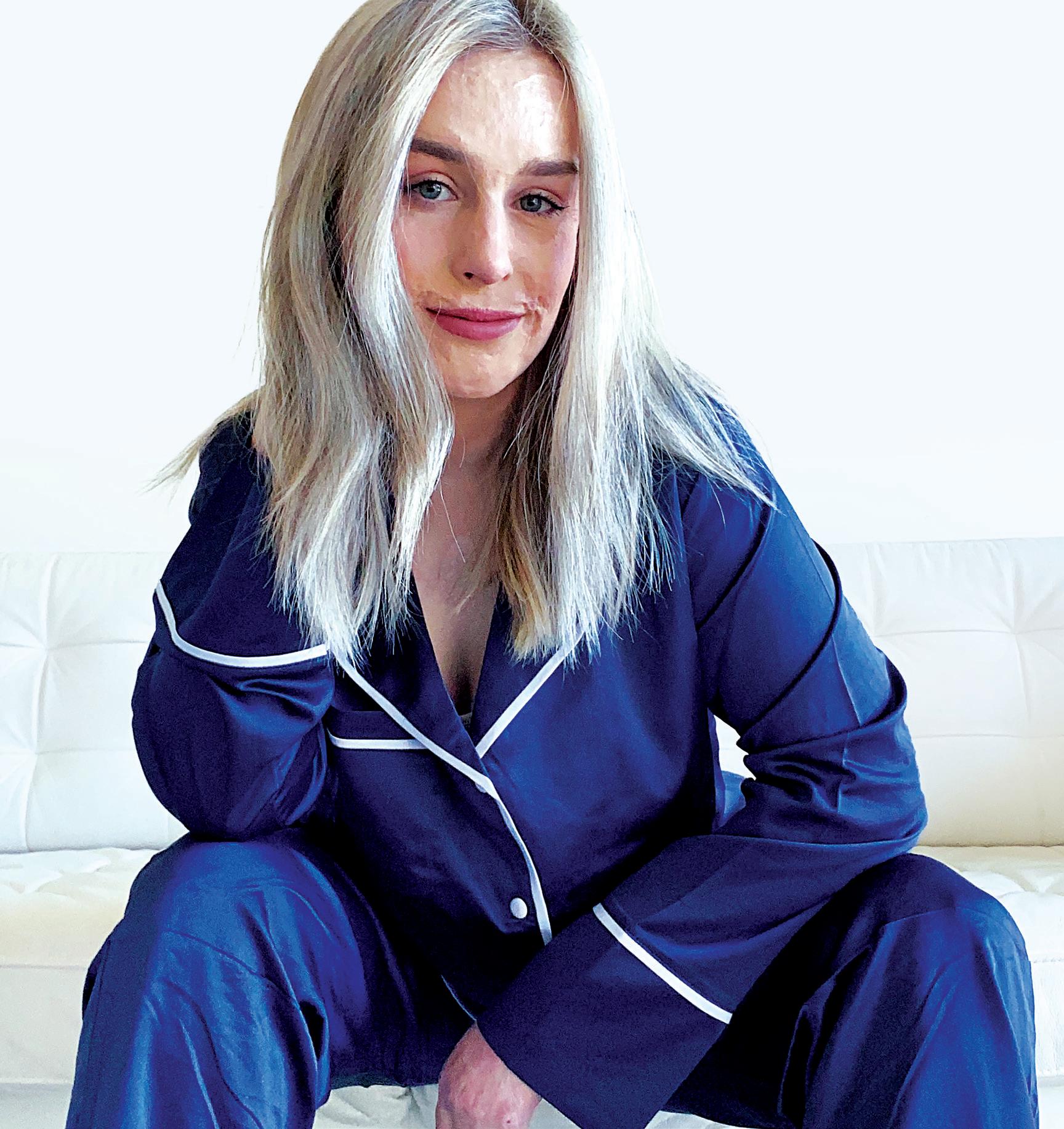
Stephanie now appreciates how far she’s come. INSET The burns survivor with her devoted mum Marie.
“I’VE ACCEPTED THAT EVERY SCAR IS A SYMBOL OF MY SURVIVAL” Stephanie Browi
Stephanie Browitt’s life was forever altered on December 9, 2019.
During a family holiday in New Zealand, a volcano called White Island exploded, killing her father Paul and sister Krystal, 21, and leaving her with severe burns to 70 per cent of her body. “With the realisation of the severity of my burns, grafts, finger amputations and appearance but, worst of all, my grief from learning that both my sister and dad had passed away tragically, there were many times I did not want to go on. It was too hard to bear the reality of my state and my family’s void. Every day was a struggle and often still is.”
A mother’s love willed Stephanie, 28, to live.
“My beautiful mum (Marie) constantly reminded me that giving up hope was never an option. She was by my bedside every single day. I don’t know how she did it because she had no one, but I know that I was all she had left to hang on to. That encouraged my fight to survive — also, thinking about my dad and sister and what they would want from me.”
Stephanie started sharing her story on social media.
“I began sharing and writing about my feelings for my own cathartic needs. It was a form of rehabilitation because I had sort of lost my connection with the outside world. Being in hospital for so long and then having to solely focus on my recovery, my mental health was struggling. But the responses
I was getting made sharing my experiences so overwhelmingly positive. Burns victims sometimes tell me I have inspired their journey to self-acceptance, and that sometimes makes me want to cry. It is such a beautiful and meaningful thing to hear.”
Removing her face burns mask for the first time after the tragedy was a big moment.
“It was petrifying as my mask was my shield from the world. I was scared about how people would perceive me. I had yet to fully accept my new appearance myself. Each day became easier and the positive responses from others were immensely touching and encouraging. And from that my confidence continued to grow.”
Stephanie has embraced being a body positivity advocate.
“I look at my body today and I’ve come to appreciate how far I’ve come. I didn’t choose my skin but I’ve accepted that every scar is a symbol of my survival.
I’m grateful for all the hard work and challenges my body has had to overcome. I really want other women to realise their body may be different but it is still beautiful. Our uniqueness makes us who we are. I never imagined being a role model for other people but I hope my experience can help remind people of their worth and for them to find inner peace and confidence in their own skin.”
Her social media posts reflect her sense of humour.
“I come from a family where humour is an important part of our everyday life. Has it camouflaged my pain sometimes? Of course it has. But humour helps soothe the soul and I never want to lose that. It’s an integral part of who I am, and we all prefer to laugh than cry. Dad was the joker of the family. He was absolutely hilarious. And we’ve grown up being taught that laughter is the best medicine.”
Stephanie has been working with skincare brand La Roche-Posay.
“I definitely didn’t imagine that happening but I’m so grateful it did happen because it has been a wonderful experience. They are an incredible team of professionals that have welcomed me with open arms and allowed me to express myself and be who I am. I love their products — they have been a part of my routine before all of this happened.”
She is a woman on a mission, with plenty more to achieve.
“My greatest goal in life is to find peace with everything. I want to continue to grow and evolve and to learn. I want to continue to educate others through sharing my recovery journey and what the life of a person with lifelong scars looks like. And I also want to have a family of my own.”



LIFELINE 13 11 14 or lifeline.org.au BEYOND BLUE 1300 224 636 or beyondblue.org.au

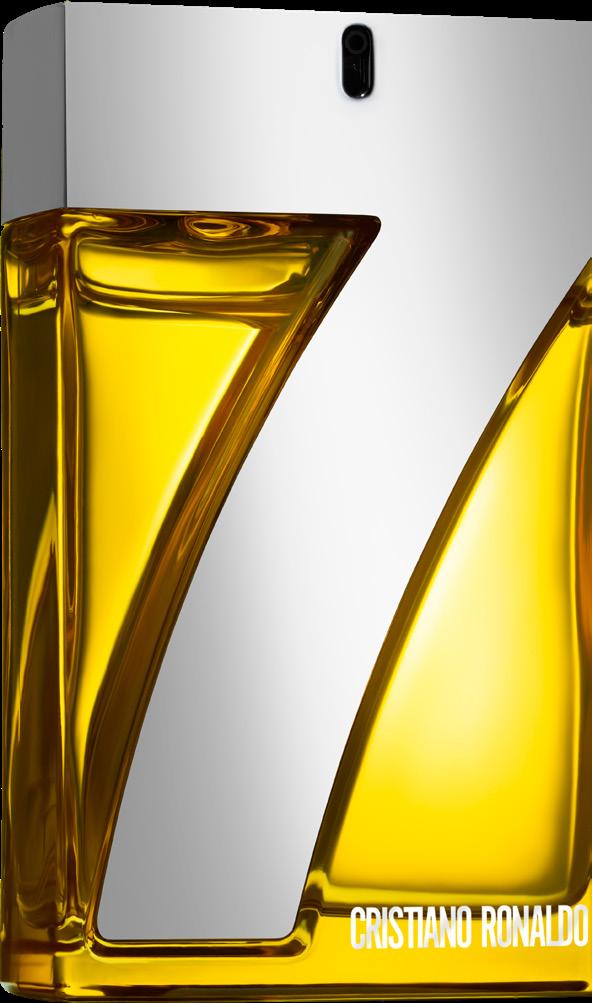




Words Alex Davies
When it comes to happiness, sometimes a small but mighty move can make all the difference.
According to US researchers, joy-boosting “micro acts”, such as writing a gratitude list, brightening somebody’s day or watching an awe-inspiring nature video, can
elevate our emotional wellbeing and even relationships.
“Incorporating these moments into our routine can have a cumulative positive effect on mood while boosting our overall happiness and contentment,” says clinical psychologist Dr Rebecca Ray, author of Small Habits for a Big Life

Remember the childhood joy of make-believe tea parties and going higher on the swings? Play, defined as time spent having fun and without purpose, falls down the priority list when we become adults, but it’s worth revisiting.
Renowned researcher Brené Brown points to play as a brilliant source
of energy, and Dr Ray agrees. “Bringing play back into our lives has benefits including stress reduction, enhanced creativity and improved relationships. Create a play ‘recipe’ by experimenting with different activities and identifying what brings you joy and a sense of lightness,” Dr Ray says.
You don’t have to travel to enjoy the uplifting magic of awe. Dr Ray says magical moments can be found in the everyday, such as the beauty of nature or kindness of strangers. “Mine include the joy in my dog’s eyes when I ask if he wants to go for a walk.”
Jot down a joy list
Note your favourite “joy sparkers”, whether live music, surfing, seeing friends, or the smell of herbs. “When our mood drops, we often become disconnected and forget what makes us feel good,” Dr Ray says. “Creating a joy list can be a powerful tool for lifting our spirits in the moment.”
According to a 2023 US study, one quality conversation with a friend is enough to lift happiness and lower stress.
It is no secret that movement can be powerful for the mind, but did you know that even short bursts (“exercise snacking”) can offer benefits? Think squats and lunges while your coffee brews or jumping jacks before logging on.
A UK study has found meditative self-compassion exercises can calm the heart rate and make us feel more connected to others.
Soul Alive app founder and Everyday Enlightenment
author Luke McLeod says start with a five-minute body scan, then once you feel relaxed, spend some time repeating affirmations that express compassion.
“Try ones like, ‘I am enough as I am’, while connecting with how the words feel within your body,” he says.
Whether you have aced a recipe or smashed your step count, pat yourself on the back for the smaller triumphs along with the bigger milestones.
“Celebrating daily wins is crucial for mental wellbeing,” Dr Ray says. “Acknowledging and rewarding ourselves for these accomplishments can boost self-esteem and motivation via the release of dopamine.”
Congratulate a loved one on theirs, too. Canadian research shows regular acts of kindness positively impact our mental health.
“Getting lost is often seen in negative terms and equated with failing,” says psychologist Dr Tim Sharp, founder of The Happiness Institute. In his book Lost & Found, he explores the notion that it’s a healthy part of life, trying new things, exploring and growing. US scientists have found experiencing new places makes us feel more positive.
Feeling frustrated? Look to the Japanese tradition of “hakidashisara”, which sees people write negative feelings on plates before smashing them for relief.
Or try writing on paper before shredding or throwing it away. Japanese research suggests this can ease anger after a negative incident.
“This exercise can be helpful for mentally letting go of negative thoughts, if done with intention and mindfulness,” Dr Ray says.
It’s unlikely to banish them forever, she adds, so find expert support if needed. For mental health support, visit beyondblue.org.au
“JOY FOR ME IS ABOUT THE SIMPLE MOMENTS IN LIFE AND NATURE. TRY LEAVING YOUR PHONE AT HOME WHEN YOU GO FOR A WALK; IT’S AMAZING HOW MUCH BEAUTY WE NOTICE BY LOOKING UP AND BEING OPEN TO IT.”
TRAINER, NUTRITIONIST AND THE HOUSE OF WELLNESS CO-PRESENTER


“When I’m in a cafe, I’ll intentionally order foods — like chocolate or peanut butter — that I’ve felt most out of control with or guilty about in the past. This helps to bring back the joy of eating and normalise previously ‘forbidden’ foods.”
DIETITIAN AND AUTHOR OF YOUR WEIGHT IS NOT THE PROBLEM




Need to point out the error of someone’s ways? Here’s how to tread the fine line between feedback and criticism
Living and working with others can be challenging at the best of times. Invariably, many of us find ourselves needing to correct the behaviour of our loved ones or colleagues at some point.
But before you dive in with a critical approach, pause for a moment. According to the experts, there are better ways to give feedback.
Feedback and criticism are often perceived as the same, but psychologist Chris Mackey says they are very different.
“Feedback is generally the notion of giving information for a positive purpose, while criticism will be negative and can imply a degree of judgment,” he explains.
“If information is delivered in a harsh way … and people feel that they’re being judged or disapproved of, they’re going to shift their priority to protecting themselves rather than listening.”
Chris says it’s often easy to spot when someone becomes deflated or defensive, which is a sign to change tack.
“Instead, the communication should be more about motivating and influencing,” he advises. “The conversations can be about hard things, but it needs to be presented more in a ‘win-win’ situation so it feels collaborative rather than just an attack.”
There are a few tricks when nailing your approach to achieve change.
Firstly, Chris recommends avoiding emotive words and labels such as lazy or bad.
“If you’re overgeneralising or blaming the person and using emotive language, they will switch off because their priority will be to get out of that meeting or situation relatively unscathed,” he says.
Instead, use a positive tone, along with “I” statements.
“For example, say something like, ‘I’m bringing this up because I observed such and such happening’, as opposed to, ‘Look, you’ve done it again’,” he says.
Also, be clear about the desired result and check in to ensure your message is getting across. “Ask them to paraphrase the feedback back to you to make sure you both have the same understanding,” he says.
Feedback for employees is one of the most common instances where good feedback works, boosting productivity and morale.
Managers can deliver good feedback publicly and privately. However, when a problem needs addressing, it should be done behind closed doors.
Chris also says to first consider the person’s circumstances.
“Maybe there’s something going on in that person’s life at the moment that is very stressful and affecting their performance,” he says.
“If that person is not able to engage, then (they) may not be able to accept the feedback in a thoughtful way. So make sure it’s a good time for them.”
Psychologist Dr Michael CarrGregg says children also learn and develop when adults assess their behaviour and provide constructive comments.
But little learners can be extra delicate. Never engage in name calling, even as a joke, Dr Carr-Gregg says.
“Name calling is a version of character assassination. It’s belittling and stigmatising. Kids will internalise what is being said. For example, if you call a kid fat, they will continue to think that they are fat even if they lose weight.”
He also says timing is everything. “If giving minor feedback, immediately is a good way to go, as delaying it will allow bad habits to perpetuate. But for more serious feedback, it is better to find a time that suits your child.”
Dr Carr-Gregg says couples need to make time to share their gripes, but “it needs to be calm and respectful”.
“Take turns and listen to each other. And make sure that the kids are watching this to see how it works,” he says.
Chris says it’s important to remember that positive affirmations need to outnumber complaints.
“Basically, in marital and work relationships it’s going to work better if we’ve previously given positive feedback,” he says. “Try to find someone doing something well and acknowledge that whenever we can.”

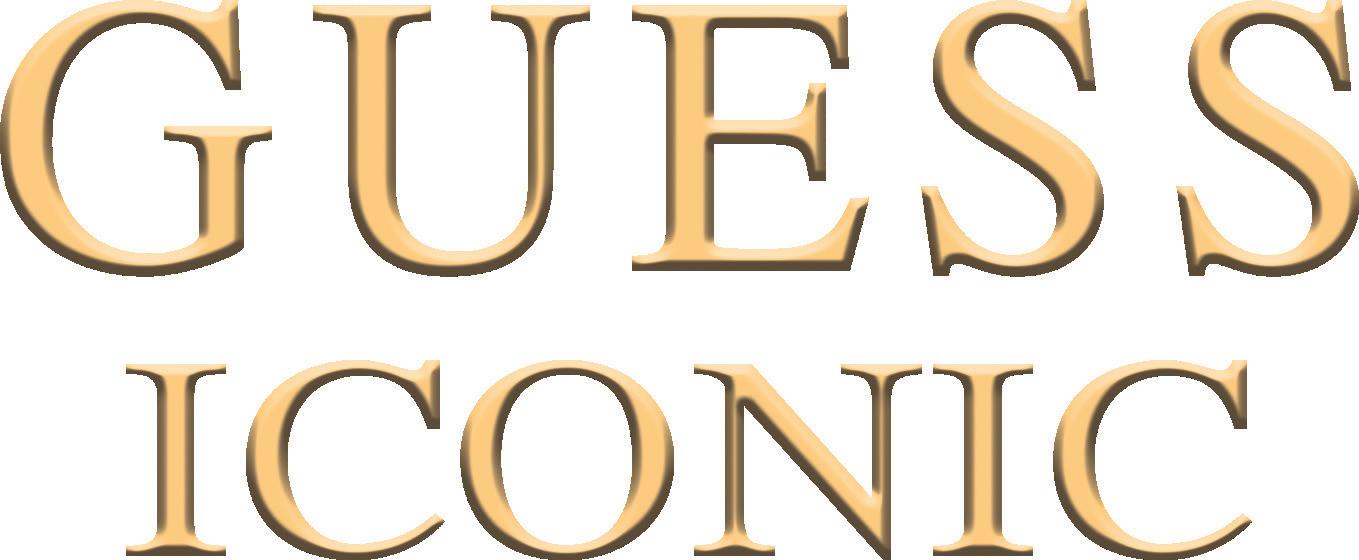

Words Megan Hustwaite



he’s considered Australia’s greatest basketballer and she’s on the trip of a lifetime.
But this is no holiday affair.
Lauren Jackson is travelling thousands of kilometres, via plane and occasionally motorhome, through Australian towns and cities to lead skills clinics and inspire a new generation of
basketballers through her role as Basketball Australia’s head of women and girls.
Lauren is the brains trust of She Hoops, a platform that empowers and connects females in the game from grassroots to globally. It is not just for players but also coaches, referees and administrators.
What started as an online hub two years ago, with free mentoring sessions, resources and events, has grown into a national roadshow.
“The sport has given me so much over my career and I really want young Australians, particularly from regional areas, to see that anything is possible if you have a dream and a goal and you want to go for it,” says the five-time Olympian, who dominated the game all over the world as a professional athlete for more than 25 years
“WE’RE ACTUALLY IMPACTING PEOPLE AND MAKING A CHANGE. TO BE ABLE TO GIVE YOUNG GIRLS CONFIDENCE … THAT’S WHAT IT’S ABOUT.”
La en Jackson
@LAUREN

and is the first Aussie to medal at five Olympic games.
“Being able to connect with all the kids has been a really special journey for me. It doesn’t come naturally to me — being up in front of people and talking to them — but it’s become something I love to do and am proud of.”
Lauren says the social media feedback and emails from grateful parents have been “unreal”.
“We’re actually impacting people and making a change. To be able to give young girls confidence and the opportunity to come and participate in a space where they feel safe, they know they’re going to have fun and learn, that’s what it’s about.”


She Hoops has an Indigenous Leadership Program, which is empowering teenagers across the country and helping them hone new skills, with physical, social and emotional benefits, while the federal government has partnered with She Hoops on a leadership and confidence scholarship.
More than 60 young women aged 15 to 18 have been mentored by EQ Minds founder and wellbeing and mindfulness expert Chelsea Pottenger, and gained coaching and referee accreditations.
Lauren says it’s crucial to keep females engaged in the sport.
“We all know our teenage years aren’t the easiest years of our lives. We’re still learning
The 43-year-old has been working on She Hoops all while making one of international sport’s most remarkable comebacks.
The first phase of Lauren’s career saw her debut for Australia as a 16-year-old in 1997. A No.1 draft pick, she became a legend of the WNBA with Seattle Storm, and dominated the scene in Europe. She was also the Australian flag bearer at the London Olympics.
As captain, she led the Opals to Australian basketball’s only senior gold medal at the 2006 World Cup.
Relentless injuries forced her into retirement in 2016. Following the birth of sons Harry and Lenny, she returned to the court for her home club Albury Wodonga in the NBL1 competition in 2022, playing in the stadium named after her.
about ourselves and learning about life; it’s hard,” she says. “I remember being a gangly teenager from Albury and, like a lot of people, I really struggled in my high school years. So being able to get out there and meet kids and talk about how great life can be when you follow your dream and follow your passion is really important.
“For young girls who love basketball, but might not think it’s a pathway forward for them, we’re offering them the chance to come in and be mentored by elite female athletes, taught by EQ Minds and to train and learn new skills. We’re also upskilling them in officiating and coaching so they can go back to their communities, clubs and associations and become leaders there and move through the pathway.”
Later that year she represented the Opals once again, this time at the FIBA World Cup in Sydney, where she scored 30 points on the final day of competition to lift her country to a bronze medal.
Lauren has competed in the past two WNBL seasons for the Southside Flyers, winning the 2023-24 championship, her seventh domestic title. “Career 2.0” has inspired a new legion of fans, who line up to meet their hero after every game, many proudly wearing her No.25 jersey.
“It’s really surreal, especially when it’s young kids who are the age of my boys,” she reflects. “It’s been such a special, crazy ride. I feel really honoured and privileged and it definitely isn’t lost on me that I’ve had a second shot at doing the thing I love the most while helping create something that’s making a difference.”




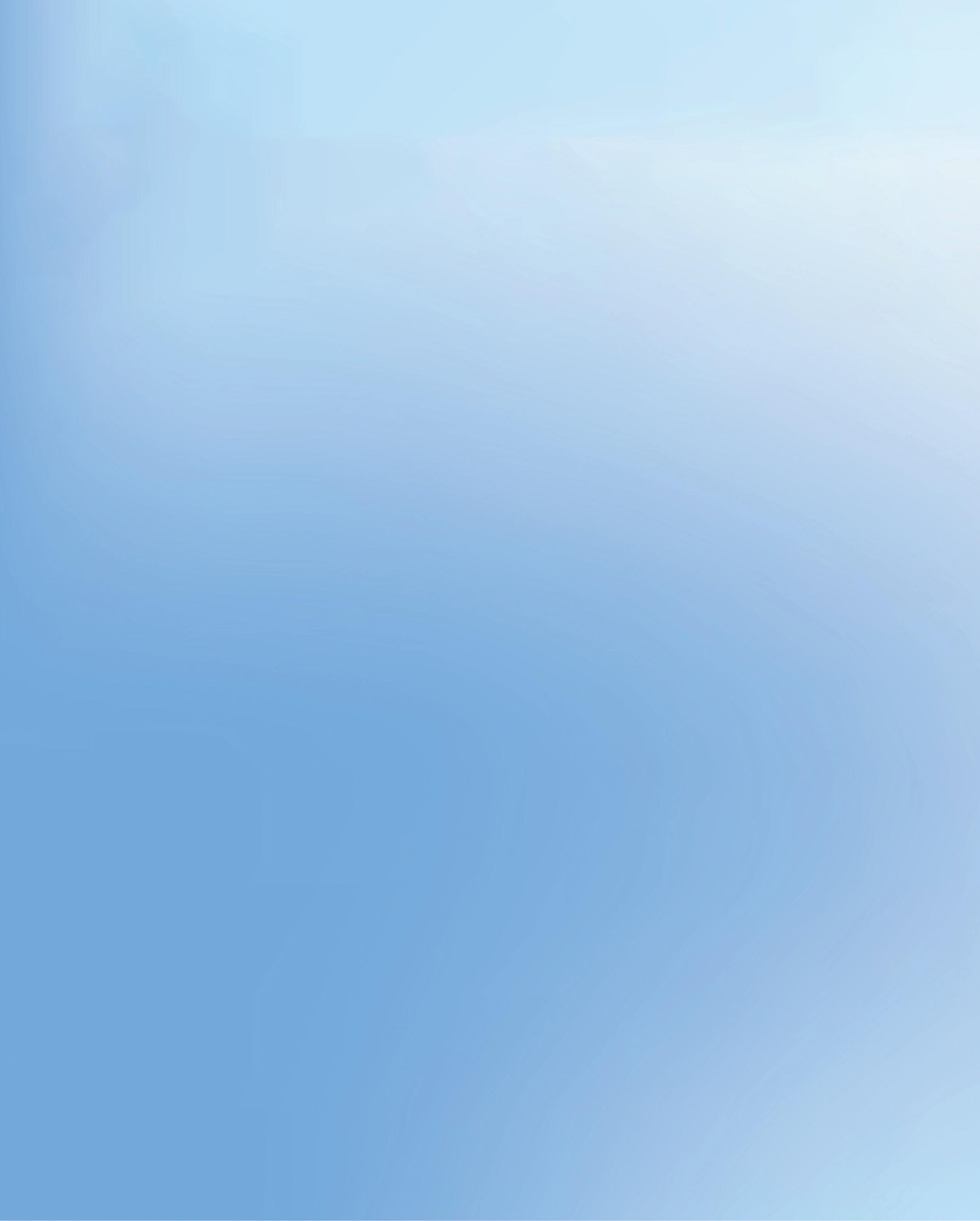

Nik Mirkovic and Alex Tomic have already taken their oral care company to global heights, but they want to sink their teeth into more
Words Liz McGrath
Hismile co-founder Nik Mirkovic — fresh from an early morning workout in the gym at the company’s global HQ in Burleigh Heads — is ready for another actionpacked day.
“We get going early and work out with the team at our facility here on the Gold Coast. It helps take the little stresses out of everyone’s lives and makes coming to work more fun,” he says with a smile.
“As well as the gym, there’s a cafe and a wellness centre with an ice bath and massage centre. Our team is about 150 people now, when you count our warehouse staff, so it’s a way we can give back.”
For Nik and childhood friend Alex Tomic — who co-founded Hismile 10 years ago, aged just 19 and 20 years old, with $20,000 — keeping fit is one way to sustain the energy needed to take on the world. Well, the global oral care industry, at least.
And it’s paying off. The brand has soared in value across a decade marked by hard work, continuous learning and innovation, and is expected to surpass a billion dollars in annual revenue by next year.
So, what’s next for the friends, who once dreamt of playing professional soccer before launching their company with an $80 teeth-whitening kit that became a viral success?
“When we started, influencers weren’t a big thing but being young and money strapped we couldn’t afford expensive advertising or big billboards,” Nik, 29, explains.
“We decided that was the best way to get organic growth and continuous feedback, and it worked.”
Building on that success, the brand is now focusing on new and exciting collaborations on both a local and global scale.
“We’ve had fantastic partnerships with brands like Wonka and Chupa Chups, and there’s more on the way,” Nik says. “We expected our flavoured toothpastes to be big but we didn’t expect them to hit the heights they have — they’ve exploded the niche.”
With their limited-edition Wonka Chocolate toothpaste and Chupa Chups paste in three flavours joining out-of-the box offerings like Pink Lemonade, Red Velvet and Mango Sorbet, it’s not surprising that tweens and teens are the brand’s early adopters.


“But what we’re doing isn’t jarring or isolating and so it ages up really quickly,” Nik says. “The flavours get attention and pique people’s interest.”
Taking a twice-a-day habit from mundane mint to an extraordinary experience has been made possible through the company’s investment in a state-of-the-art research and development facility at its Queensland headquarters.
“That’s the beauty of what we do,” Nik says. “For us, as our teeth whitening brand transitioned into an oral brand as a whole, it showed us how stagnant the segment had become.
“We wanted to make it exciting and not just do what everyone else is doing. We’re not just taking sales from others, we’re growing the basket size and bringing a different consumer to the market.
“So with toothbrushes, we offer the best product we can at a reasonable price and give customers the chance to
customise, so they can have a pink body, blue head, green bristles, whatever they like.”
Nik says one of the brand’s biggest sellers remains the V34 Colour Corrector Serum, an instant teeth whitener that’s peroxide-free and designed to work exactly like a concealer, but for teeth.
With their products now stocked in some of the biggest retailers in the world, including Chemist Warehouse, it seems the sky is the limit for Nik and Alex, who are both new fathers.
“We don’t often get to reflect on what’s been achieved because life’s busy with the business and our wives and kids and it all sort of runs together, but we all love it,” Nik says.
“I feel like, in many ways, we’ve barely scratched the surface with oral care. We want to continue to do things that have never been done before. The future is full of possibilities and we’re excited to see where it takes us.”
















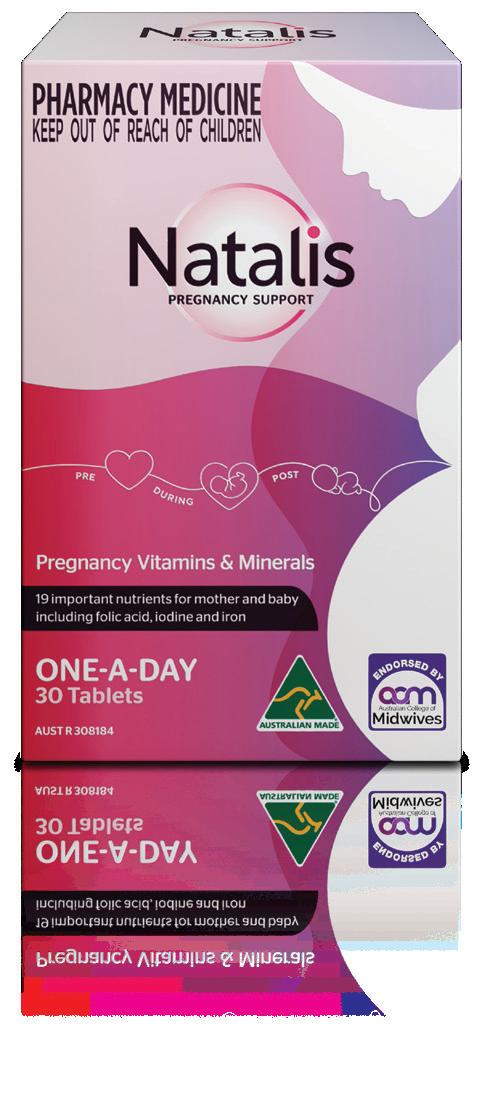

nouveau parfum pour homme



We ask the experts why menopausal brain fog occurs and how best to manage it
Words Claire Burke
Lost your train of thought during a work presentation and misplaced your keys again? You’re not “losing it”, but you could be one of many women experiencing menopausal brain fog.
Menopause is in the spotlight more these days, but many women still don’t understand much about what to expect beyond night sweats and hot flushes.
What are the signs?
cognitive symptoms such as difficulty concentrating, forgetfulness, mental fogginess and decreased mental sharpness are a common part of the

menopause experience, too, HER Centre Australia neuropsychologist
Dr Caroline Gurvich says.
“About two thirds of women will experience some degree of what we call brain fog,” says Dr Gurvich, who is head of the cognition and hormones group.
“Key symptoms are that ‘tip of the tongue’ phenomena where you can’t retrieve words; going into a room and forgetting why; attention lapses; difficulty multitasking; difficulty holding information in your mind unless you write it down straight away; or time blindness — where you lose track of how long things will take.”

Perimenopause and menopause are significant neuroendocrine events, explains clinical psychologist Kirstin Bouse, founder of All About Her — The Centre for Menopause.
“It’s like its own developmental stage, just like toddlerhood, adolescence and young adulthood,” Kirstin says.
“We know (life stages such as) puberty, pregnancy, postpartum


and perimenopause are a particularly critical time in a woman’s life span where there’s a heck of a lot going on in the brain.”
Dr Gurvich explains receptors in our brain can be particularly sensitive to changes to estrogen and progesterone levels,
which decrease during menopause.
“These receptors are in brain regions that are really important for our thinking skills as well as our mood,” she says. “We have lots of estrogen receptors in the front part of our brain, which is really important for decision making, focusing our attention and problem solving.”
Dr Gurvich says we’re only now beginning to
recognise the impact menopause can have on women’s lives, as up until about a decade ago, it was not well studied.
“Our understanding is really lagging because we didn’t dedicate time to researching menopause,” she says. “Obviously women still experienced menopause, but they just dealt with symptoms as best they could and they didn’t feel comfortable speaking about it.”
“OUR UNDERSTANDING IS REALLY LAGGING BECAUSE WE DIDN’T DEDICATE TIME TO RESEARCHING MENOPAUSE.”
Dr Caroline G vich
HER CENTRE AUSTRALIA NEUROPSYCHOLOGIST

debilitating is brain fog?
Kirstin says the cognitive symptoms can have a significant impact on women’s lives and mental wellbeing — especially if they don’t understand why it’s happening.
“It’s really challenging, as for many women, part of their identity is that they’re clever, they’re sharp, they’ve relied on their brain, and now all of a sudden it’s not reliable,” she says.
Dr Gurvich says issues with concentration, attention and memory often become particularly problematic at work, leading to a spiral effect.
“Some women start to feel anxious and experience issues with selfesteem. It can lead to procrastination — they don’t want to start things because they’re worried they might be difficult, or they worry about presenting or talking in meetings because they might not be able to find the right words.
“Many women I have met have left work or moved to working in a lesser capacity because they feel they’re not up to it.”
How menopause may not be the only culprit
Compounding the problem, menopausal cognitive changes are often happening at a time of life when women are already stretched, Dr Gurvich says.
“Take menopause out of the picture and just consider someone who is really busy, often in the prime of their working life, throw in teenage children, elderly parents, managing households — all of those factors are enough to tip someone’s mental load to a point where some day-today cognitive processes fail.”
Since menopausal brain fog is not a widely talked about symptom, women may not always connect that changing hormones may also explain what is happening.
“Brain fog can happen in the absence of hot flushes, night sweats or while people are still having a fairly regular menstrual cycle, so they don’t always link the experience of brain fog back to menopause,” Dr Gurvich says.
Some women worry their cognitive symptoms are a sign of dementia or ADHD.
“People get anxious they’ve got Alzheimer’s or ADHD because they are forgetful or have difficulty organising themselves,” Dr Gurvich says.
“But it’s important for women to know that when we do clinical neuropsychology in a quiet, structured setting, women’s core cognitive skills are generally not impaired (which is a different presentation to an assessment with someone who does have the early stages of dementia).”
This doesn’t invalidate a woman’s day-to-day experience of brain fog, she says.
“Rather, brain fog is likely reflecting more subtle changes in cognition that are exacerbated when there are lots of competing demands for someone’s attention.”
“(BRAIN FOG) IS REALLY CHALLENGING, AS FOR MANY WOMEN, PART OF THEIR IDENTITY IS THAT THEY’RE CLEVER.”
Kirsten Bouse
CLINICAL PSYCHOLOGIST
Coping strategies that can make a difference
Discuss your symptoms with your GP for advice on an appropriate management strategy.
“Options might include hormone therapy, as well as trying to ensure you are looking after your brain health with exercise, sleep, good diet and as much stress
reduction as possible,” Dr Gurvich says.
Kirstin agrees. “There’s not one magic bullet,” she says. “But if women can do their best to address these lifestyle strategies and be patient and kind with themselves, then that can make a difference in their lives.”

Stella Serafino’s menopausal brain fog became so severe, she had to leave her job.
“I was a data analyst doing health statistics and having to problem solve and memorise — things that take cognitive ability to concentrate.
I noticed I would be staring at the computer not knowing what to do next. I would go blank a lot of the time or forget a name and get distracted. I might put something on the stove then step away for a minute and forget about it.
One of the biggest issues I felt was the overwhelm of daily living and feeling like I couldn’t cope, so I would avoid projects and tasks. I began to lose confidence, get stressed. I was becoming disconnected and doubting myself.
Now I am managing it with my doctor and actively doing things to support my cognitive health, such as exercise, making sure I get lots of sleep and seeking out social connection.
I have even taken on part-time work and returned to an old hobby of singing. I’ve created a Facebook music page, La Stella Music.
I am trying to look at the positives and see this as starting a new chapter in my life.
It’s also helped me to accept imperfection.”






With one in five Australians allergic to something it pays to understand the various causes and symptoms
Words Karen Fittall
It’s not known why Aussies are so allergy-prone, but it can mean making lifestyle adjustments to manage it.
Grace Canning, the director of national support organisation Allergy Life Australia, reveals some of the most common allergy triggers and how to handle them.
“There are several common types of pollen that cause allergies,” Grace says.
These are pollen from grasses, trees and weeds, with trees usually pollinating in late winter and early spring.
The most common symptom is allergic rhinitis, also called hay fever.
“This leads to symptoms such as sneezing, a runny, blocked or itchy nose, and watery or itchy eyes,” Grace says.
Pollen allergy can also aggravate asthma or cause symptoms that affect the lips, mouth, tongue or throat.
“Check the pollen count in spring before heading outdoors if you have a pollen allergy. And talk to a health care professional about preventative or relief medications,” Grace advises.
Ten foods account for about 90 per cent of food allergic reactions in Australia — peanuts, tree nuts, eggs, milk, fish, shellfish, wheat, soy, sesame seeds and lupin.
Food allergies most commonly occur in children aged under five but can develop at any age. And while some are “forever allergies”, others can be outgrown.
Some symptoms of a mildto-moderate allergic reaction include hives, abdominal pain and swelling of the lips, face and eyes.
Some signs of severe allergic reactions to food, called anaphylaxis, include swelling of the tongue or throat, difficulty breathing and dizziness.
“Anaphylaxis is a severe life-threatening reaction,” Grace says. “It requires urgent medical attention and is treated with adrenalin (epinephrine).”
Those with food allergies should carefully read food labels, advise venue staff of their allergies when dining out, be alert to potential
cross-contamination when making food, and carry their emergency medication.
“People with a pet allergy can be allergic to an animal’s dander, saliva or its urine or faeces,” Grace says.
Most people with pet allergies are commonly allergic to cats or dogs and they can have other allergies, such as a pollen allergy, too.
Some symptoms of a pet allergy include sneezing, itching, hives, hay fever and wheezing or asthma.
Avoiding exposure to the animal and using preventative and relief medications when required are recommended.
These thrive in bedding as well as carpets, clothing and upholstery. For people allergic to dust mites, exposure can trigger symptoms such as asthma, hay fever or eczema.
Washing bedding in water hotter than 60C, using dustmite-resistant protective covers and reducing indoor humidity can help to reduce dust mites.
“Regularly cleaning hard surfaces with a damp cloth and using a vacuum with a HEPA filter can also help,” Grace says.
Drug allergies can cause a range of symptoms including shortness of breath, skin rash, itchy eyes, vomiting and even anaphylaxis.
“Drug allergies aren’t the same as side effects to a drug,” Grace explains. Drugs that can cause allergies include nonsteroidal anti-inflammatories, certain antibiotics and some anaesthetics, she says.
“Like any allergy, if you have a drug allergy it’s important to ‘carry’ your allergy medication, and to ‘show and tell’ people about your allergy by showing your allergy card, medical alert bracelet, action plan or emergency necklace.”
If you have, or suspect you have, an allergy, discuss it with a qualified health care provider. For more, including support if you or a loved one is living with an allergy, visit allergylife.com.au
Educator and author
Dr Jane Foster guides us on how to better equip our children to handle daily challenges and build resilience
As a society, we’ve made strides in addressing overt bullying, but what about the quieter, persistent forms that occur daily? The subtle gestures of rejection often go unnoticed but can profoundly affect a child’s wellbeing.
Many su er in silence, afraid to speak up for fear of being dismissed. But these seemingly minor hurts and other daily challenges accumulate, weighing heavily on a child’s emotional state. While bullies may not face immediate repercussions, the victims do, especially if they’re not equipped to cope.
We can’t prevent every slight, so teaching our children how to respond to these more minor incidents is crucial.
It’s important to emphasise that teaching your child to cope doesn’t excuse the bully’s behaviour. Hurting oneself or others is a sign of being out of
control, for which there should always be consequences.
So, what can parents do?
Enter emotional resilience (ER), helping children develop resilience and improve emotional intelligence. Using a simple driving metaphor, ER makes the intricate world of emotions more accessible to children, parents and grandparents. It creates a common language that enables everyone to start developing these skills immediately.
Consistent use creates new neural pathways, empowering individuals to better manage their responses to everyday situations and navigate life’s challenges.
By adopting ER, it becomes possible to transform your family. First, remove judgment and stigma by seeing emotions as smooth or rough roads. This empowers your children to express themselves and manage their reactions, as no emotion
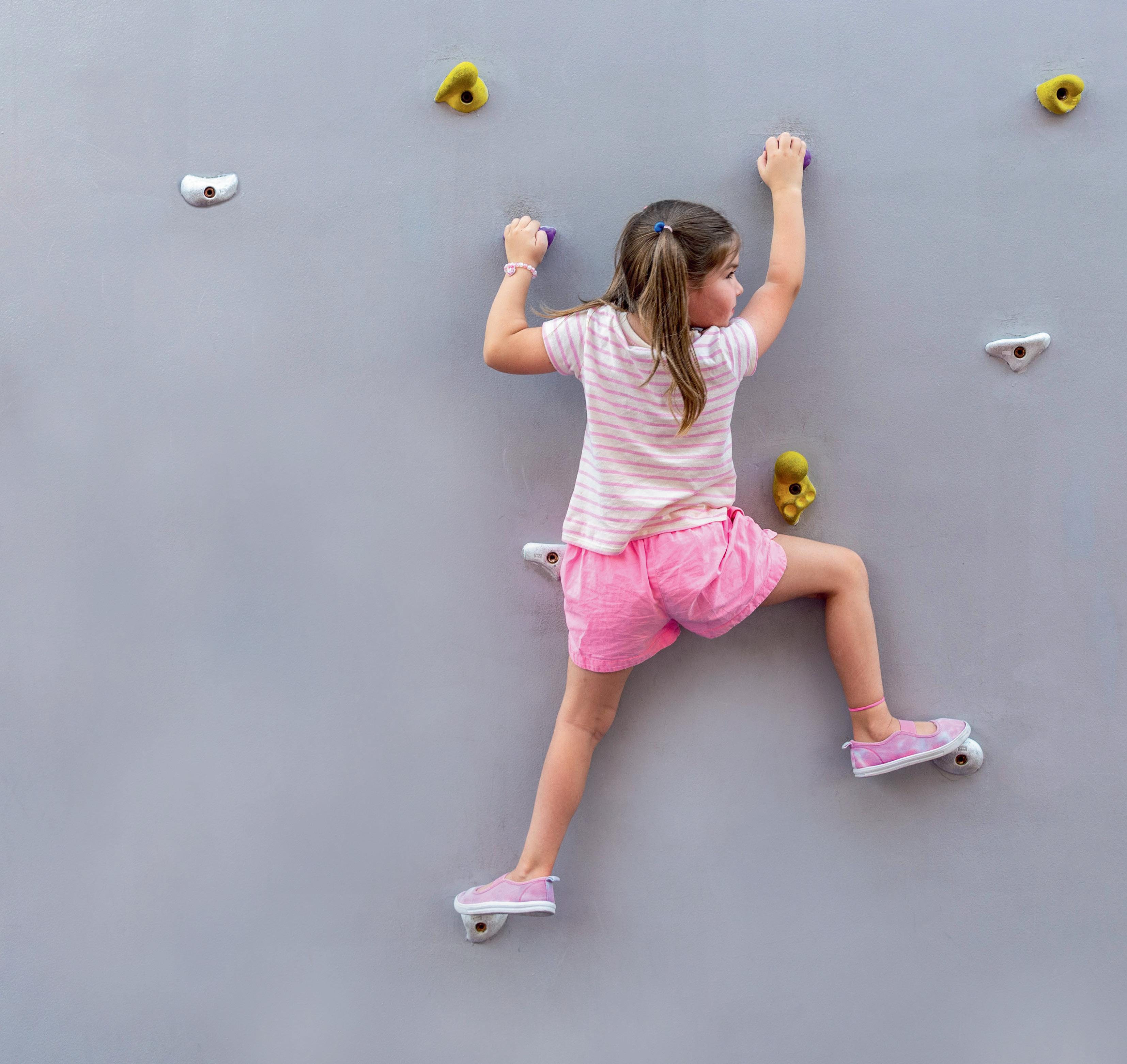
is inherently bad; it’s about how we respond to it. Instead of blaming, encourage your child to say, ‘I am choosing to feel’ rather than ‘They are making me feel’, enabling them to take control of their steering wheel.
In a world that can often feel chaotic and unpredictable, ER is a useful tool to help your family build resilience, enhance emotional intelligence, overcome everyday challenges, and regain control.


1
Instead of labelling emotions as good or bad, view them as rough or smooth emotional roads. Children often struggle to answer how they feel but find it easier to share if they are on a rough or smooth road. Just as roads serve different purposes, so do emotions. Rough roads, like frustration or sadness, build resilience, while smooth roads, like joy or contentment, promote wellbeing, so you should no longer feel the need to lift your children off that rough road. By removing judgment from emotions, we empower children to recognise and accept their feelings without feeling pressured to always be on a smooth road.
2
In a world that often feels out of control, ER introduces the concept of the emotional steering wheel. While we can’t control external circumstances, we can choose our response. Just as you’re the sole driver of a car, you’re in control of your emotional direction. Encourage children to recognise that they can steer themselves on to the
emotional road that best serves them, regardless of others’ actions. If someone is on a rough road, they don’t need to join them.
3Instead of blaming others for their feelings, teach children to take responsibility for their emotions. By shifting from ‘You made me angry’ to ‘I am choosing to feel angry’, they reclaim ownership of their emotional steering wheel. This subtle change fosters empowerment rather than victimisation, enabling children to navigate challenges with confidence and control.
4
Recognise that being out of control isn’t always loud and aggressive; it can also be quiet and introverted. Provide children with tools, like hand signals, to indicate when they need space to regain composure. These signals tell others they’re struggling and need support, similar to hazard lights. By acknowledging and addressing their emotional state, children learn to manage challenges effectively.
Bending your thumb and placing it in the middle of your palm signifies the brain’s reactive amygdala (emotional processing), which triggers responses in stressful situations such as fight, flight or freeze. When operating solely from the amygdala, rational thinking becomes difficult. It is best to wait until your child has regained control before engaging in conversation.
Bending your fingers over your thumb signals regained control, symbolising the brain’s rational prefrontal cortex. You can think, gain perspective and find solutions in this state. Now is the time to talk with your child.
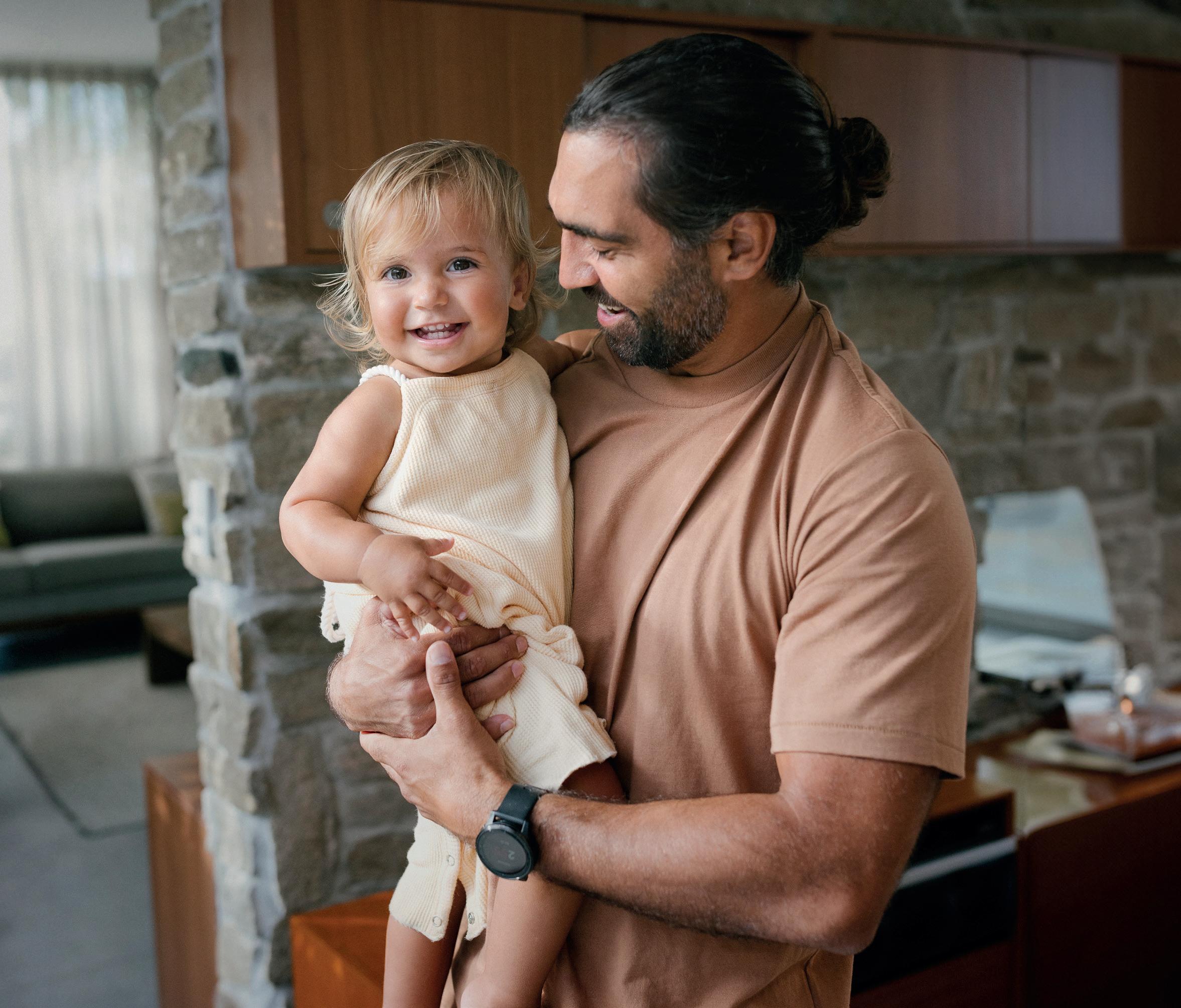

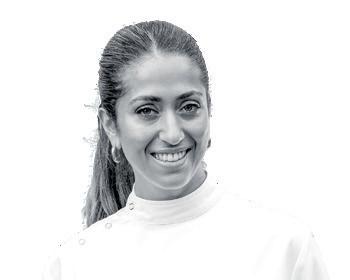
JALA MOUSHI Community pharmacist
Acne is one of the most common skin issues around the world. It is more prevalent in young people and usually caused by a mix of hormones, excess oil in the skin and bacteria.
While there are plenty of treatments and skincare products available, the first step in managing acne is identifying the factors that contribute to it and seeing if they can be changed or removed.
We know acne can be aggravated by medications, diet and stress levels. Among these, the connection between diet and acne has been widely debated.
Recently, research has shown that what we eat might influence what shows up on our skin, especially when it comes to the glycaemic index (GI) and dairy products.
So, let’s talk diet. The first thing to understand is that while diet can influence acne, it’s not a cure-all solution. As the American Academy

of Dermatology Association puts it, keeping your skin clear requires more than a diet change.
Research suggests foods with a high glycaemic index and some dairy products may affect acne by increasing certain hormones and inflammation.
A typical Western diet, which is rich in dairy and high-GI foods, has been linked to acne.
Comparing diets across cultures, researchers have found less acne among non-Westerners.
In one study, indigenous groups in Papua New Guinea and Paraguay, who ate a low-GI diet rich in fish and foraged foods, with little to no dairy or processed foods, were found to almost never get acne.
It’s thought high-GI diets can lead to worse acne because they spike blood sugar levels and increase hormones that boost oil production.
High-GI foods are common staples in the
Aussie diet. Think white bread, corn flakes, potato chips, fries, doughnuts and sugary drinks.
Studies show these foods can make acne worse as insulin and other factors can trigger more oil production and inflammation in the skin.
On the flip side, a low-GI diet, filled with vegies, some fruits, beans and oats, may help reduce acne severity.
In an Australian study, young men who switched to a low-GI diet had significantly less acne after 12 weeks compared to those who stuck with their usual high-GI foods.
The key is that low-GI diets help avoid blood sugar spikes.
What about dairy? The link between dairy and acne is not as clear. Studies suggest dairy intake may make acne worse, particularly in Western diets.
‘IT’S THOUGHT HIGH-GI DIETS CAN LEAD TO WORSE ACNE BECAUSE THEY SPIKE BLOOD SUGAR LEVELS AND INCREASE HORMONES THAT BOOST OIL PRODUCTION.’
The theory is that the hormones in milk might contribute to inflammation, but more research is needed to confirm this.
One study showed that women who drank two or more glasses of skim milk a day were 44 per cent more likely to have acne.
So, if you think your diet is affecting your acne, pay attention to how your skin reacts to different foods.
If you notice breakouts after eating certain things, try cutting them out for a while to see if your skin improves.
For example, a low-GI diet might help reduce pimples, and cutting back on dairy may help prevent breakouts.
Just remember, though, that eating a balanced diet is important for your health. Seek expert advice where needed.
“Never, ever take your health for granted”

In 2014, the day after my 51st birthday, I received a phone call that changed my life. The conversation began with ‘I’m sorry, but unfortunately you have breast cancer’, leaving me terrified, inwardly screaming: ‘What, me? No, this must be a mistake!’
A routine mammogram several weeks before had picked up something suspicious in my right breast. Further tests produced a diagnosis of early breast cancer called DCIS, or ductal carcinoma in situ.
Following an appointment with a surgeon and an MRI, a treatment plan was agreed including a lumpectomy, radiation and hormone therapy. Everything went smoothly and according to plan; I had clear lymph nodes and clean margins from the surgery, which meant I could keep my breast and my hair.
Life after breast cancer isn’t easy. But, as Joanna Hall explains, it’s possible to not just survive, but thrive
With that first diagnosis, I felt confused and numb with shock. As a health writer I’d written countless stories about women and their experiences with this insidious disease, but I never believed for one second I’d be walking in their shoes one day. In reality, however, the first part of my story is not particularly unusual.
Breast cancer is the most commonly diagnosed cancer among women in Australia. Fifty-seven of us are diagnosed every day and around 80 per cent of cases are in women aged 50 or older — just like me.
For an unlucky few, however, the cancer returns, the bombshell of a second diagnosis hurtling me back to Cancerland just over four years later in early 2019.
The same breast was involved, but this time it was a more aggressive type with several lesions, which meant I had to face the ordeal of a bilateral
mastectomy and chemotherapy. It was exhausting telling everybody about my diagnosis, especially the first time, but there are people that you must and others you should because they might be affected. The second time around, however, it was going to be impossible to keep things under wraps thanks to the unavoidable baldness that comes with chemotherapy.
I was fortunate to have a loving partner and a small ‘tribe’ of family and friends to support me, along with a terrific team of medical professionals to steer me through treatment both times.
In the near decade that has passed since that first diagnosis, I’ve learnt many things. Every breast cancer patient will have a different experience, but living with the disease presents each one with emotional and physical challenges. It’s also essential to tune into the psychological side of the disease and manage it.
I ignored all kinds of feelings — from a loss of control, disempowerment and survivor’s guilt, to fear of recurrence and grief about what I’d lost including a sense of invincibility — and it didn’t serve me well. With diagnosis two I chose to approach everything differently. As Eleanor Roosevelt once said: ‘Women are like teabags. We don’t know our true strength until we are in hot water.’ I knew my life would be uprooted and I would feel unwell frequently, but I also knew I was more resilient than before.
I shrugged off the narrative that people facing breast cancer must show strength, fight and show ‘pink power’, as that can trigger shame in anyone who struggles. A psychologist I saw before starting chemotherapy agreed, adding it would be a challenge just getting through day-to-day experiences, and I should be authentic to myself and learn how to say ‘no’.

I rewrote my inner dialogue from ‘this is hard’ to ‘I can do this’, and I reframed my attitude from feeling stuck in a ‘slash, poison, burn’ nightmare to going through treatment that’s incredibly tough but ultimately life-saving. And during chemotherapy, even though I watched the person I recognised slowly disappear from the mirror, I believed she would not only be back but better than ever.
That’s not to say I didn’t have bad days, but I walked the slow road to recovery with more gratitude and worked to find glimmers of joy and awe every day.
Life after cancer can be difficult, and it’s something that many people don’t discuss. Going through treatment, you’re in survival mode; it’s only afterwards that you ask: ‘What the hell just happened?’ But cancer is like an earthquake with aftershocks. Ending treatment
LEFT Joanna Hall with her hair growing back after chemotherapy.
can be an anticlimax. You will have ‘cancerversaries’ that you will embrace or dread. You will be desperate for things to return to the way they were but know that they can’t. You may have an epiphany that ends a relationship or inspires a career change. And there’s coping with scars and changes to your body, which for me included several breast reconstruction surgeries.
But there are positive takeaways if you look for them, and you can thrive rather than survive in the aftermath.
I have learnt the art of surrendering, which isn’t about giving up but more about recognising that there are things in your life you can control and things you can’t, and letting go of the things you can’t is freeing.
I have also learnt that, at times, you need to stop, catch your breath and do nothing, just be. And never, ever take your health for granted.
Just as breast cancer is a complex disease of stages, grades, types and treatment protocols, reconstruction applies to your life as well as your body, and it’s highly personal in terms of what you do and how you do it.
Whether I like it or not, cancer will always be a part of my life, but moving from one side of a life-changing experience to the other takes time and effort, so be patient, be kind to yourself and reach out for help if you need it.”
1
In its early stages, breast cancer often has no symptoms.
2
In Australia, the chance of surviving breast cancer for at least five years is 92 per cent. This is one of the world’s best breast cancer survival rates.
3
You may have a higher risk of developing breast cancer if you have a close male relative who’s had the disease, such as a father or brother.
4
Besides lumps, warning signs to look out for include breast swelling, swelling or discomfort around the collarbone or in the armpit, skin thickening or redness, breast warmth and itching, and nipple changes or discharge.
5
Regularly consuming alcohol boosts your breast cancer risk.
Common questions I’ve been asked
Do you have a family history of breast cancer?
None that I know of, but despite a genetic link, most women who develop breast cancer have no family history of the disease.
Did you have any symptoms?
No, because at its earliest stages DCIS, like other types of breast cancer, is often symptomless. No lump, no swelling, no other breast changes.
Why did you choose implants for your reconstruction?
I wasn’t a candidate for reconstruction using tissue or fat from elsewhere; it was implants or nothing.
I discussed the pros and cons with my surgeon and made an informed decision that was right for me.
What do you think caused you to get breast cancer?
I contemplated this with my first diagnosis, but the reality is that many risk factors may contribute to someone developing it, and sometimes there are no red flags whatsoever.
Are you cured?
I believe so. They say cancer is in complete remission when, after treatment, no cancer can be detected, and with many cancers, if you survive five years in remission you are probably cured. But like anything in life, there are no guarantees.







If you have seasonal allergies or asthma, make sure you know how to best manage it

Spring can strike fear into those who su er with seasonal allergies and asthma. The important message is don’t wait until pollens happen. Be prepared!
If you know you get seasonal asthma, make sure your asthma action plan is up to date and keep it handy. Do you and your family know about asthma first aid? It’s important to recognise the signs of worsening asthma and act early.
Acute asthma management is as important as any other first-aid knowledge. You need the information ahead of an attack. Asthma Australia has a great article to share with your family (see first website, far right).
Be sure your pu er medication is in date. The useby date is printed on the pack. While pu er medication is not recommended for use after

the use-by date, it is generally considered not dangerous a bit past the use-by date. However, it simply may not work because pu ers will also lose potency a year after the package is opened, so maybe it’s time to toss that pu er you have kept in the glove box from last year!
Be sure you have all necessary scripts in advance. Actually, when was the last time you checked in with your doctor about managing your asthma and asked about new advances in treatment? Are you aware there are new inhaler combos that contain three preventive medications and may only need to be taken once a day?
For those with seasonal allergies it’s also time to plan for heavy pollen days. Check the daily pollen forecast in your area by going to a pollen forecast website. Also check the Bureau of Meteorology website for other weather alerts, especially wind forecasts. Being armed with this information allows you to plan your day.
Some days it’s best to just stay inside if possible. Rescheduling picnics and walks in the park is a good idea. A non-drowsy antihistamine is available over the counter. If you need to venture out, wearing glasses and a mask may help.
Thunderstorm asthma, while uncommon, needs to be taken seriously because it can a ect not just people with asthma but also those who have seasonal, especially grass pollen, allergies. These people may never have even had asthma before!
The media will usually warn if there is to be this unusual mix of high levels of grass pollens together with a certain type of thunderstorm where the tiny pollen seeds are whisked up and carried long distances.
However, you need to be ready. Talk to your GP about planning for these events. But, in short, keep your seasonal allergies under control and consider using preventer pu ers during this time.
If this info is news to you then it’s a good idea to check out the Asthma Australia website and chat with your doctor.
Have a clear-out
Speaking of tossing outof-date asthma meds, spring is a good time to review and clear out all those meds in your house that you don’t need and/or are out of date. Please don’t put any medications out in the rubbish bin and definitely don’t flush them down the drain or toilet.
While important for medical treatment, we really don’t want these chemicals accumulating in our waterways. Safe disposal of medication can be done through your local pharmacy.
If it’s too overwhelming, ask about a Home Medicines Review. An accredited pharmacist will visit your home to help you out. It’s free but you will need a referral from your GP.
● asthma.org.au/medicinestreatment/asthma-first-aid
● pollenforecast.com.au
● bom.gov.au
● asthma.org.au
● healthdirect.gov.au/ home-medicines-review
14 tasty flavours to try
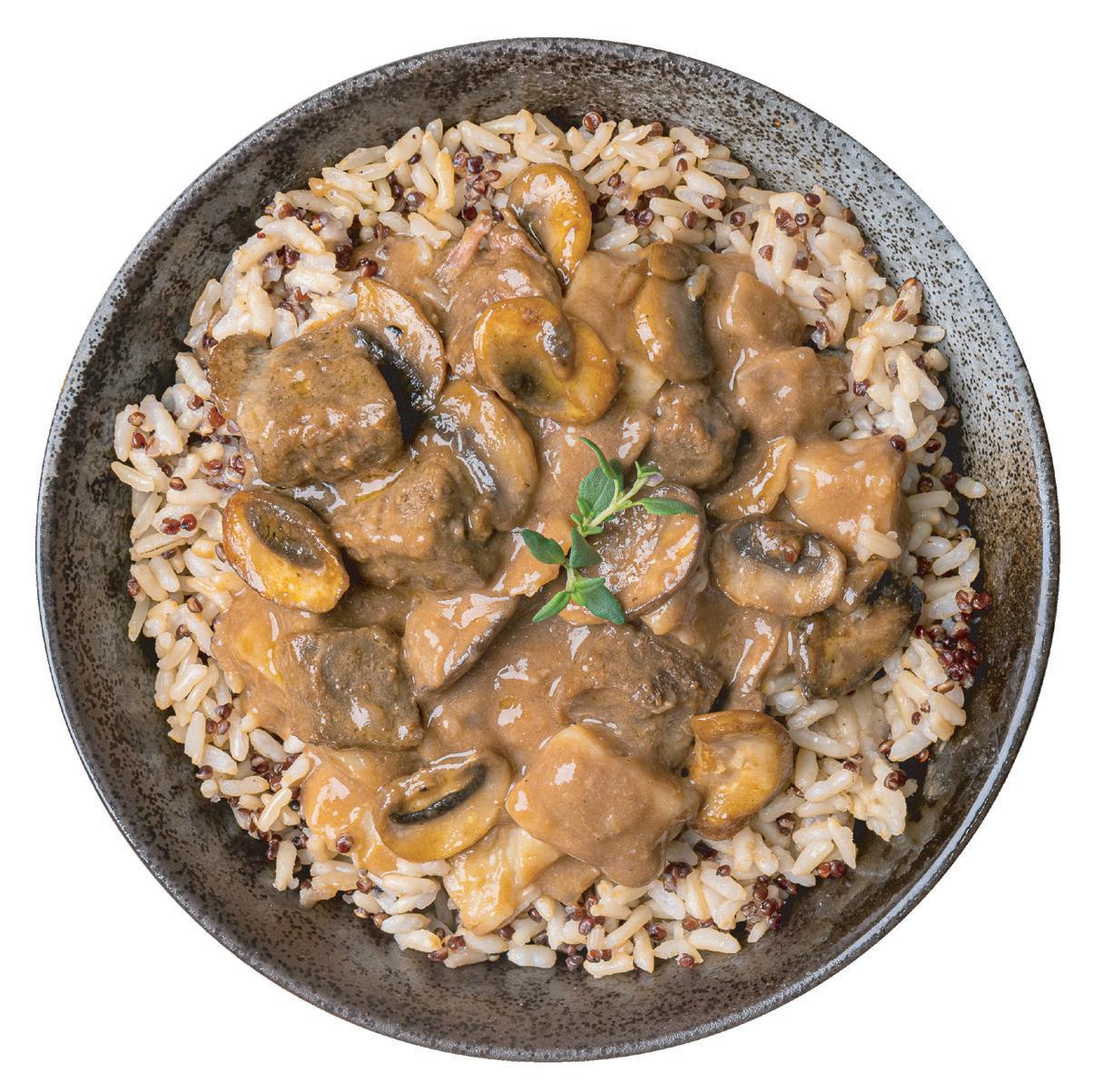
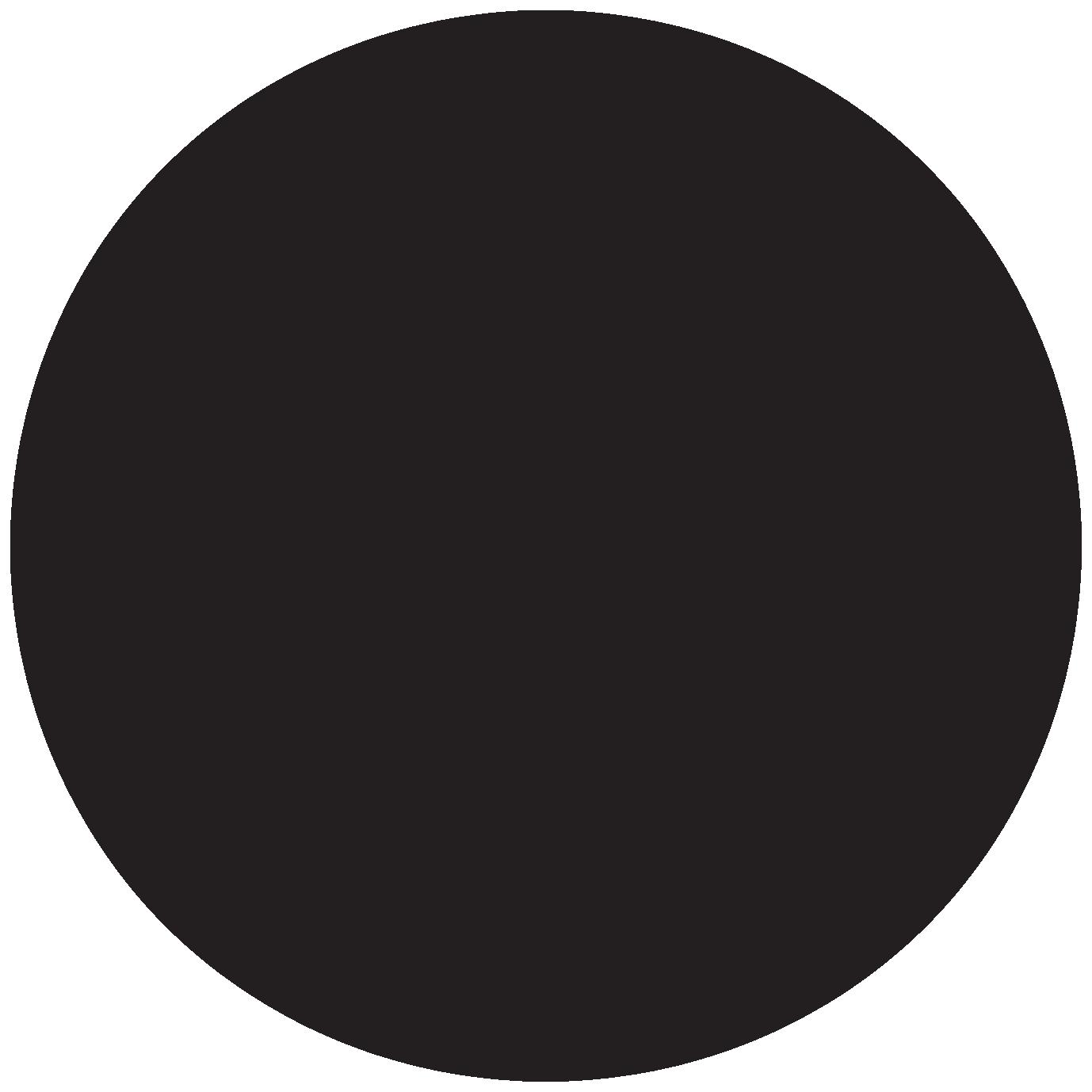


















When chef and former My Kitchen Rules contestant Scott Gooding teamed up with his wife and business partner Matilda Brown to produce a cookbook, the intention was to create a collection of recipes that would resonate with home cooks.
In the process, they created a love story.
The Good Farm Cookbook offers an inviting compilation of delicious, wholesome recipes to nourish the body and soul. But also within its pages are stories of deep love: for family, the land, country, good health — and one another.
“Til and I are so lucky with the life that we have,” reflects Scott, a holistic nutrition and performance coach. “It’s very family focused. We love our kids. We love each other. We’ve created this beautiful home and loving family that has a focus on food.”



Dishes made with passion and hope for a sustainable future are at the heart of this family
Claire Burke


Along with mouth-watering recipes, the cookbook features stunning imagery of the farm owned by Matilda’s parents — Australian film royalty Bryan Brown and Rachel Ward — and the rural life Scott and Matilda, an actor and director, are now imparting to their own children.
It details how food has come to positively shape the couple’s lives and how the environment, animal welfare and human health are at the heart of their work.
Scott and Matilda started ready meal company
The Good Farm Shop in 2021.
They say the business is largely inspired by Matilda’s mother Rachel, who had turned her rural property in New South Wales into a regenerative farm.
Scott explains regenerative farming is a methodology of farming that optimises carbon sequestration and soil health.
“It’s farming in the absence of pesticides, chemicals and herbicides, and helps to normalise the balance of carbon dioxide in the atmosphere.”
Matilda says animals are an important part of the regenerative farming cycle.
“Conventional farming uses pesticides and synthetic fertilisers to grow the grass
the cow eats,” Matilda says.
“The cow eats the grass down to the point it stops being in a photosynthesis state and can’t continue to grow.
Then you have to use more inputs to grow it back.
“With ‘regen’ farming you move the cow before they’ve chewed down the grass to the point of no return, and keep rotating them (the cows). It’s called cell grazing.”
Good for soil health and the environment, it’s also better for animal welfare, Scott says.
The couple’s commitment to better animal husbandry, a healthy ecosystem and human health reflects their approach to raising their family and their own wellbeing.
“We want to nourish our kids, ourselves and our customers,” Scott says.
The cookbook’s recipes mirror how the pair feed their family. And without being prescriptive, Matilda says she hopes it encourages others to think about the origin of their food.
“Being able to support direct-to-farmer, best-practice farming is a great contribution to the environment and animal welfare, and it’s going to feed and sustain you,” she says.
SERVES 4
Guacamole
• 3 ripe avocados, peeled, stones removed
• ½ red onion, finely chopped
• 1 jalapeno chilli, destemmed, deseeded and finely chopped
• ¼ bunch coriander, finely chopped
• juice of 2 limes, zest of 1 lime
• 1 tsp ground cumin
• ½ tsp smoked paprika
Chilli con carne
• 2 tbsp extra virgin olive oil
• 2 small brown onions, finely chopped
• 4 garlic cloves, minced
• 2 tbsp dried oregano
• 2 tbsp ground cumin
• 2 tsp sweet paprika
• 2 tsp smoked paprika
• 1-2 tsp chilli powder
• 1 tbsp tomato paste
• 500g minced beef, at room temperature
• 600g tinned diced tomatoes
• 400g tin kidney beans, drained and rinsed
• 4 slices glutenfree or sourdough bread
Combine guacamole ingredients in a mixing bowl, mashing the avocado with a fork until combined but with some rustic texture. Place a piece of plastic wrap directly on the surface of the guacamole and refrigerate until needed.
For the chilli con carne, heat the oil in a large frying pan over medium heat and add the onion and garlic. Saute for 5-6 minutes before adding the oregano and spices, then continue cooking for another 5 minutes.
Add tomato paste and stir for 1-2 minutes. Increase heat to high and add the beef. Stir for several minutes until the meat is nicely browned. Reduce the heat to medium and add the tinned tomatoes. Mix well and cook for 10 minutes.
Add the kidney beans and cook for another 15 minutes over medium-low heat. Season to taste, then remove from the heat.
Pop the bread in the toaster or grill until lightly toasted. Slather the toast with the chilli con carne and add a generous dollop of guacamole. Season with salt and pepper, then serve.
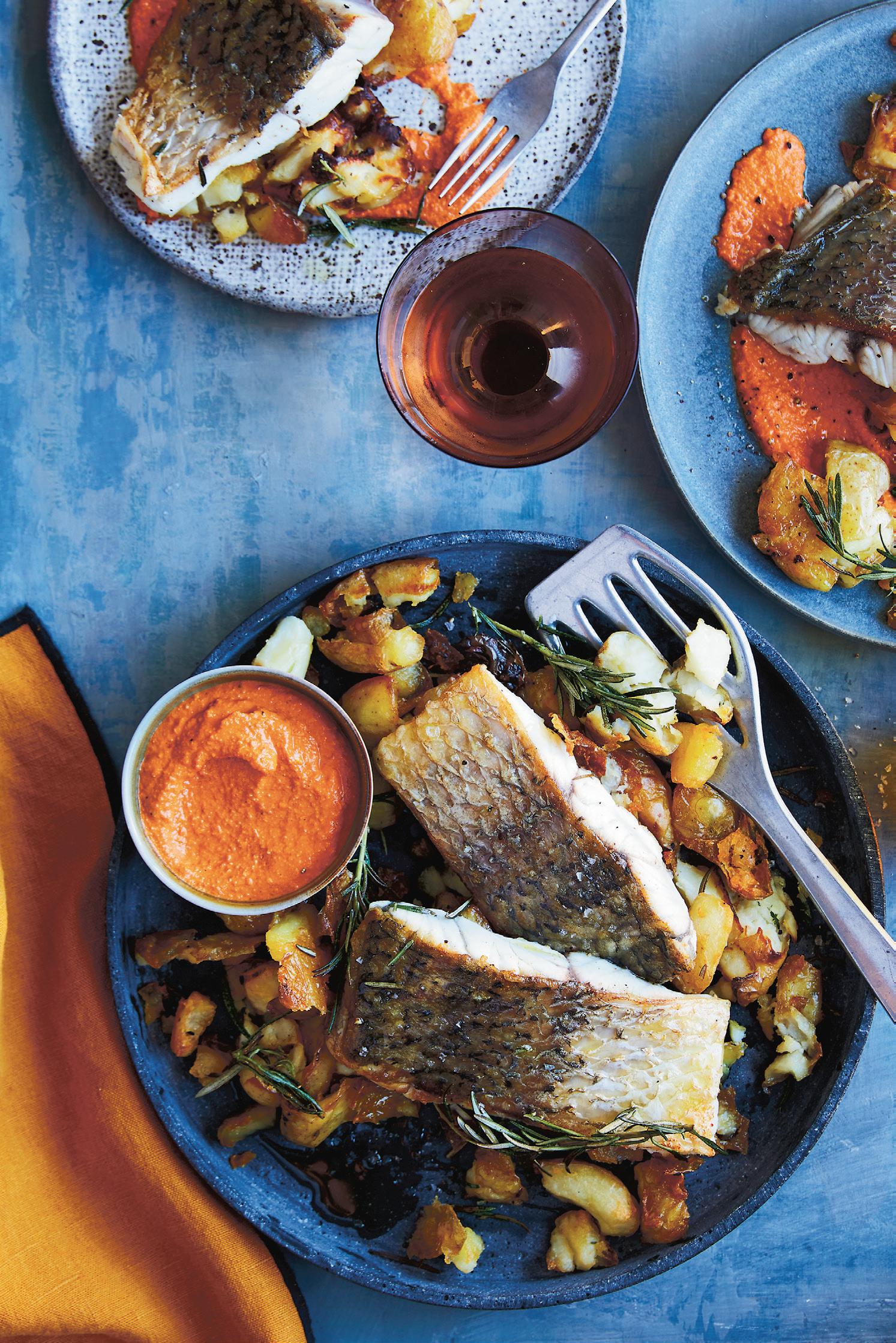


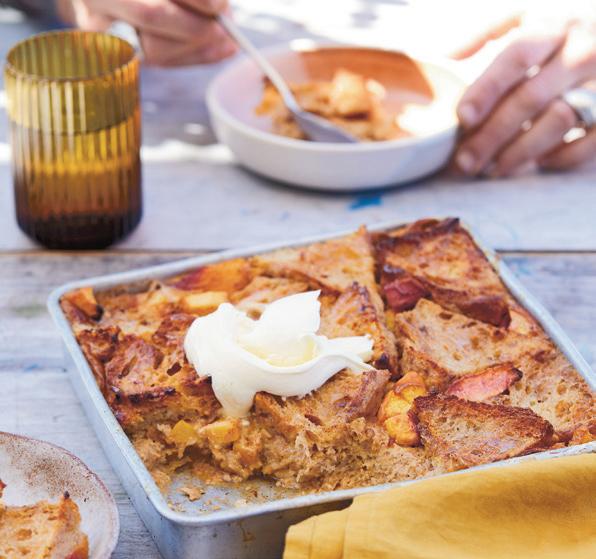
• 3-4 tbsp unsalted butter, plus extra for greasing
• 6-8 slices of day-old gluten-free or sourdough bread, crusts removed
• 2 cups (300g) diced peaches (optional)
• 3 large eggs
• 2 cups (500ml) full-cream milk
• ½ cup (125ml) thick (double) cream, plus extra to serve
• ¼ cup (45g) coconut sugar, plus extra for sprinkling
• 1 tsp vanilla extract
• 1 tsp ground cinnamon
• ¼ tsp ground nutmeg
• pinch of salt
• ¼ cup (60ml)
Baileys Irish Cream
• ¼ cup (60ml) Tia Maria
Baileys and Tia Maria can be replaced with nonalcoholic substitutes
Grease a 23cm × 23cm baking dish with a little softened butter. Butter each slice of bread on one side and cut into triangles.
Arrange half of the bread triangles, buttered side up, in a single layer in the bottom of the greased baking dish.
Sprinkle half of the peach (if using) evenly over the bread. Place the remaining buttered bread triangles on top, creating another layer, then add the rest of the peach.
In a separate bowl, whisk together the eggs, milk, cream, sugar, vanilla, cinnamon, nutmeg and salt until well combined. Add the Baileys and Tia Maria and whisk again.
Pour the custard mixture over the bread and fruit, ensuring all the bread is soaked with the custard.
Gently press down on the bread with a spoon to help it absorb the custard. Sprinkle some extra coconut sugar over the top to create a golden crust when baked.
Preheat oven to 175C. Cover dish with foil and leave to stand for 20 minutes before baking in the oven for 30-40 minutes. Remove the foil and bake for a further 20-25 minutes or until the top is golden and custard is set. Remove from the oven and allow to cool a little. Serve warm with dollops of cream.
*Richard is Scott’s father.
SERVES 4
• 4 × 200g barramundi fillets, skin on
• 1kg chat potatoes, washed
• 90ml extra virgin olive oil, plus 1 tbsp extra for frying
• 2-4 rosemary sprigs
• juice of ¼ lemon
• spicy romesco sauce, to serve
Spicy romesco sauce
• 2 large roasted red capsicums (shop-bought or homemade)
• 2 garlic cloves, peeled
• 200g macadamia nuts or hazelnuts
• 2 tbsp tomato paste
• 2 tsp sweet paprika
• 2 tbsp red wine vinegar
• 1 long red chilli, destemmed
• ¼ cup (60ml) extra virgin olive oil
Combine all of the spicy romesco sauce ingredients in a blender and blitz for 20-30 seconds or until fully combined. Store in an airtight container in the fridge for up to 1 month.
Remove the fish from the fridge 30 minutes before cooking. Place the potatoes in a saucepan of salted water and bring to the boil. Reduce the heat and simmer for 20 minutes or until softened, then drain.
Crush the potatoes using the bottom of a saucepan or frying pan and allow to cool. Preheat the oven to 220C.
Place oil and rosemary in a roasting tin. Place in the oven to heat. Once hot, remove from the oven and tip in the crushed potatoes. Season and return the tin to the oven for 35-40 minutes or until the potatoes are browned and crispy.
Pat the fish dry with paper towel, then season. Heat the extra olive oil in a frying pan over medium-high heat and place the fish in the oil, skin side down.
Hold it down with a spatula for the first few moments to prevent the fish curling. Cook for 4-5 minutes without moving
the fish. Once browned and crispy, flip the fillet to the flesh side and cook for a further 2-3 minutes (depending on the thickness) or until the fish can be flaked easily with a fork. Remove from the heat, drizzle with the lemon juice, season and allow to rest.
Heat the romesco sauce in a small saucepan. Check on the potatoes — if they’re nicely crispy, remove them from the oven and transfer to a serving bowl, season and squeeze a little lemon juice over the top. Serve with the barramundi and spicy romesco sauce.
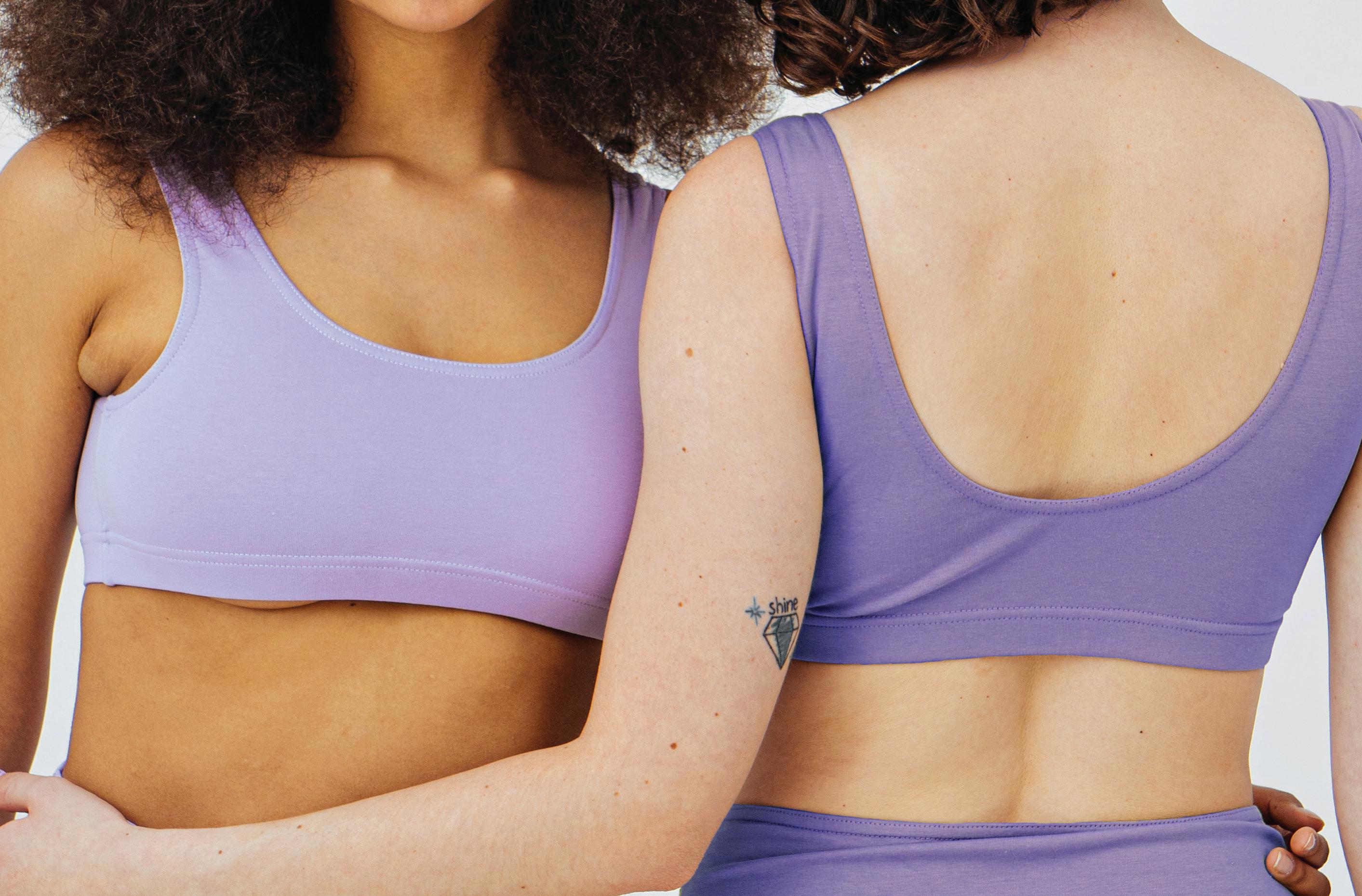




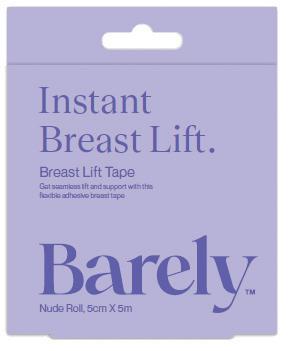


Our sense of smell not only conjures emotions and memories in an instant, it has links to everything from independence to wellbeing
Words Alex Davies
It could be the waft of coffee and bagels, or the smell of freshly washed sheets. Perhaps it’s a perfume worn by a loved one, the fragrance of flowers or that heady blend of sea and sunscreen reminding you of beach days.
Scent has an almost magical ability to transport us to other times and places.
The pandemic put our noses firmly in the spotlight, with loss of smell a potential symptom of Covid-19. But viruses aren’t the only culprits that can hinder our noses.
Head injuries, neurological conditions, ageing and other factors can all trigger olfactory issues such as loss of smell (called anosmia) or a distortion in it (parosmia).
You probably take your sense of smell for granted. But experts are now exploring its role in everything from how we connect with each other to the health of our brains as we age.
Each of your nostrils is home to six to 10 million olfactory sensory neurons, which help
to detect a scent and initiate the smelling process.
“A signal moves from the nose to the brain, first to what’s called the primary olfactory area and then to the secondary olfactory area,” Deakin University clinical neuropsychologist and senior lecturer Dr Alex BaharFuchs says.
He explains the smell is processed at different levels, as your brain works to identify what it is, if you’ve encountered it before and whether it is linked with any memories and feelings.
Repeated exposure to a smell helps to cement an emotional connection, notes Dr Mehmet Mahmut, co-director of the Food, Flavour and Fragrance Lab at Macquarie University.
“If, for example, we grow up having great times at our grandparents’ house, which has a strong smell of lavender, then the scent of lavender will become associated with positive feelings,” Dr Mahmut says.
He adds we connect with other humans via sense of smell. This is reflected through behaviour such as “comfort smelling”, where we instinctively sniff a significant other’s pillow or clothing for a sense of security.
A 2020 study by Canada’s University of British Columbia found people slept more soundly when they were exposed to an absent partner’s scent overnight, while Swedish researchers are investigating whether other people’s body odour could remedy social anxiety.
Think about the ways in which a delicious meal can lift your mood, too.
“It’s estimated 70 or 80 per cent of flavour comes from smell,” Dr Mahmut says. “If you want to appreciate how much this sense is involved in the pleasure of eating and drinking, just try blocking your nose while doing it.”
Dr Melanie Drummond, from Epworth HealthCare’s Olfactory Impairment Clinic, says the role our sense of smell plays in our everyday life is underestimated.
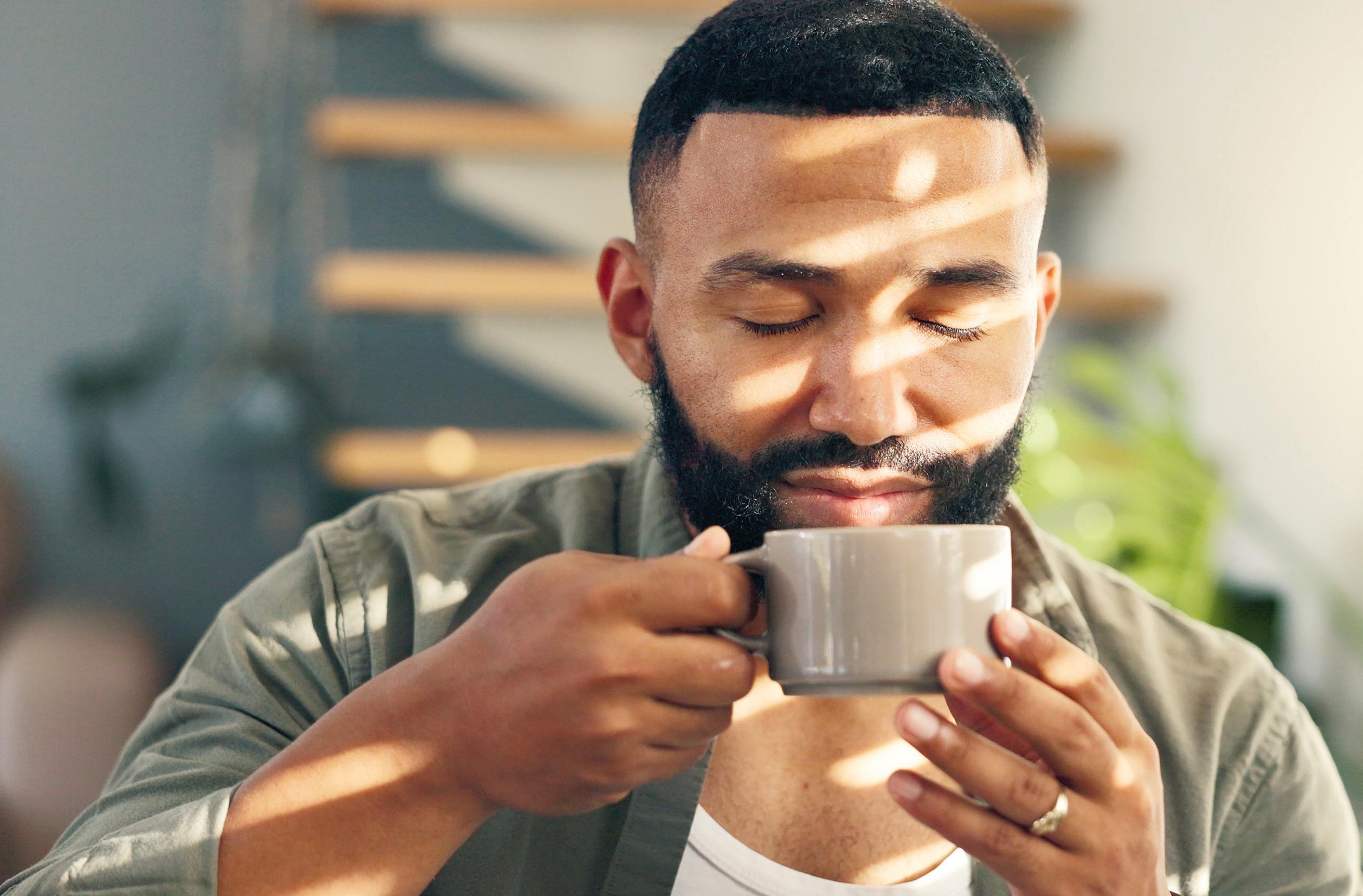
“At a basic level, we use it as an early warning detection system to keep us safe, so if we can’t smell things like smoke, gas or noxious odours, we can feel vulnerable and stressed,”
Dr Drummond says.
Not having your nose to guide you can also affect everything from personal hygiene and dietary habits to relationships and bonding with loved ones. You might struggle to decipher whether foods like meat and dairy are safe to consume, Dr Drummond says, while the joy of eating and socialising can be overshadowed by anxiety.
“Needing someone to help with seemingly simple tasks


(like checking for spoiled food) can make people question their independence,” she adds.
“Many of our patients also feel they’ve lost nostalgic smell memories and the ability to make new ones — with a partner or while travelling, for example.”
In short, losing this valuable sense can impact so many areas of someone’s world.
Nose exercises
How does a nose workout sound?
Dr Bahar-Fuchs’s research is exploring whether “olfactory training” (exercising your ability to identify and remember odours) could not only improve
a sense of smell but also memory and cognition.
“Sense of smell is processed in areas of the brain that are really closely linked with memory and other forms of thinking,” he says.
While his team’s Mind Your Nose Study focuses on older people concerned about changes in their thinking, it is never too early to flex your olfactory muscle.
“As I’m in the kitchen, I’ll pull out a few spices, close my eyes and take a few moments to see if I can smell which is which,” Dr Bahar-Fuchs says. “Maybe in the future we’ll do smell exercises much like we engage in Sudoku,
Try mindful smelling “(This) involves mindfully engaging your sense of smell,” Dr Drummond says. Take a few minutes to inhale the blooms on your walk or the aromas of a favourite brunch spot.
Practise scent recall
Play with identifying, memorising and discriminating between scents. “Pick a small number of, say, flavoured teabags and sniff them one after another, before mixing them with a bunch you haven’t smelled,” Dr Bahar-Fuchs says. “Then close your eyes, smell each in turn and decide whether they were part of the first set or not. You’re training your ability to recall recent smells.”
Protect your nose
Wordle or anything that’s about challenging the brain.”
As for future possibilities, Dr Bahar-Fuchs foresees exciting smell-generating tech that could one day turn our phones into DIY olfactory trainers, while Dr Drummond would love to see more understanding and support for those living with olfactory impairment.
Above all, the message is to appreciate the true value of our noses, for mental and physical wellbeing. The next time you are hit by the scent of rain on grass or the sweetness of a fresh bake, press pause and soak it in.
Adopt a common-sense approach. Wear personal protective equipment when exposed to strong odours or solvents, for example, and don’t smoke. “Smoking can negatively impact sense of smell, too,” Dr Mahmut says.
Be aware of changes
Smell and taste may be affected when you have a cold or other short-term ear, nose and throat issue. “But if you notice ongoing changes, it’s worth seeing a medical professional,” Dr Drummond says.

For the short term treatment of primary insomnia, characterised by poor quality of sleep, in adults aged 55 years or over. Primary insomnia is insomnia without an underlying medical cause or any other clear cause.
Here’s how to overcome some common cop-outs that may be getting in the way of the life you want to lead
Words Charlotte Brundrett
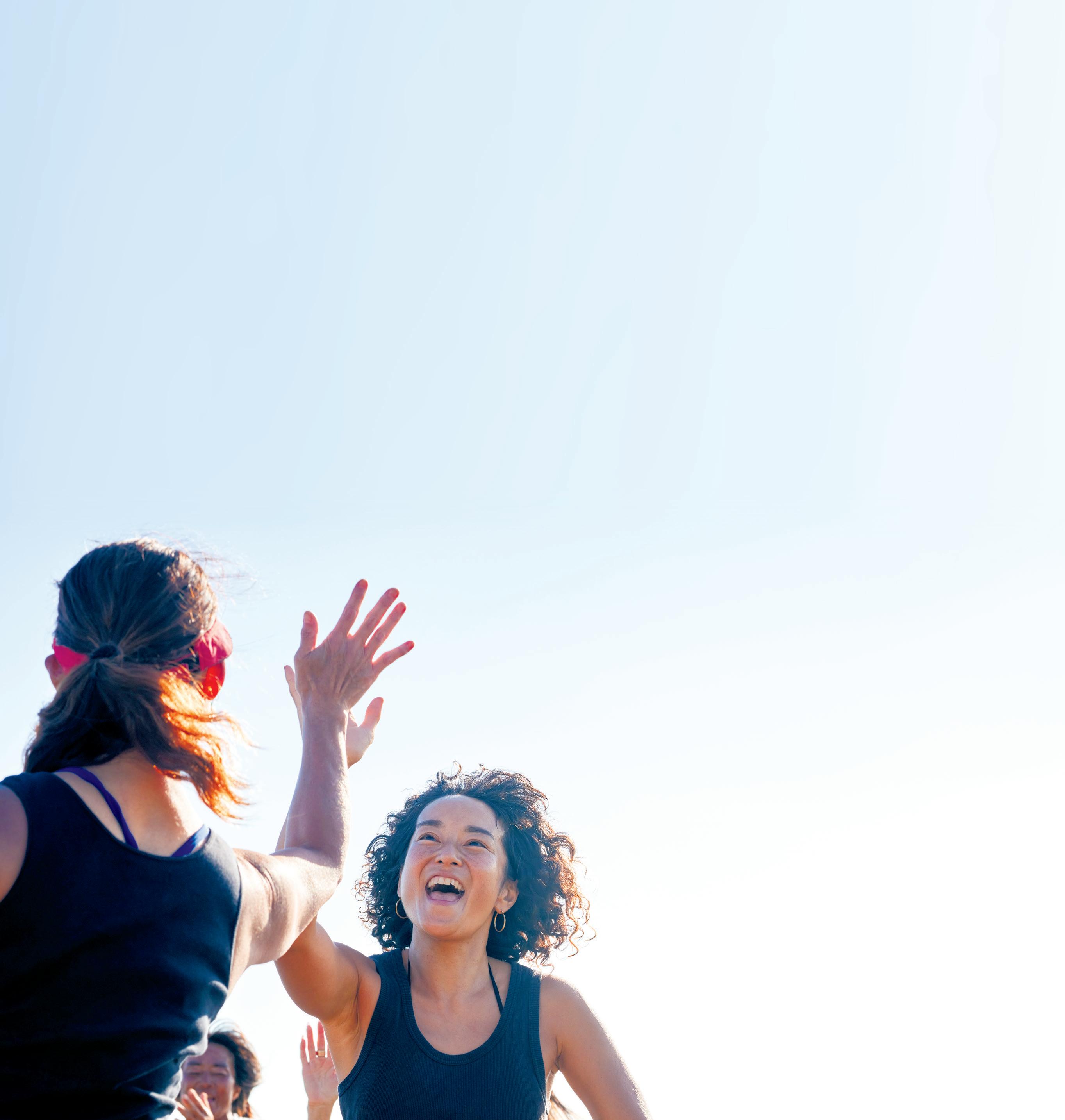
Whether you want to start eating more healthily, learn a new skill or start a fitness routine, the biggest hurdle you often face is yourself.
Many of us are creatures of habit that struggle with change and can easily find excuses that discourage new routines from forming.
Here are three common excuses — and tips from the experts on how to tackle them.
“I don’t have time”
Australians do live in a timepoor society. But instead of using this to justify why you can’t improve your lifestyle, try looking for more efficient ways of doing things to free up time for the things that matter.
A good place to start is at home. “People don’t realise how much time they waste every day doing mindless things like looking for clothing or their keys,” says professional organiser Anita Birges, founder of decluttering business Mise en Place.
“When everything at home is organised and has a place, you’re setting yourself up for a productive day because you’re not wasting valuable time.”
Anita suggests organising one room at a time to make the process less daunting.
A lack of time is a common excuse for failing to exercise.
But, as food blogger and pilates
and barre instructor Sophie Fisher says, fitness doesn’t have to involve time in the gym or even conventional exercise.
“A lot of people adopt the ‘all or nothing’ mindset, which can be really detrimental when trying to create new, healthy lifestyle habits. Striving for perfection often leads to burnout — they go too hard, too fast and can’t keep it up; it’s unrealistic,” Sophie says.
“Instead, you’re best to focus on the small wins. Introducing small, consistent changes will inevitably bring you closer to achieving those broader fitness goals, and these things don’t happen overnight.”
For Sophie, scheduling is key for anyone who wants to make fitness a priority. “I find scheduling my workouts helps to set me up for success. I’m not just making a mental note of when I want to work out, but physically blocking it out in my diary or digital calendar,” she says.
For those who are really time pressured, Sophie says incidental exercise could be the solution: “While I personally don’t believe it should entirely replace all workouts, incidental exercise can definitely assist in creating and maintaining a general level of fitness.”
She cites examples such as carrying the groceries inside, choosing stairs instead of the lift, and opting for walking meetings, instead of video meetings, with team members.
Also consider squats, table push-ups and stretches while waiting for your dinner to cook, going up and down the stairs while waiting for the water to boil, or heading to your local park to read a book instead of slumping on the couch.
“I’m too tired”
It’s hard to commit to new habits if you’re running out of steam, so getting enough sleep is vital. But that can be a challenge, especially for those raising families.
According to the Sleep Health Foundation, inadequate sleep impacts about 40 per cent of Australians. To break the cycle of sleep deficiency, we should recognise its importance for our wellbeing and make it a top priority, says respiratory and sleep specialist Dr Jeremy Goldin.
Dr Anastasia Suraev, senior research fellow at the University of Sydney’s Healthy Brain Ageing Program, says we need to recognise the non-negotiable nature of sleep in the same way we view showering or brushing our teeth.
“We need to stop thinking of sleep as a commodity and a lifestyle choice, but rather as the third pillar of health, together with nutrition and exercise,” Dr Suraev says.
“It’s really important to factor in adequate sleep — ideally seven to nine hours for adults — while maintaining regular sleep-wake hours so it’s the same time frame every day, which helps regulate your circadian rhythm.”
She says variables such as age, sex and chronotype (being a morning or night person) can

influence a sleep routine, while physical activity and a healthy diet can improve sleep quality.
“In order to break the cycle of being too tired, try implementing small, consistent changes,”
Dr Suraev advises.
Modern technology can also impact sleeping habits due to blue light exposure so she suggests setting limits of use.
Nothing compares to that exquisite feeling of motivation, but you can’t rely on it solely when overhauling your lifestyle.
Try adopting a positive mindset instead, says psychologist Dr Tim Sharp. It can encourage new habits to stick, creating a more lasting impact than motivation.
“A positive mindset lies in your attitude, but it can be strengthened by eating well, prioritising sleep, staying active, meditation and mindfulness, staying connected to loved ones and having fun,” Dr Sharp says.
Start small and reward yourself for any wins you make along the way, he says. If you stumble or fail at some point, “be gentle with yourself and practise selfcompassion”.
Hoping to spark a sense of motivation somehow? Try combining your new habit with something you look forward to.
You could watch TV while stretching, meet a friend while getting in your daily steps, or listen to your favourite podcast while tidying the house.

Mat pilates is a great place to start for beginners but make sure you strip it right back to the basics. Start with body-weighted exercises and take it slow. Focus on nailing your form — that’s the most effective way to build your strength.
Start in a four-point kneeling position with shoulders over wrists and hips over knees. Extend one leg long behind you, hovering off the mat, and then send your opposite arm long in front of you. At the same time, lower your fingers and toes towards the mat and then lift them straight back up without arching your lower back. 10-15 reps, both sides.

2Four-point hover with knee tap
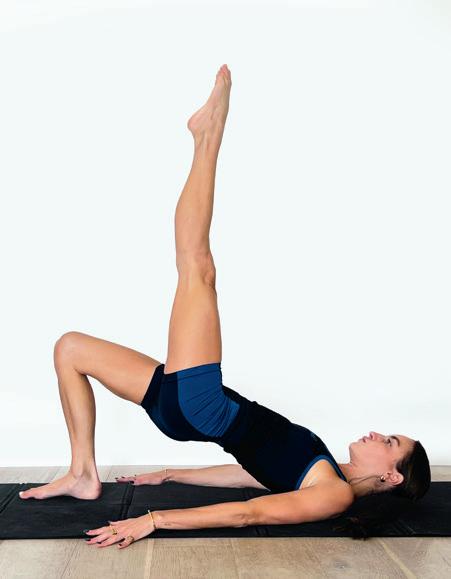
3Single leg hip bridge
Start lying down on your back with knees bent and feet flat on the mat, hip width apart. Lift your left leg up to tabletop and hold it there. Press your right foot into the mat to help lift your hips up and find your hip bridge. At the same time, extend your left leg to the sky. As you lower your hips back down to the mat, bend your right leg back into tabletop. 10-15 reps, both sides.
4Devise a plan
Make sure you start slowly and gradually build momentum. If you’re starting from scratch, aim for maybe two exercise days per week for the first couple of weeks, then increase from there. CATCH UP WITH A FRIEND WHILE
Start in a four-point kneeling position with shoulders over wrists and hips over knees. Tuck your toes under and lift up into a hover, keeping your back parallel to the mat. Tap your right knee towards your right elbow, then step it back to a four-point hover. Tap your left knee towards your left elbow and step it back to a four-point hover. 10-15 reps, both sides.
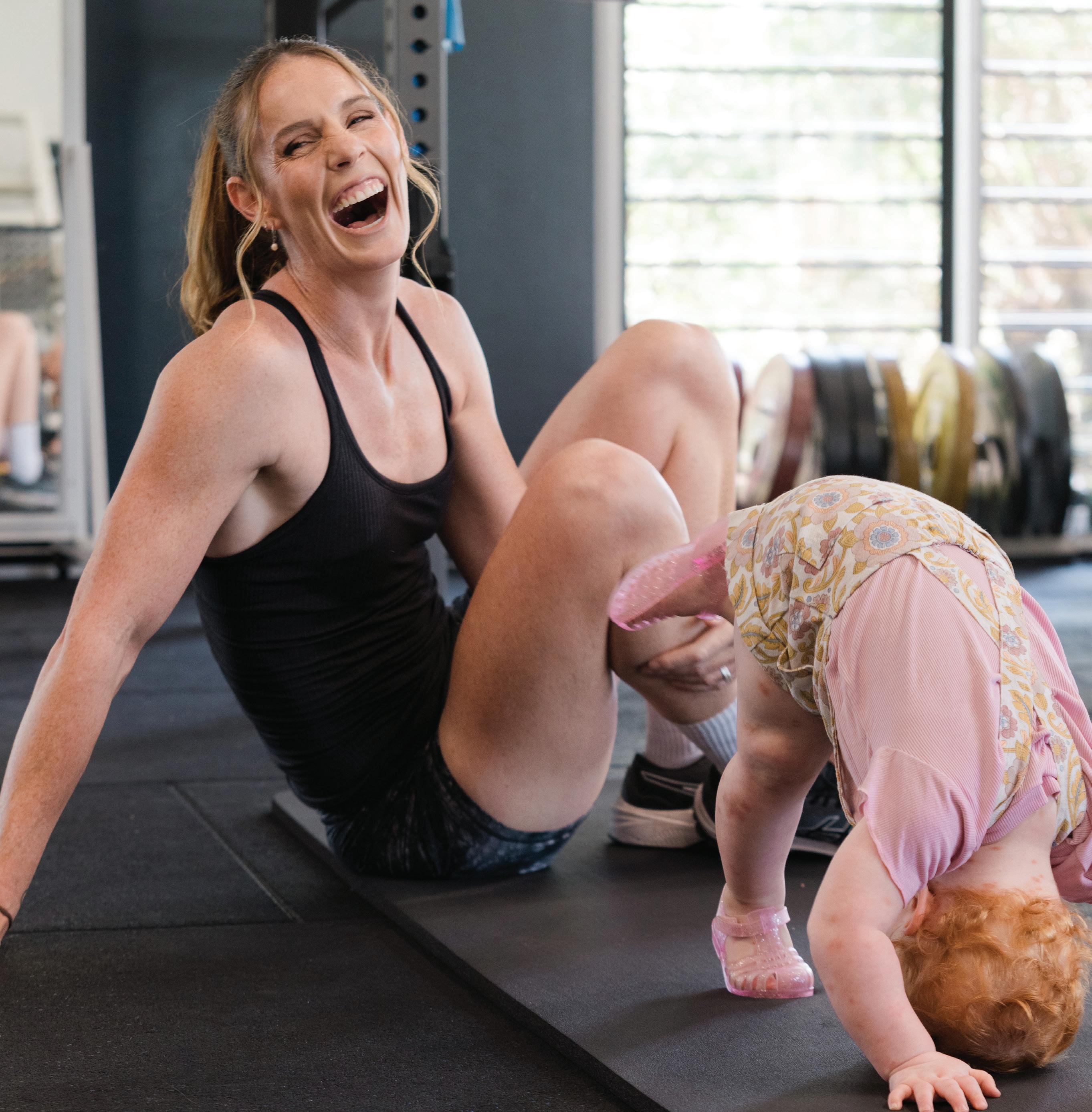

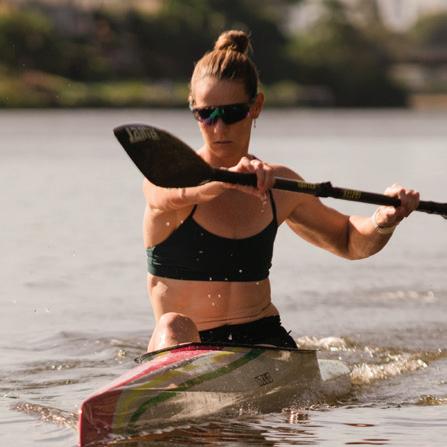
From
equine therapy to swimming with sea turtles, these nature-inspired escapes will stir the heart and soothe
Words Tianna Nadalin
It’s barely 6am when a clanging bell breaks the early morning serenity of Sugar Beach Ranch.
I slip out of the bell tent that has been my sleeping quarters for the past two nights and feel the grass dewy beneath my sandal-clad feet as my fellow Sweet Retreaters and I make our way to the beach for sunrise. We follow the shimmering coastline north, waves lapping at our feet, beams of golden light glistening along the horizon.
It’s this kind of enchanting experience Sugar Beach Ranch manager and Sweet Retreats founder Stevey Arena is inviting women to share.
Set on 24ha of native bushland in South Ballina, NSW, the former sugarcane plantation turned working horse ranch is the home of late music industry legend Chris Murphy, former manager of INXS.
After his passing in 2021, his daughter Stevey wanted to share the beauty of the property, which her father affectionately referred to as ‘nature’s playground’, with others.
‘Curated exclusively for women, by women, Sweet Retreats is where joy becomes a ritual and nature serves as our wellness sanctuary,’ Stevey says of the inspiration behind the nature-based immersions.
Among the experiences on offer across the three-day retreats are yoga classes, guided meditations, aura readings, art therapy, sand skin scrubbing, sound bowl healing and bonfire ceremonies. The centrepiece, however, is equine therapy and, as a city girl who has never spent any time around horses, the invitation to interact with (but not ride) the majestic animals is pure magic.
‘The bond between horse and human can be incredibly healing,’ explains equine-
therapy and sound
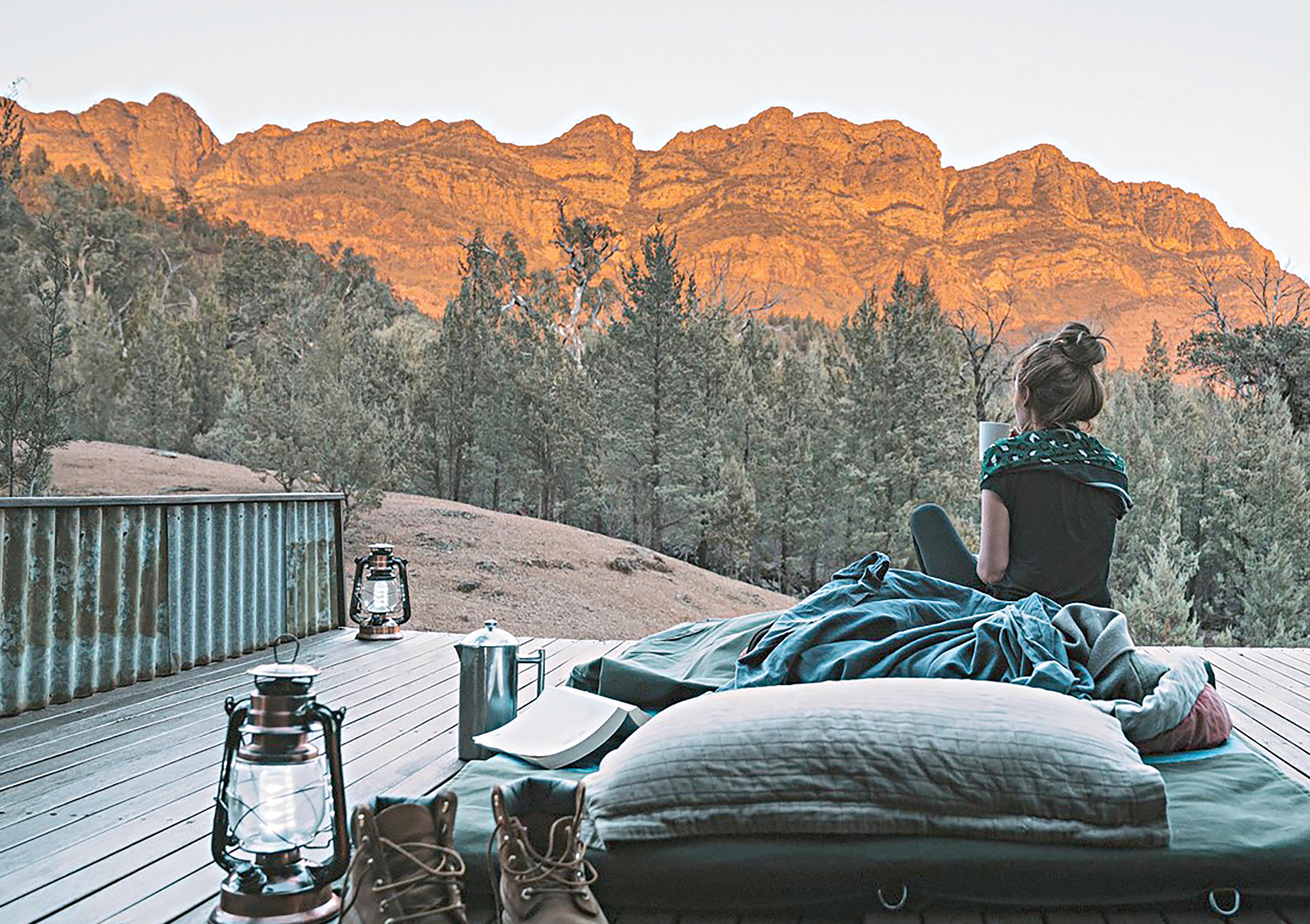

assisted therapist Maxime Willems, as she introduces us to our four-legged therapists.
‘Horses are highly intuitive animals and have an innate ability to mirror our emotions.’
I approach Oakley, a caramel-coloured gelding whose stoic, calming presence is immediately soothing. He turns to me, inviting me into his space, his big brown eyes peering into my soul and, for a surreal moment, everything else melts away.
That’s a recurring motif over the retreat, which serves as a gentle reminder of the beauty of slowing down,
reconnecting with nature and ourselves.
Each day begins with a communal breakfast while evenings feature poolside dining catered by Pip Sumbak (ex-MasterChef alum) and Wal Foster. Stevey’s vision is for Sugar Beach Ranch to be a place where women can find a deeper connection to the natural world, each other and themselves.
And as the sun sets on this sweet escape, it’s clear this is being beautifully realised.”
sugarbeachranch.com
Tianna Nadalin was a guest of Sweet Retreats.





1
Spot the locals at Arkaba Homestead, SA
Keep an eye out for eagles, emus, yellow-footed rock wallabies and red kangaroos at this luxurious retreat, which offers an enriching blend of comfort and adventure. Stay in the beautifully restored 1850s homestead, go on a safari drive or experience the area’s wild beauty on the spectacular Arkaba Walk. experiencearkaba.com
2
Slumber safari at Werribee Open Range Zoo, Vic Embrace your wild side with a sleepover at the zoo, home to lions, hippos, monkeys, cheetahs, gorillas and more. This luxurious adventure offers exclusive access to the zoo, including a twilight safari tour and behind-the-scenes animal encounters. Stay in eco-friendly lodges with savannah views, enjoy African-inspired cuisine and unwind by the campfire with a glass of sparkling wine. zoo.org.au/werribee

3
Wake to gira es at Jamala Wildlife Lodge, ACT
Want to wake up to a giraffe peering over your balcony? Or fall asleep next to a lion? Expect some pretty interesting house guests when you stay at this lodge, at the National Zoo & Aquarium. Enjoy gourmet dining, private tours and animal encounters, all designed to provide an unforgettable adventure that blends wildlife encounters with conservation efforts. jamalawildlifelodge.com.au
4
Swim with turtles at Lady Elliot Island Eco Resort, Qld The highlight of any trip to this Great Barrier Reef island is swimming with sea turtles. The eco resort offers guided snorkelling tours, providing an up-close encounter with these gentle creatures amid stunning coral reefs. ladyelliot.com.au
5Ride a camel with Camel Treks Australia, SA
Experience the serenity of the desert on a guided camel trek, exploring breathtaking landscapes and ancient trails. Whether you choose a four-day or nine-day expedition, each trek promises a profound connection with nature and a unique way to rejuvenate. Plus, the gentle sway of the camels and the vast, open skies contribute to a meditative experience that soothes the soul. cameltreksaustralia.com.au

Bold, Sunsmart Swimwear for Little Splashes, Big Adventures

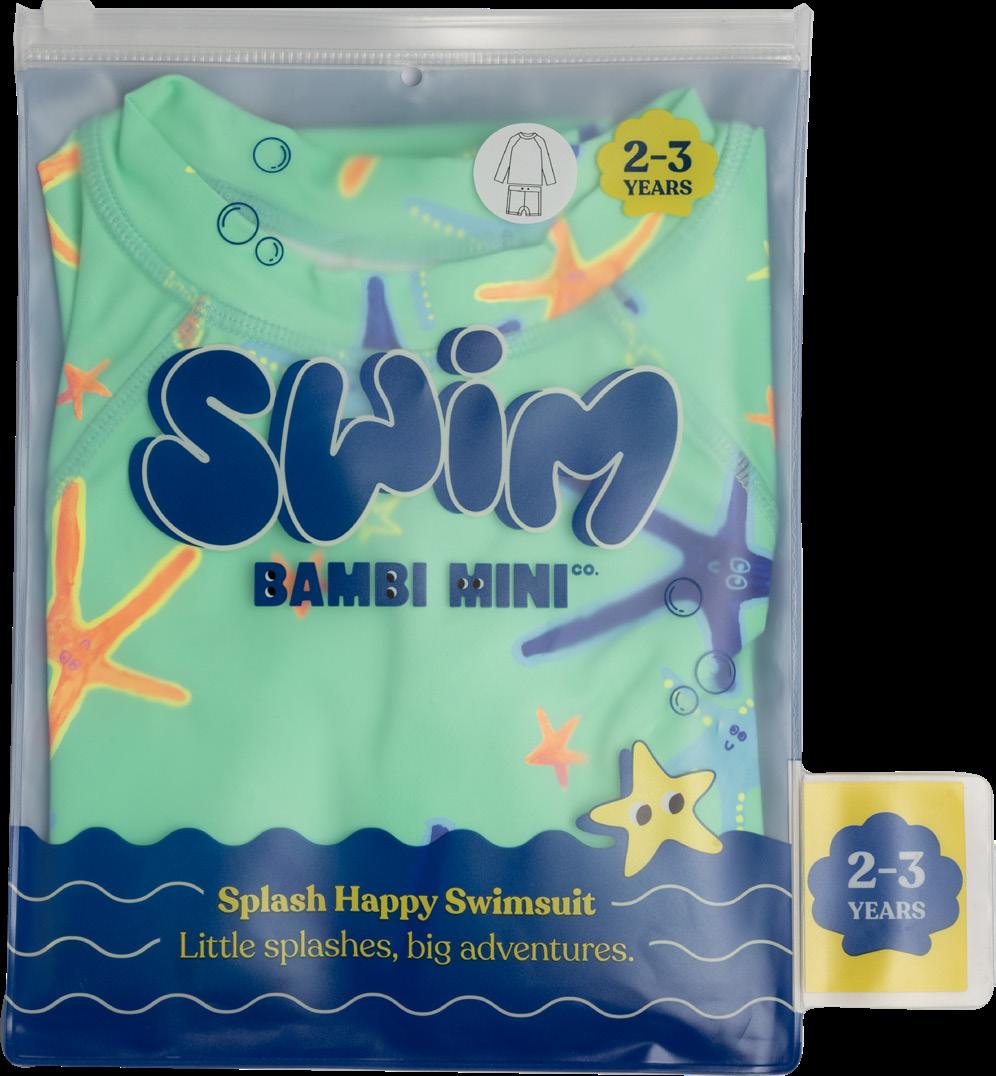





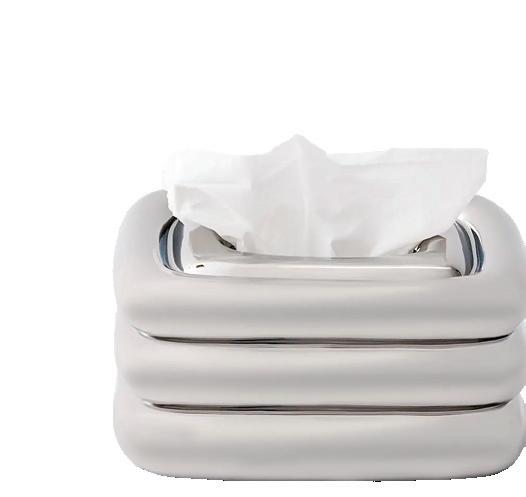
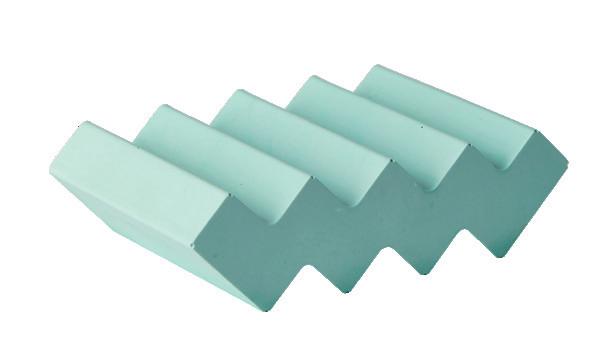
Add a dash of dopamine to your decor with daring shapes and vibrant hues
Compiled by Penny Harrison




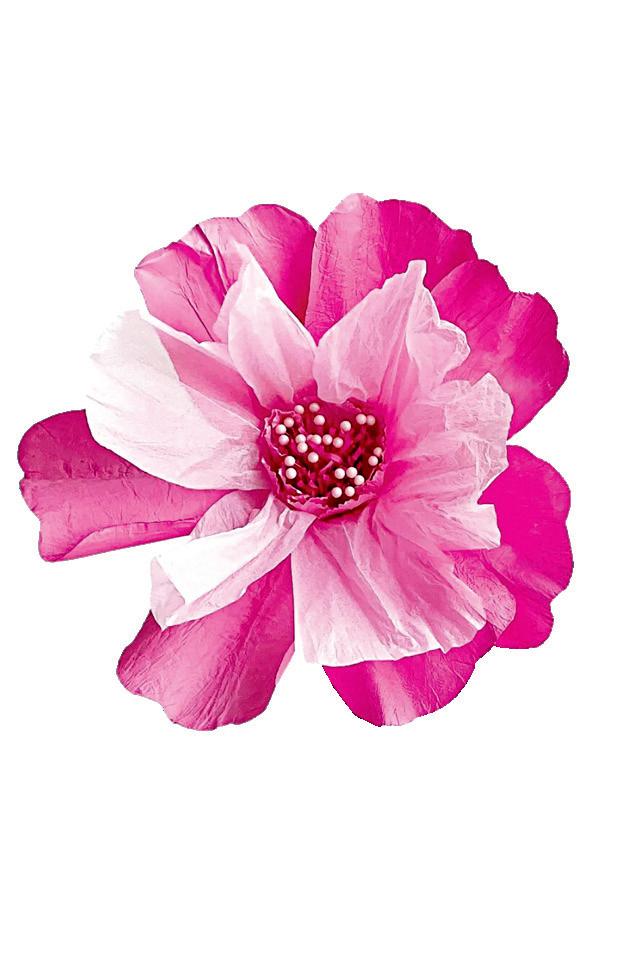
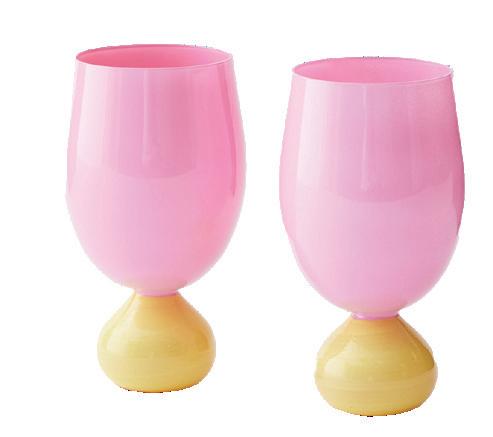

CLOCKWISE FROM TOP LEFT Prunkhallon mirror, $19, ikea.com; The Standard locker TV unit, $649, mustardmade.com.au; Mix and match pendant, $274, aboutspace.net.au; Moonlight paper flower, $44.95, crateexpectations.com.au; Aden wine glass (set of two), $49.95, gigiandtom.com.au; Skarpo outdoor armchair, $119, ikea.com; Tone planter, $130, lightly.com.au; Mateo jute rug, $599, sageandclare.com; Pastel grooved coaster/pen holder, $40, marthabrook.com; Layered ceramic tissue box cover, $34.95, gigiandtom.com.au; Ziggy stump, $390, fentonandfenton.com.au
Designed to complement our LG Fridge and Dishwasher ranges, the new range of LG InstaViewTM Ovens, Cooktops, and Rangehoods now enables you to offer the full LG ThinQ® smart kitchen experience to your customers.


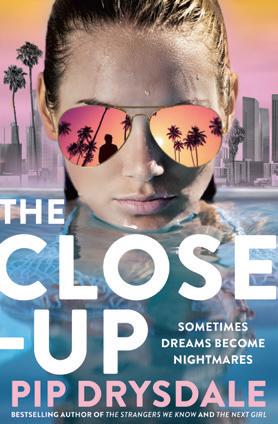
Pip Drysdale (HarperCollins)
RRP $34.99
LA-based writer Zoe desperately wants to write a bestseller, but the young author has a painful case of writer’s block and is heavily in debt. The excitement of moving from London to follow her dream dissipated long ago and now she faces having to return home a failure. That’s until she meets her old flame Zach Hamilton, a former bartender who now just happens to be one of LA’s hottest movie stars. The unexpected reunion reignites her passion for writing as she blends her literary aspirations with reality. The latest novel from Pip, whose bestsellers include The Paris Affair and The Next Girl, delves into the glamorous yet tumultuous world of celebrity life and the obsessive nature of stalkers. The Close-Up is an intriguing, fast-paced thriller that will have you wondering who to trust and just how far Zoe will go to attain her dream.
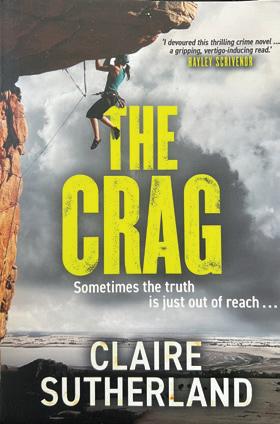
Claire Sutherland (Affirm Press)
RRP $32.99
Whether you have a newfound love of rock climbing thanks to the Paris Olympics or just love a gripping read (pardon the pun), Claire’s debut novel is a cliffhanger, combining the thrill of rock climbing with a murder mystery. Set in the shadows of the world renowned rock-climbing cliffs and outcrops of Mt Arapiles in Victoria’s Wimmera district, the story begins when paramedic and climber Skye discovers a woman’s body in a lime pit on a remote farm while walking her dogs. When clues point towards a rock-climbing accident, Skye is seconded to help police piece the case together. When a second body is found, the mystery widens. At the same time, Skye discovers cracks in her relationship with her partner Callum and begins to question her decision to start a family with him. Clip in for the ride — you won’t be able to put it down.
Jason Chongue (Murdoch Books) RRP $45
The author, an architect and gardener, knows the power of a plant and believes creating gardens gives us a chance to let the natural world enhance our mental and physical health. In his latest book, he provides blueprints on how to create a green space, no matter what the budget or space limitations. There are guides on how to create a tiny terrace garden with herbs and

Genevieve Gannon (Pantera Press)
RRP $32.99
Imagine a post-pandemic world where parents can access a new health service to create genetically modified (GM) children. These “perfect children” are born stronger and healthier with gene edit options including virus resistance, night vision and superhuman strength. Fast forward to the year 2057 when Adelaide, a political staff member trying to advocate for the rights of GMs who are now discriminated against for perceived unfair advantages, is trying for her own family. Adelaide, a secret GM baby herself, is forced to face her own fears and prejudices as she flees to Europe to rescue her own surrogate GM baby in the midst of a new pandemic. Genevieve’s latest novel paints an alarming future that may well become reality. From the ethics surrounding modified embryos to surrogacy and the power of inheritance, it’s one to keep you pondering.
citrus and how to transform suburban front lawns. If you are unsure what plants to select, there is a helpful guide where Jason shares his go-to plants and trees and how to group them together. Indoor greenery is also covered, with suggestions on colour combinations that work well together, plant placement and what pots to use in various spaces in the home.

Jaime Rose Chambers (Macmillan Australia)
RRP $39.99
Learn what to eat during perimenopause to help manage your symptoms. Jaime, who is a dietitian, shares plenty of tips and 50 nutritious recipes.
Steve Biddulph (Macmillan Australia)
RRP $36.99
Learn how to tap into your “wild creature mind” with the help of the high-profile psychologist’s new book. Steve examines the latest science research and shares advice on how to trust your instincts and reduce anxiety.
Kat John (Penguin Life)
RRP $36.99
An authenticity coach and podcaster, Kat tells the powerful story of how she overcame challenges including bulimia and drug addiction. Her first book is full of insights into how to live life with purpose.
Join the fight against motor neurone disease (MND) with a four-day road trip from Melbourne, taking in Bendigo, Warrnambool and Lorne. Form a team with family and friends, choose your car and help raise awareness and funds for FightMND. Chemist Warehouse is a gold partner of the event, named after former AFL player and coach Neale Daniher, who has the disease. fightmnd.org.au

Grafton Jacaranda Festival, NSW, October 25November 3
Head to Grafton while the town’s famous jacarandas are in full bloom and immerse yourself in a 10-day festival celebrating the natural wonder of the spectacular purple trees. It’s the festival’s 90th anniversary and celebrations include everything from fireworks, food trucks and parades to market stalls, rides and live performances. jacarandafestival.com
GC50 Run Festival, Gold Coast, November 23-24
Runners, mark your calendars: This Coolangatta event promises an unforgettable weekend of running, celebration and entertainment in a jaw-


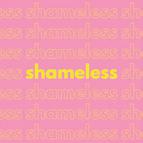
Secretly love celebrity news, trending influencers and reality TV? Listen in as these topics are wittily unpacked. Taylor Swift, Martha Stewart, Kylie Jenner — pick your episode of interest in a podcast for “smart people who love dumb stuff”.
dropping coastal setting. Races include the flagship 50km ultra marathon, a half marathon and a 10km twilight run. Choose your charity and raise money for a good cause. gc50runfestival.com.au
Hahndorf Christkindlmarkt, SA, December 13-15
Soak up the charm of a European-style Christmas market, but in summer, in the German-settled town of Hahndorf, in the Adelaide Hills. Pick up last-minute gifts, watch live entertainment, enjoy the food, drink and magical lights, and sing along to the night-time Christmas carols. Open 3-10pm. christkindlmarkt.au
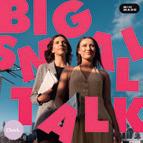
Interested in politics but also keen to keep up with the hottest celebrity gossip? Hosts Hannah Ferguson and Sarah-Jane Adams dish up weekly episodes covering the latest on global politics and juicy trending topics.

Get across it all: what to watch, what to read and what to listen to. This ABC podcast, hosted by Beverley Wang with special guests, will help you get a grip on all the latest talking points and give you the lowdown on how it affects your world.
Summer, Hobart, December 28January 4
Hobart’s waterfront is the backdrop to one of Australia’s biggest food and drink festivals. Fill your plate high with delicious offerings and relax to the sights and sounds of live music and entertainment as you join tens of thousands of people delighting in the state’s incredible cuisine and beverages. Market stalls, cooking demonstrations and dining events are part of the fun. tasteofsummer.com.au

Discover what’s hot and what’s not in the entertainment world as English hosts Richard Osman and Marina Hyde engagingly deliver their insights into the worlds of film, journalism and television.


It’s that time of the year to cultivate a moustache and raise money and awareness for life-changing men’s health projects. Simply sign up to the cause, shave at the start of the month and let your mo flourish. Your new facial hair will help start conversations about men’s health, and the funds you raise will aid important projects in the fields of mental health, suicide prevention and testicular and prostate cancer. au.movember.com
1 In what country was world-renowned ophthalmologist Fred Hollows, famous for his work in restoring eyesight, born?
2 What is the country code top-level internet domain for Australia?
3 Psoriasis affects which organ of the human body?
4 What is the tallest living terrestrial animal on earth?
5 In what month and season does the vernal equinox occur in the southern hemisphere?
6 Which intelligence and security service has the motto “Fidelity, Bravery, Integrity”?
7 What was Poland’s first independent, selfgoverning trade union, led by Lech Walesa?
8 Which Australian rock group was originally formed as The Farriss Brothers in 1977?
9 Who in 2021 became the first woman inducted into the Australian Football Hall of Fame?
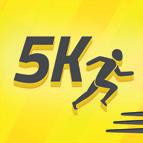
COUCH TO 5K RUNNER
Great for beginner runners. Alternate running with walking, gradually picking up the pace over eight weeks. Commit to 30 minutes a day, three times a week.

Run 3km, 5km, 10km or 21km in eight-week, audio-guided programs for all kinds of runners, from newbies to those set on a half marathon. Warm-ups and cooldowns included.

Reach your running goals with the huge range of audio-guided runs, training plans and wellness tips. Motivate yourself with challenges, log your progress and connect with other runners.
14 Which two Australian states did not use daylight saving time in 2024?
15 Anthophobia is the fear of what?
16 What is the world’s largest sand island?
17 Yes or no: Do obesity, diabetes and stress contribute to high blood pressure?
18 In which month does spring begin in the southern hemisphere?
19 In which French city did nicoise salad originate?
20 Which five countries have land borders with Switzerland?
21 Which sex symbol actress and singer once said: “Men are my hobby if I ever got married, I’d have to give it up”?
22 Patella is the anatomical term given to what part of the human body?
23 Which founding father of the US is credited with inventing bifocal eyeglasses?
10 In which country was the wine cask invented?
11 How many times was the iconic fashion designer Coco Chanel married?
12 Who was the ancient Greek goddess of spring and Queen of the Underworld?
13 What was Portugal’s currency before the introduction of the euro?
24 Daikon, French Breakfast and Cherry Belle are all varieties of which vegetable?
25 What is the average gestation period of female meerkats?
26 Which 1960s hit song by The Rascals had the opening lyrics: “It’s a beautiful morning, ah; I think I’ll go outside for a while and just smile”?
FBI (Federal Bureau of Investigation); 7 Solidarity; 8 INXS;
New Zealand; 2 “.au”; 3 Skin; 4 Giraffe; 5 September/spring;

DR MIKAELA CHINOTTI
Dentist and oral health promoter at the Australian Dental Association
As brushing only reaches about 60 per cent of tooth surfaces, we need to clean between our teeth to remove the other 40 per cent. We don’t do this enough. Australian Dental Association (ADA) surveys tell us 75 per cent of us rarely or never floss. But if we don’t floss, bacteria can build up. This may lead to tooth decay or gum disease, which has been linked to other health conditions including cardiovascular disease, type 2 diabetes and Alzheimer’s disease. The consequences of not flossing can be far-reaching.







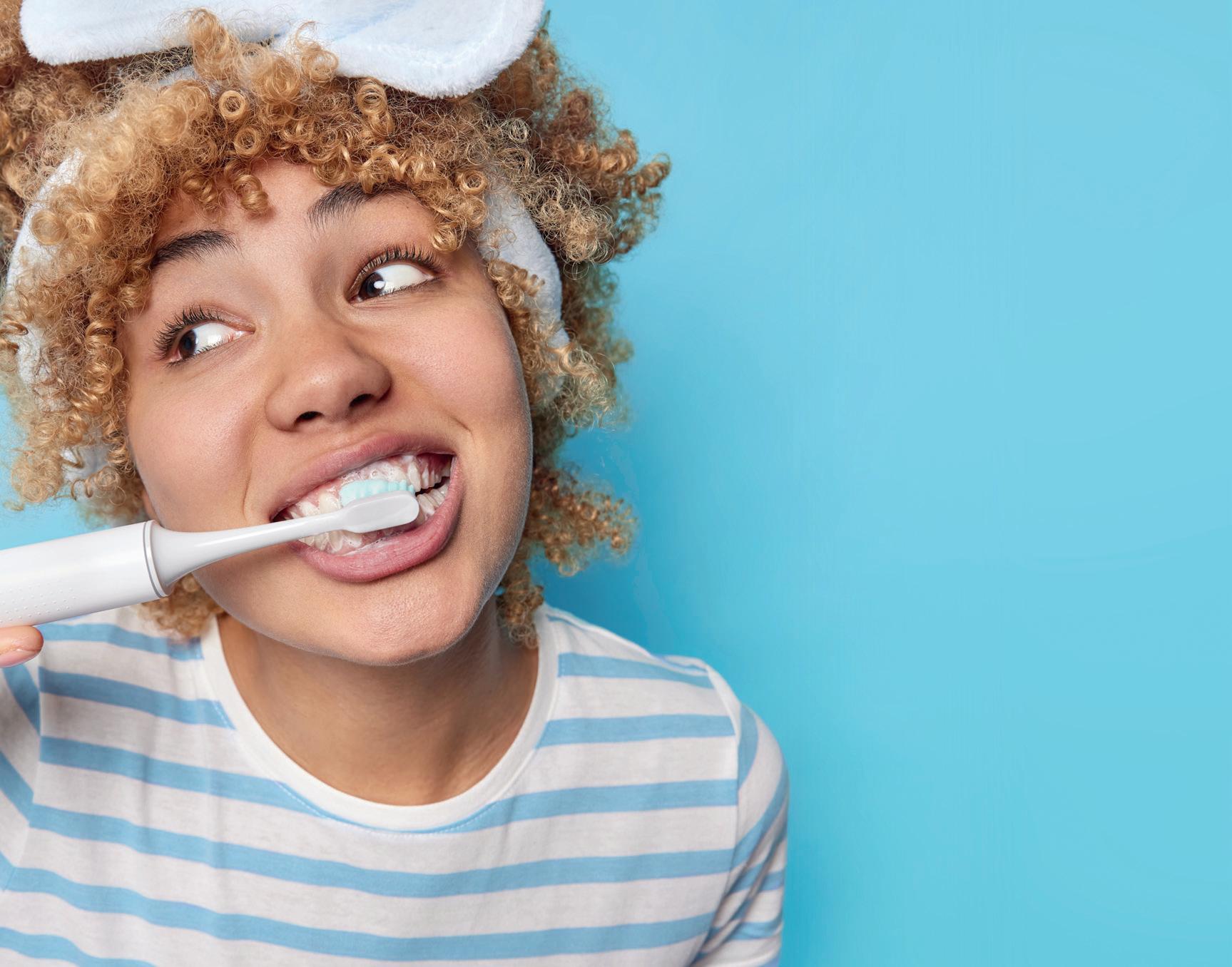
A conventional manual toothbrush or a powered toothbrush are the choices. Research shows that powered toothbrushes provide a better clean, however it does come down to how you use your choice of brush. Many people complete great cleaning with a manual toothbrush. An electric toothbrush can be a good choice if you have braces, gum disease or problems controlling a manual toothbrush. Always choose a toothbrush with soft bristles. And remember to change your brush every three months, or sooner if the bristles are damaged.
How often should I visit the dentist?
It used to be that dentists wanted to see us for check-ups every six months. But this has changed — it’s now recommended you visit regularly based on your dentist’s advice. This will depend on factors such as your dental health, past dental treatments, how you care for your teeth and other conditions that may be impacting your dental health, such as a dry mouth. Some people may need to go every three months while others may only need to go once a year.
If your son has ongoing bad breath even after ensuring he is maintaining good oral hygiene, he should head to the dentist for a check-up and possibly a professional dental clean. The dentist will make sure there are no conditions such as tooth decay or gum disease but also look at how
well your son is cleaning his teeth, and possibly provide advice on how this could be improved to help his breath. If bad breath continues, other causes should be explored. Options such as mouthwash or chewing gum can help in the short term but they will just be masking a larger problem.
Whitening toothpastes can work in removing bacteria and stains from the surface of your teeth but they do not tend to make a large difference to tooth colour. The ADA says most modern whitening toothpastes from reputable companies are a safe way to manage stains on the surface of the teeth between visits to the dentist. However, you will get a better whitening result by seeking treatment at your dentist, as they use whitening agents at higher concentrations, which have better results.
